
How Everything Became War and the Military Became Everything: Tales From the Pentagon
by
Rosa Brooks
Published 8 Aug 2016
As it happens, drone technologies improved dramatically just as the United States, struggling to respond to the threat of transnational terrorism after 9/11, began to perceive an increased need for low-cost, low-risk cross-border uses of force.11 Beginning in 2008, the United States began to make more frequent use of strikes from unmanned aerial vehicles. Most controversially, the United States has greatly increased its reliance on drone strikes outside of traditional, territorially bounded “hot battlegrounds.” Yet almost everything about U.S. drone strikes is shrouded in secrecy. For the most part, the government does not comment on or acknowledge reported drone strikes that take place outside of hot battlefields, and does not release lists of those targeted or killed. Senior Obama administration officials have offered oblique accounts of the drone strike program, but these have been at an extremely high level of generality. As a result, it is impossible to describe current practices or internal procedures with any certainty, and also impossible to know exactly what legal constraints U.S. officials believe exist, and whether and how these have changed in the last few years.
…
But given the lack of transparency around U.S. drone strikes, it is impossible to say whether any given strike (or the totality of strikes) satisfies these legal and ethical principles.19 Are all U.S. drone strikes “necessary”? Could nonlethal means of combating terrorism—such as efforts to disrupt terrorist financing and communications—be sufficient to prevent future attacks? Might particular terror suspects be captured rather than killed? Do drone strikes inspire more terrorists than they kill? Also, to what degree does U.S. drone policy distinguish between terrorist threats of varying gravity? If drone strikes against a dozen targets prevented another attack on the scale of 9/11, few would dispute their appropriateness or legality—but we might judge differently a drone strike against someone unlikely to cause serious harm to the United States.
…
Army, 259 Schweich, Thomas, 85 2nd “Dagger” Brigade Combat Team, 1st Infantry Division, 146–47, 148, 152 2nd Infantry Division, 182 Second Lateran Council (1139), 109 secrecy: of drone warfare, 117–18, 124, 278–79, 280, 284–85, 288 legitimate vs. illegitimate uses of, 104–5, 117, 128 overclassification of information and, 124–28 in traditional warfare, 117 Secretary of Defense, office of, 40 security clearances, 124–28 self-defense, right of, 24, 286, 402 military intervention and, 195, 221, 223, 249–51, 274, 275–76, 286, 288, 398, 408 necessity and proportionality in, 288, 405 self-determination, 231 Senegal, 84 Sensitive Compartmented Information Facility, 127 Sepoy Mutiny, 257 September 11, 2001, terrorist attacks, 10, 11, 28–29, 81, 83, 119, 249–50, 292–93, 294, 337–38 as acts of war vs. criminal acts, 219–24, 250, 275, 397 self-defense law and, 398 Serbs, Serbia, 205, 206, 348, 396 Shaka Zulu, 173 Shakespeare, William, 21, 185 Shamsi, Hina, 109 Shang Dynasty, 170 shaping (Phase Zero), of conflict, 7, 82, 143–44, 148–49 Sharia, 232 Shiite militias, 97 Sierra Leone, 27, 226, 229, 241, 242 Silver, Steven, 176 Snowden, Edward, 3, 130 social welfare programs, civilian, cuts to, 19–21, 322 social welfare programs, military, 19–21, 319–20 Soldier and the State, The (Huntington), 81 soldiers: blurred line between civilians and, 260 combatant immunity of, 195–96 cultural awareness of, 143–56 definition of, 258–60 evolving concept of, 10 intangible costs borne by, 15–16, 18 spouses of, 16–17 Solferino, Battle of (1859), 187–88, 229 Somalia, 12, 80, 226, 349 drone strikes in, 113, 294 piracy and, 40, 46, 50 U.S. military intervention in, 251 South Africa, 247 South Asia, colonialism in, 231 South Carolina College, 186 Southern Command, U.S., 72 sovereignty: counterterrorism and, 251 definitions of, 245–47 drone strikes and, 285, 289–90, 291 human rights and, 24, 193, 233, 234–53 international community and, 243 international law and, 227, 232–33, 339, 356, 407 9/11 attacks and, 249–51 war on terror and, 279–81 Soviet Union, 234 fall of, 265 Special Access Programs, 104 Special Operations Command, 3, 334, 352 special operations forces: covert activities of, 121–22 post-9/11 operations of, 120–21, 273, 349 special operations raids, 291 Spirit of the Laws, The (Montesquieu), 296 Srebrenica, Bosnia, massacre of Muslim civilians in, 26, 206–7, 209–10, 213–16, 347, 396 stability operations, 79, 83, 84–86, 91–92, 102–3 Stanford Encyclopedia of Philosophy, 170 State Department, U.S., 12, 71, 74, 84, 124, 258, 316 African Affairs Bureau of, 102 author’s job at, 27, 28, 53 budget of, 102, 318 Counterterrorism Office of, 89 Legal Adviser’s Office of, 243–44 Pentagon strategic communication programs criticized by, 89, 90–91 public diplomacy programs of, 89, 90 RAF and, 154–55 states, 35, 398 colonialism and, 230–31, 232 expanding numbers of, 262 failed and failing, see failed states as transient form of social organization, 229, 232 war and, 217–20, 224, 225, 230, 254, 297 state secrets doctrine, 299–300 Stele of the Vultures, 255 Stewart, Jon, 94 Stewart, Potter, 170 Still Too Fat to Fight, 321 strategic communication, 86–91, 94 Stromseth, Jane, 72 Sudan, 226, 309–11, 390 suicide bombers, 98, 140, 141 Sumeria, military in, 254–55 Sunni Awakening, 97 Supreme Court, U.S., Guantánamo rulings of, 58–59, 60–61, 410 surveillance, 355, 364 new rules needed for, 355 post-9/11 increase in, 303–4, 414–15 SWAT teams, 298–99 Syria, 12, 157, 226, 227, 229, 280, 344, 349 bombing in, 291 chemical weapons in, 248, 283, 314–15 civil war in, 248 U.S. drone strikes in, 107 U.S. military intervention in, 251 Syrian civil war, 261 Taliban, 29, 33, 55, 56, 59, 60, 74, 75, 98, 99, 100, 121, 232, 277, 278, 279, 293, 329, 331 Tanzania, bombing of U.S. embassy in, 83, 223 targeted killings, 27, 103, 108, 115–16, 118, 119, 122–23, 124, 134, 196–97, 266, 273, 274, 276, 284, 286, 343, 363, 383, 409 new rules needed for, 354–55 secrecy surrounding, 355, 364 see also drone strikes technological change, history of, 264 10th Special Forces Group, 17 terrorists, terrorism, 12, 41, 295, 339 drone strikes on, see drone strikes unconventional tactics of, 120–21 Terry, James, 148 Thirty Years War, 229, 261 Thomas Aquinas, Saint, 185 Thonden, Yodon, 235 3–2 “Stryker” Brigade Combat Team, 7th Infantry Division, 147 Through the Looking-Glass (Carroll), 287 Tilly, Charles, 217–18, 230 Tokyo, firebombing of, 138, 190, 365 Tokyo tribunals, 192, 193, 215 Too Fat to Fight, 321 Tora Bora, Battle of (2001), 119 torture, 193 Bush administration’s definition of, 58, 199–200, 201–3, 204 legal prohibition on, 200–201 Obama’s banning of, 34 U.S. use of, 33, 58, 60–61, 199–200, 320–21, 322, 363, 410 “Tragedy of the American Military, The” (Fallows), 15 Training and Doctrine Command (TRADOC), 150 Tripoli, 48, 49 Truman, Harry, 329 Tueller, Matthew, 154–55 Tunis, 48 Turing Test, 139 Turkey, 26 Turse, Nick, 147–48 Twitter, 349 Uganda, 27, 84, 85 author in, 235–36, 237–38, 241 Lord’s Resistance Army in, 176–81, 235–40, 241, 242 Ukraine, 280 high-tech warfare vs. low-tech in, 333 uncertainty, geopolitical: as increased by U.S. counterterrorism actions and legal arguments, 284–89 interconnectedness and, 261–67 rule of law as undermined by, 283 Uniform Code of Military Justice, 197–98, 202 Union Army, 185, 187 United Kingdom, 248 United Nations, 190, 232–33, 262, 365, 366 Dutch peacekeeping troops of, 215, 396 politics and, 192 Responsibility to Protect doctrine and, 247 United Nations Charter, 35, 190, 191–92, 231–32, 233, 250, 251, 290, 339, 342–44, 366 military intervention and, 194–95, 234–35, 243–44, 246, 248–49, 252, 286, 343–44 United Nations General Assembly, 247, 394, 407 United Nations Security Council, 194–95, 215 military intervention and, 234–35, 243–44, 246, 248–49, 252, 286 paralysis of, 291 veto powers in, 289 United States, 234 Barbary pirates and, 47–49 China’s relations with, 349 core values of, 63–64, 100, 101, 203, 295, 353–54 detention and interrogation policies of, 33, 54–61, 276, 284, 355, 363, 410 geopolitical power of, 266–67 hubris of, 97 idealism of, see idealism, American “imminent threat” as defined by, 286–87 increasingly unpredictable behavior of, 284 military of, see military, U.S.

Drone Warfare: Killing by Remote Control
by
Medea Benjamin
Published 8 Apr 2013
In Iraq and Afghanistan, years of war with high-tech drones did not lead to victories. Regarding drones strikes in Pakistan, counterinsurgency expert David Kilcullen and former Army officer Andrew McDonald Exum wrote in a 2009 opinion piece: “Every one of these dead noncombatants represents an alienated family, a new desire for revenge, and more recruits for a militant movement that has grown exponentially even as the drone strikes have increased.299 They concluded that it would be in the best interest of the American and Pakistani people to declare a moratorium on drone strikes in Pakistan. New York Times reporter David Rohde, emerging from seven months as a Taliban hostage in Afghanistan and Pakistan, wrote that his kidnappers’ hatred for the United States was fueled in part by civilians being killed by drones.300 “To my captors,” he wrote, “they were proof that the United States was a hypocritical and duplicitous power that flouted international law.”
…
Drone Attacks in Pakistan get Mixed Response,” The Los Angeles Times, May 2, 2010. 191 “Drones Are Successful Tool in War on Terror,” The Wall Street Journal, January 9, 2010. 192 Chris Woods, “Number of CIA Drone Strikes in Pakistan Hits 300,” TBIJ, Oct 14, 2011. 193 Scott Shane, “C.I.A. Claim of No Civilian Deaths From Drones Is Disputed,” The New York Times, August 11, 2011. 194 “The Year of the Drone,” Counterterrorism Strategy Initiative, NewAmerica.net. 195 Chris Woods, “Number of CIA Drone Strikes in Pakistan Hits 300,” TBIJ, October 14, 2011. 196 Saeed Shah and Peter Beaumont, “US Drone Strikes in Pakistan Claiming Many Civilian Victims, says Campaigner,” The Guardian, July 17, 2011. 197 Pir Zubair Shah, Sabrina Tavernise and Mark Mazzetti, “Taliban Leader in Pakistan Is Reportedly Killed,” The New York Times, August 8, 2009. 198 Jane Mayer, “The Risks of the C.I.A.’s Predator Drones,” The New Yorker, October 26, 2009. 199 Carlotta Gall, “Pakistani Militant Chief Is Reported Dead,” The New York Times, June 4, 2011. 200 Salman Masood and David E.
…
Unlike in Pakistan, where the CIA has presidential authorization to launch strikes at will, each strike in Yemen requires White House approval and intended targets are drawn from an approved list of militants deemed by US intelligence officials to be involved in planning attacks against the West.110 In November 2002 the CIA conducted its first drone strike in Yemen, killing Al Qaeda leader Abu Ali Al-Harithi, a suspect in the 2000 bombing of the USS Cole, and five others. Under the Obama administration, there have been about fifteen strikes in Yemen as of January 2012, although it is not clear how many were carried out by drones or by conventional aircraft and cruise missiles. A drone strike in May 2010 mistakenly killed a key mediator between the Yemeni government and Al Qaeda in the Arabian Peninsula, Jaber al-Shabwani, the deputy governor of Maarib.

Dirty Wars: The World Is a Battlefield
by
Jeremy Scahill
Published 22 Apr 2013
See National Security Service Nuhaas, Ibn, 137 Nur, Mohamed Ahmed, 494 Nur, Sheikh Aden Mohamed, 277 Obama, Barack, 169 and Afghanistan, 270, 284 and Afghanistan, surge in, 328–329 and Afghanistan strategy, 282 and African policy, 298 and al Qaeda, 248, 255–257, 294, 320–321 and al Shabab in Somalia, 271–272, 272–273 and AQAP bomb plot against US, 390 and assassination operations, 253 and assassination policy, 353–354 and Awlaki, Anwar, 237–238, 243, 354 and Awlaki, Anwar, hunt for, 401 and Awlaki, Anwar, killing of, 499–500, 501 and Awlaki, Anwar, strikes against, failure of, 314–316, 453–454 and Awlaki, Anwar as top terrorist, 269 and Awlaki, Nasser, letter from, 326–327 and bin Laden at Abbottabad compound, 435, 436, 437, 440, 441, 442–443, 444, 445, 446–447, 449, 450, 451–452 and bin Laden raid, protest over, 458 and Blackwater-CIA-JSOC covert action, in Pakistan, 252–253 and Bush, drone strike policies of, escalation and preservation of, 250, 251 and Bush-era counterterrorism policy, expansion of, 261, 516–517, 520 and Bush-era covert wars, expansion of, 248, 256, 259–260 and Bush-era detention policy, expansion of, 296 and Bush-era torture and detention programs, dismantling of, 248 cabinet selection of, 246 and Cheney, 247, 320 and CIA interrogation and torture/techniques, 245 and CIA-JSOC divide, 350–351 and clandestine action, 282–283 and counterinsurgency, in Afghanistan, 328–329 and counterterrorism policy, 246–247, 249–250, 295–297 and counterterrorism policy, expansion of, 261 and counterterrorism policy, reframing of, 297–298 and counterterrorism policy, SOFs role in, 355 and covert wars, US, 301–302 and Davis incident, 403, 404, 423, 424, 425 and drone program, 515–516 and first annual budget request, 298 foreign policy of, 244–247 and Global War on Terror, 468 and Guantánamo, and Yemeni prisoners, repatriation of, 323 and Guantánamo, and Yemeni prisoners, transfer of, 256, 257–258, 261 and Guantánamo prison break, 254 inauguration of (second term), 513 interrogation policy of, 261 and Israel, and right to defend against missile attacks, 519 and JSOC, 329 and JSOC, and clandestine action, 282 and JSOC, expansion of authority of, 297 and JSOC, in Somalia, 295–296 and JSOC, support for, 355 and JSOC, transformation of, 259 and JSOC-ization of US counterterrorism policy, 350–351 and JSOC operations, intensification of, 350 and JSOC/SOFs, admiration for, 276 and “just war” theory, 353 and kill/capture operations, 245–246 and Maersk Alabama, hijacking of, 274–276 and Majalah massacre, 308 and McCain, 245–246, 256 and McChrystal, resignation of, 349 and Musharraf, 245 Nobel Peace Prize speech of, 301–302 and piracy industry in Somalia, 482–483 Republicans’ attack on, 320–321 and Saleh, Ali Abdullah, 256, 257–258 and secret prisons/black sites, 294, 296, 473 and Shabwani incident, 357–358 and Shaye, 399 and Signature Strikes, 249, 352 and smart war, 515 and SOFs, increased presence of, 354–355 and Somalia, dual-track policy in, 474–475, 476, 477 and spy programs, in Pakistan, 250 and targeted killings/drone strikes, 295–296, 473 and targeted killings/drone strikes, and al Qaeda recruitment, 494 and targeted killings/drone strikes, expansion of, 513–514 and targeted killings/drone strikes, final authority over, 351–352 and targeted killings/drone strikes, in Pakistan, 248–250, 255, 352 and targeted killings/drone strikes, in Yemen, 78 and targeted killings/drone strikes, legality of, 517–518, 519–521 and US citizens, assassination strike against, 314–316, 325–326 and US citizens, assassination strike against, and Awlaki lawsuit against, 369–374, 392 and US embassy bombings, 236, 277 West Point speech of, 301 and Yemen, downplay of US role in, 321–322 and Yemen, expansion of SOFs in, 261–263 and Yemen, focus on, 269, 285–287 and Zinjibar siege, 464 Obama, Michelle, 513 Obama administration and Afghanistan war, 258 and al Qaeda, in Yemen, 268 and AQAP, 321 and clandestine action, 282–283 and detainee policy, legality of, 519 and detainee policy, violation of, 453 and Saleh regime, weakening of, 465 and SOFs, expansion of, 283–284 and Yemen, assistance to, 386 O’Connell, Thomas, 141 Office of Combating Terrorism, 117 Office of the Assistant Secretary of Defense for Special Operations/Low-Intensity Conflict, 170 Olson, Eric, 282, 442 Omar, Mullah Mohammed, 167, 174 160th Special Operations Aviation Regiment (aka Night Stalkers), 51, 443 O’Neill, John, 63 O’Neill, Paul, 13 Operating Base Alpha, 139 Operation Black Hawk, 120–121 Operation Cannonball, 176 Operation Desert Shield, 102 Operation Desert Storm, 102 Operation Eagle Claw, 49, 50, 103 Operation Enduring Freedom, 23, 104 Operation Gothic Serpent, 125 Operation Green Quest, 46, 70 Operation Honey Badger, 49 Operation Infinite Reach, 126 Operation Just Cause, 53 Operation Neptune Spear, 440, 441 Operation Red Dawn, 141 Operation Troy, 499 Oversight, 16–17, 23–24.
…
Epilogue 513 “A decade of war”: Transcript, “Inaugural Address by President Barack Obama,” January 21, 2013. 513 US drone strike: Reuters, “U.S. Drone Strike Kills Four in Yemen: Sources,” January 21, 2013. 513 more people had been killed: According to available estimates, in 2012 drone strikes killed at least 246 people in Pakistan, and at least 185 people in Yemen. In Somalia, there were only two confirmed strikes—although operations in Somalia are especially likely to go underreported—killing at least a dozen people. See Chris Woods, Jack Serle, and Alice K. Ross, “Emerging from the Shadows: US Covert Drone Strikes in 2012,” Bureau of Investigative Journalism, January 3, 2013.
…
As al Qaeda regrouped in Yemen, it began to carry out a series of small-scale actions, primarily in Marib Province, the site of the 2002 US drone strike that killed Harithi, including suicide attacks against oil and gas facilities. In March 2007, they assassinated the chief criminal investigator in Marib, Ali Mahmud al Qasaylah, for his alleged role in the drone strike. In an audiotaped message, Wuhayshi’s deputy, Qasim al Rimi, announced that Wuhayshi was officially the new head of al Qaeda in Yemen. In the message, Rimi vowed the group would continue to take revenge on those responsible for the US drone strike. Two weeks after Rimi’s tape was released, suicide bombers attacked a convoy of Spanish tourists in Marib, killing eight of them, along with two Yemeni drivers.

Spies, Lies, and Algorithms: The History and Future of American Intelligence
by
Amy B. Zegart
Published 6 Nov 2021
He ended up burying the poison vials in the banks of the Congo River.57 After 9/11, paramilitary operations turned toward renditions (secretly seizing suspected terrorists abroad who are wanted by the United States and transporting them to third party countries for detention and interrogation outside the judicial process)58 and drone strikes.59 As we’ll discuss later, it is getting harder to know just where the CIA’s role ends and the military’s role begins. Both conduct drone strikes against suspected terrorists—sometimes in the same country, sometimes against the same target, sometimes on the same team.60 This much, however, is clear: drone strikes have been a major tool of the past three presidential administrations. According to one expert study, President George W. Bush authorized approximately fifty drone strikes in Yemen, Pakistan, and Somalia during his presidency, which killed nearly three hundred terrorists and nearly two hundred civilians.61 The Obama administration carried out more than five hundred drone strikes in those countries, killing more than three thousand terrorists and nearly four hundred civilians over eight years.62 And in the first two years of the Trump administration, approximately two hundred strikes were carried out against targets there, killing an estimated one thousand people.63 None of these figures count drone strikes on the “hot battlefields” of Iraq, Afghanistan, or Syria.
…
Launches Secret Drone Campaign to Hunt Islamic State Leaders in Syria,” Washington Post, September 1, 2015, https://www.washingtonpost.com/world/national-security/us-launches-secret-drone-campaign-to-hunt-islamic-state-leaders-in-syria/2015/09/01/723b3e04-5033-11e5-933e-7d06c647a395_story.html. 61. Micah Zenko, “Obama’s Embrace of Drone Strikes Will Be a Lasting Legacy,” New York Times, January 16, 2016, https://www.nytimes.com/roomfordebate/2016/01/12/reflecting-on-obamas-presidency/obamas-embrace-of-drone-strikes-will-be-a-lasting-legacy. Casualty figures vary widely. For more on how to understand differences in casualty estimates, see “Civilians and Collateral Damage,” Lawfare, https://www.lawfareblog.com/civilian-casualties-collateral-damage. 62. Zenko, “Obama’s Embrace of Drone Strikes.” 63. Nicholas Grossman, “Trump Cancels Drone Strike Civilian Casualty Report: Does It Matter?”
…
“We can hold true to our values, and in so doing advance those values abroad,” he declared in a major foreign policy campaign speech.89 Obama was determined to end America’s wars in Iraq and Afghanistan, wind down the CIA’s controversial detention and interrogation program, and combat terrorism. Meeting all three goals left few options. Obama turned to drone strikes because, as he put it, “doing nothing is not an option” and “by narrowly targeting our action against those who want to kill us … we are choosing the course of action least likely to result in the loss of innocent life.”90 Three days after taking office, he authorized his first CIA drone strikes in northwest Pakistan. Obama ended up dramatically expanding the targeted killing program, authorizing ten times more drone strikes against suspected terrorists than his Republican predecessor, George W. Bush.91 The Enduring Allure of Covert Action Three reasons explain the enduring allure of covert action.92 First, covert action offers presidents a third option in between doing nothing and sending in the Marines.
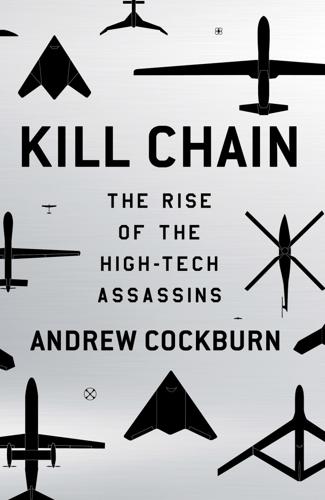
Kill Chain: The Rise of the High-Tech Assassins
by
Andrew Cockburn
Published 10 Mar 2015
It would have been feasible to strike the car while en route, and indeed this was a routine drone strike tactic. Just six days earlier, for example, there had been two separate attacks on two cars, one of which had employed another favored CIA drone tactic, the “double tap,” in which a second missile is reserved for rescuers, and had killed eight people. But the targeters at Langley and the pilots in Nevada (CIA drones are flown by air force personnel at Creech Air Force Base) held off. They were awaiting a more lucrative target—the crowd of men converging on the bus depot to which the car was headed. After all, it was an established point of drone-strike doctrine that any “military aged male” (from thirteen up) in the company of terrorists could themselves be deemed a terrorist in the absence of explicit intelligence to the contrary.
…
The intense fusillade of drone-launched missiles continued, roughly 1 every 3 days in 2010 (117 overall), but drone strikes declined to half that rate in the following year. Confusingly, although the majority of strikes were now aimed at Pakistan’s allies, the so-called good Taliban at peace with Islamabad while at war in Afghanistan, ISI (Pakistani military intelligence) claimed to a Western journalist in the spring of 2010 that they were supplying the targeting information for all drone strikes. In this Machiavellian environment, ISI, intent on regaining the control of Afghanistan it had lost in 2001, was playing a devious game.
…
As is the custom in Pashtun culture: Kathy Gannon, “Timing of U.S. Drone Strike Questioned,” AP Exclusive, August 2, 2011. Although the ominous buzz of drones was always in the air: Akbar Ahmed, The Thistle and the Drone (New York: HarperCollins, 2013), p. 85. However, the land in question: Gannon, op. cit. In Lahore, a burly American named Raymond Davis: Mark Mazzetti, The Way of the Knife (New York: Penguin, 2013), p. 264. The man they selected to kill: Ahmed, op. cit., p. 82. “The CIA was angry”: Gannon, op. cit. After all, it was an established point of drone-strike doctrine: Jo Becker and Scott Shane, “Secret ‘Kill List’ Proves a Test of Obama’s Principles and Will,” New York Times, May 29, 2012.
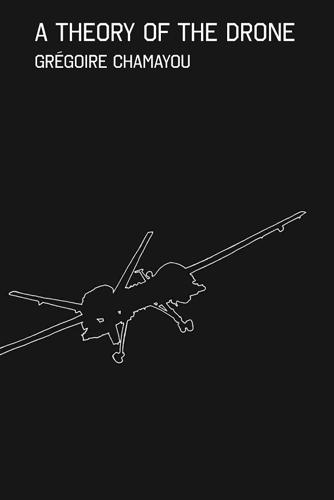
A Theory of the Drone
by
Gregoire Chamayou
Published 23 Apr 2013
Department of Defense, Report to Congress on Future Unmanned Aircraft Systems, April 2012, www.fas.org/irp/program/collect/uas-future.pdf. 9. Chris Woods, “Drone Strikes Rise to One Every Four Days,” Bureau of Investigative Journalism, July 18, 2011, www.thebureauinvestigates.com/2011/07/18/us-drone-strikes-rise-from-one-a-year-to-one-every-four-days. 10. “Obama 2013 Pakistan Drone Strikes,” Bureau of Investigative Journalism, January 3, 2013, www.thebureauinvestigates.com/2013/01/03/obama-2013-pakistan-drone-strikes. 11. “Flight of the Drones: Why the Future of Air Power Belongs to Unmanned Systems,” The Economist, October 8, 2011. 12.
…
Now, those two sets of rules are radically different.”3 This artistic blurring has puzzled many jurists.4 They tell politicians they must declare whether it is a matter of war or of legitimate self-defense; they must choose. However, the administration refuses to do that because the consequence of resolving ambiguities in the framework of reference would entail the prohibition of the present drone strikes or would drastically limit their lawfulness. The problem is that those drone strikes are hard to fit into established legal frameworks. For anyone seeking to justify them legally, there are only two possible options—either the law of armed conflicts or else that of law enforcement5 (which can loosely be defined as the law relating to the police, but which can be extended to include “military and security forces operating in contexts where violence exists but falls short of the threshold for armed conflict”).6 To seize upon a first approximation of the difference between those two models, we must consider what it is that distinguishes the prerogatives of a soldier on the battlefield from those of a police officer on patrol when it comes to the use of lethal force.
…
Joint Publication 3-24, Counterinsurgency Operations, October 5, 2009, xv. 31. Dunlap, “Making Revolutionary Change,” 60. 32. Ibid. 33. Ibid., 59. 34. Andres, “The New Role of Air Strike.” 35. Joshua S. Jones, “Necessary (Perhaps) but Not Sufficient: Assessing Drone Strikes Through a Counterinsurgency Lens,” Small Wars Journal, August 2012, smallwarsjournal.com/blog/necessary-perhaps-but-not-sufficient-assessing-drone-strikes-through-a-counterinsurgency-lens. 8. Vulnerabilities 1. Louis de Baecker, De la langue néerlandaise (Paris: Thorin, 1868), 40. 2. Felice, Encyclopédie ou Dictionnaire universel raisonné des connaissances (Yverdon, 1781), III:570. 3.

Predator: The Secret Origins of the Drone Revolution
by
Richard Whittle
Published 15 Sep 2014
Some argued that outrage over drone strikes was a source of recruitment for Al Qaeda. The Obama administration defended targeted killings as necessary to prevent further attacks by Al Qaeda and its allies. “Very frankly, it’s the only game in town in terms of confronting or trying to disrupt the Al Qaeda leadership,” CIA Director Leon Panetta said in May 2009. But over the next couple of years, the debate over the legality and morality of drone strikes heated up and came home. In 2010 the UN Special Rapporteur on Extrajudicial, Summary, or Arbitrary Executions denounced U.S. drone strikes and the secrecy surrounding their conduct as an “ill-defined license to kill without accountability.”
…
Beyond those two statements, Executive Order 12333 offered no specifics on how to define assassination or how to interpret or apply the ban on U.S. employees engaging in it. The Deputies Committee decided drone strikes against Al Qaeda leaders would be acts of self-defense, not assassinations, but the deputies could only offer their opinion on such a complex legal issue. The NSC Principals Committee would have to decide whether they were right. The principals would also have to decide who would authorize any drone strikes conducted, who would foot the bill for the Hellfire Predators, and whether an officer of the military or of the CIA would actually pull the trigger.
…
The New America Foundation, a think tank that began using open media and what it called “U.S. sources” to track drone strikes beginning in 2004, estimated that the CIA conducted about 50 strikes in Yemen and Pakistan under President George W. Bush and more than 400 during President Barack Obama’s first term, launching 122 in 2010 alone. As many as thirty-three hundred Al Qaeda, Taliban, and other militants were killed as a result, the foundation estimated, including more than fifty senior terrorist leaders. Initially, the CIA drone strikes raised little controversy in the United States, and public opinion polls showed that most Americans supported them.

Vertical: The City From Satellites to Bunkers
by
Stephen Graham
Published 8 Nov 2016
The image emphasises, above all, how the racist mechanisms through which imperial power constructs humans to be of differential value between a notional ‘us’ in the ‘homeland’ and a threatening and racialised enemy – a ‘them’ – have been switched through drone killing from a largely horizontal to a vertical frame (although one organised though satellites, communications systems and military technologies that are horizontally organised across continental scales).15 One example is Israel’s switch from a permanent military occupation of Gaza to a policy of dominating the area from above through drone surveillance and strikes. Although it is difficult to disentangle Israeli drone strikes from assaults by artillery, helicopters and warplanes, the Gazan human rights group al-Mezan calculates that drone strikes killed at least 760 Gazans between 2006 and 2012.16 During its 2012 ‘Pillar of Defence’ bombardment of Gaza, 36 of the 162 Palestinians killed died through drone strikes, and a further 100 were seriously injured. Of those 36 killed, two-thirds were civilians.17 In analysing such violence, architectural researcher Eyal Weizman invokes Edward Said’s influential critique of the tradition of Western ‘Orientalism’ – the construction of an imaginary, primitive and exotic Other in the Middle East and Asia to justify violent Western colonialism and militarised control.18 Weizman argues, however, that Israel’s approach to Gaza now involves a vertical – rather than a traditionally horizontal – form of Orientalism.
…
This perspective is combined, however, with an almost complete absence of knowledge about, and media coverage of, those on the ground unlucky enough to get in the way of the Hellfire missiles fired down upon them from the sky.26 In northern Pakistan the mysterious machines flying far above have entered local folklore: the term ‘I will drone you’ has even entered day-to-day conversation as a morbid joke.27 Research efforts are also starting to reveal the impacts of drone strikes on the people and communities below. Like the artists behind #NotABugSplat, Stanford University’s Living Under Drones project has recently challenged the dominant narratives surrounding drone strikes. The Stanford group document in detail the deep psychological trauma of whole communities living with the persistent threat of instant and unknowable death and destruction from usually invisible vehicles far above. Beyond the deaths and injuries they cause, the Stanford team argue, ‘US drone strike policies cause considerable and under-accounted-for harm to the daily lives of ordinary civilians.’
…
One example is Sadaullah Wazir, a teenager and former student from the village of Machi Khel in Mir Ali, North Waziristan. He lost both of his legs and one of his eyes in a September 2009 drone strike on his grandfather’s home. ‘Before the drone strikes started, my life was very good’, he relates to the Stanford team, I used to go to school and I used to be quite busy with that, but after the drone strikes, I stopped going to school now … Two missiles [were] fired at our hujra [home] and three people died. My cousin and I were injured. We didn’t hear the missile at all and then it was there … Now I have to stay inside … Sometimes I have really bad headaches … [and] if I walk too much [on my prosthetic legs], my legs hurt a lot.
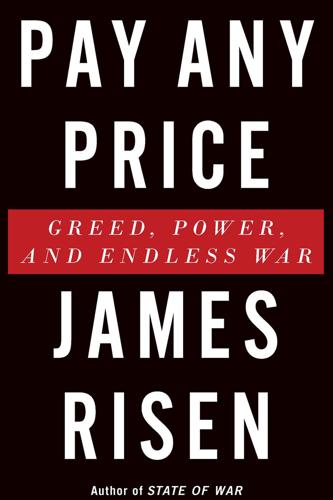
Pay Any Price: Greed, Power, and Endless War
by
James Risen
Published 15 Feb 2014
Those figures include between 411 and 884 civilians—with somewhere between 168 and 197 children among them. The vast majority of the drone strikes—316—have been conducted during the Obama administration. The Obama administration acknowledged in 2013 that four American citizens had also been killed in drone strikes overseas, including some who were not intended targets. That admission highlighted the fact that the government was choosing the targets of its drone strikes with secret standards of evidence. There was no legal due process provided to the intended targets, even for American citizens. As the drone strikes have intensified under Obama, international opinion has finally begun to turn against them.
…
The U.S. government insisted that the drone strike killed a Taliban commander, but villagers later told investigators that the drones had attacked a meeting of local elders gathered to negotiate a dispute over a chromite mine. Many of those killed were men who were both local elders and heads of large families. Their deaths triggered yet another round of anti-American protests in Pakistan. Confusion and angry finger-pointing over the strike reverberated in the United States and Pakistan for a few days, but eventually quieted down. Meanwhile, the drone strikes continued unabated, killing suspected terrorists and civilians alike.
…
Bush, in fact, Barack Obama has had a love affair with drones. By 2012, the CIA had conducted six times more drone strikes in Pakistan during the three years of the Obama administration than the agency had conducted under the entire eight years of George W. Bush, according to the Bureau of Investigative Journalism, a British journalism group that has reported extensively on American drone campaigns in Pakistan and other countries. By May 2013, there had been a total of 368 American drone strikes in Pakistan since 2004, killing between 2,541 and 3,533 people, according to the journalism group. Those figures include between 411 and 884 civilians—with somewhere between 168 and 197 children among them.
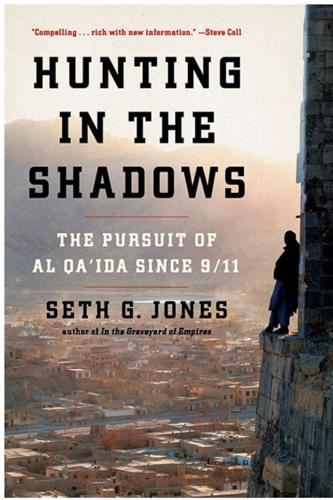
Hunting in the Shadows: The Pursuit of Al Qa'ida Since 9/11: The Pursuit of Al Qa'ida Since 9/11
by
Seth G. Jones
Published 29 Apr 2012
Before leaving Abbottabad, Major Abbott wrote a poem about his experience in the city: Oh Abbottabad we are leaving you now To your natural beauty do I bow Perhaps your winds [sic] sound will never reach my ear My gift for you is a few sad tears I bid you farewell with a heavy heart Never from my mind will your memories thwart.33 The pursuit of al Qa’ida did not end with bin Laden’s death. In June 2011, al Qa’ida’s external operations chief, Ilyas Kashmiri, who had advised David Headley, was killed in a drone strike in South Waziristan. In August another drone strike killed Atiyah abd al-Rahman al-Libi, al Qa’ida’s general manager, who served as a conduit between al Qa’ida’s affiliated groups and its leadership. In September 2011 the United States killed Anwar al-Awlaki in northern Yemen. And later in 2011 a drone strike in Pakistan killed Jude Kenan Mohammad, an American who was part of the North Carolina jihad cell that planned attacks against the U.S. Marine base in Quantico, Virginia, but who had fled to Pakistan in late 2008.34 The third wave was over, thanks to several factors.
…
As his nom de guerre indicated, he originally hailed from Somalia, and he had advanced in al Qa’ida’s propaganda outfit to head operational planning.14 He was killed by a U.S. drone strike in Pakistan in December 2009. As a token of his dedication, Zazi gave Bangash a camera, a laptop, and cash for Somali.15 Zazi, Ahmedzay, and Medunjanin were then transported to an al Qa’ida training camp in South Waziristan. Unlike the expansive training camps in Afghanistan before the September 11 attacks, such as Derunta and al-Farouq, the al Qa’ida camps in Pakistan around this time tended to be small and were not well populated. They were also easier to abandon quickly if there was advance notice of a Pakistani raid or U.S. drone strike. After several days of weapons training, the three men left South Waziristan.
…
“A lot, if not most, of the injuries resulting from the spy planes are a result of the negligence of the brothers who don’t want to change their lifestyle and abandon simple things that every sane person would try to avoid.”1 The pace of drone strikes had increased under CIA director Leon Panetta. With the support of the White House and Pentagon leadership, CIA officials believed that drone strikes were having a dramatic impact on al Qa’ida. As with most of America’s successful efforts against al Qa’ida since September 11, the drone campaign involved several U.S. intelligence agencies, which recruited human assets in villages, intercepted electronic communications, and analyzed satellite and other imagery.

Area 51: An Uncensored History of America's Top Secret Military Base
by
Annie Jacobsen
Published 16 May 2011
Revealing Ambassador Hull to be the central organizing player in the drone strike exposed the Department of State as having a hand in not just the espionage game but targeted assassination as well. Surprisingly, little fuss was made about any of this, despite the fact that diplomats are supposed to avoid assassination plots. In political circles, Ambassador Hull was greatly embarrassed. He refused to comment on his role in what signaled a sea change in U.S. military assets with wings. The 2002 drone strike in Yemen was the first of its kind in the war on terror, but little did the public know that hundreds more drone strikes would soon follow.
…
A drone wing, like a U-2 detachment or a squadron of Oxcarts, involved building more Predators and Reapers, training drone pilots, creating an Air Force wing, building secret bases in the Middle East, hooking up satellites, and resolving other support-related issues. From 2003 to 2007 the number of drone strikes rose incrementally, little by little, each year. Only in 2008 did the drones really come online. During that year, which included the last three weeks of the Bush administration, there were thirty-six drone strikes in Pakistan, which the Air Force said killed 268 al-Qaeda and Taliban. By 2009 the number of drone strikes would rise to fifty-three. Since the Air Force does not release numbers, and the CIA does not comment on being involved, those numbers are approximate best guesses, put together by journalists and researchers based on local reports.
…
“put a weapon on a target within minutes”: Ibid. 19. By 2009 the number of drone strikes would rise to fifty-three: http://www.longwarjournal.org/pakistan-strikes.php; these numbers vary. Peter Bergen and Katherine Tiedemann are considered the authorities on the subject of drone strikes. The pair keep track of numbers and provide analysis for organizations including New America Foundation and the New Republic magazine. 20. “These are just the assets we know about”: This is because when missiles are fired it is often the work of the CIA, and CIA drone strikes are not made public. As per my interview with Pentagon officials, “That we can’t confirm or deny.”
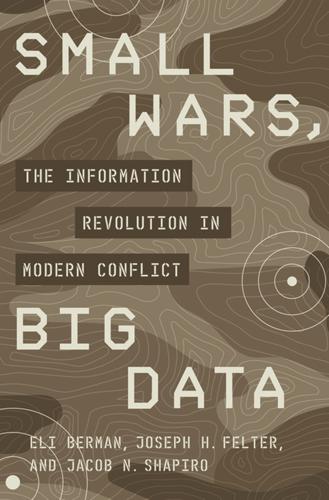
Small Wars, Big Data: The Information Revolution in Modern Conflict
by
Eli Berman
,
Joseph H. Felter
,
Jacob N. Shapiro
and
Vestal Mcintyre
Published 12 May 2018
Nor do they deny terrorist entities the ability to organize and train, as the record from Iraq, Syria, Libya, Yemen, Pakistan, and Afghanistan makes clear. Second, when intelligence fails, drone strikes endanger civilians. All too often a drone strike intended to target a key HVT instead targets a wedding party or other gathering of noncombatants. On 16 March 2017, for example, a 500-pound bomb dropped from a U.S. UAS platform reportedly struck a mosque in Jinah, a village in the Aleppo province of Syria, killing 46 civilians crowded inside. So drone strikes are problematic. They risk incurring civilian casualties, which generate an expected backlash and reduced popular support, which in turn reduces information flow.41 Johnston and Sarbahi are careful to note that they cannot rule out this backlash effect.
…
Given the small number of places being targeted by the drone program we would simply have an insufficient sample to establish the treatment-control contrast. Moreover, imagine that a particular region, because of some institutional quirk, was allowed a sufficiently high number of randomized drone strikes (treatments) and potential targets that weren’t struck (controls) to generate a precise estimated effect of drone strikes. Could we extrapolate from that region with the quirky institution to infer what we should expect the effect of treatment to be in other places, with different institutions? Probably not. Doing so would be like using the relationship between movie ticket sales and house prices in Beverly Hills to understand the broader U.S. real estate market.
…
In medical trials, it is considered unethical to withhold a drug from the control group (i.e., those not receiving it) once one believes the treatment works. The U.S. government is not capacity constrained in drone strikes, at least not once the target is under sufficient surveillance to decide that a strike is worthwhile, and officials do not order strikes unless they strongly believe the target is of high value. Withholding a drone strike for research purposes (or, perish the thought, applying one for research purposes) necessarily fails a basic ethical test.24 So, RCTs are valuable but very often out of the question.

Top Secret America: The Rise of the New American Security State
by
Dana Priest
and
William M. Arkin
Published 5 Sep 2011
In Yemen, Obama took advantage of the political void caused by the popular uprising against the regime in June 2011 by secretly ordering a dramatic increase in drone strikes against leaders of the terrorist group there, al-Qaeda in the Arabian Peninsula (AQAP). The Yemen strikes were considered bold by international legal norms not only because the United States was not at war with Yemen but because, in the absence of a Yemeni government, Obama did not seek its approval. The unilateral move symbolized just how comfortable the new president had become with remote-control warfare. Obama’s unprecedented use of drones began shortly after he took office, when he ordered an increase in lethal drone strikes in Pakistan. The strikes were facilitated by a coordination center set up near the border post not far from Peshawar, where Pakistanis sit alongside U.S. and British intelligence.
…
The Arizona, California, New York, North Dakota, and Texas Air National Guards now also take part from their home bases. Although those bases are close to civilian cities, too, no secret location speaks more powerfully to the evolution of Top Secret America than the one in Virginia where the managers of the drone strikes sit. Targeted killings—critics call them assassinations—have been conducted by the U.S. government for a decade, and drones have played a large part in the continuation and frequency of such activities. Armed Predators and Reapers have become the weapons of choice for killing individual terrorist leaders in foreign lands.
…
In Yemen, where the government of Ali Abdullah Saleh had agreed to allow the CIA and JSOC to operate, authority was delegated to commanders in the region. In Pakistan, however, in August 2010, after a number of civilians had died in drone attacks and the public there began to grow more vocal in its opposition to them, CIA director Leon Panetta announced that he would personally approve every drone strike. The director’s input had not been required since the first year after 9/11. The CIA process for putting a person on the hit list begins at Langley headquarters. There, analysts and operatives in the Counterterrorism Center (CTC) pore over reports from informants and foreign intelligence services, as well as intercepts from the National Security Agency, whose interpreters and analysts have transformed voice files collected from sensors into English-language transcripts.

Homeland: The War on Terror in American Life
by
Richard Beck
Published 2 Sep 2024
BACK TO NOTE REFERENCE 13 Jeffrey Bachman, “The Obama Administration May Be Guilty of War Crimes,” Guardian, Nov. 5, 2013, www.theguardian.com/commentisfree/2013/nov/05/obama-administration-drone-strikes-war-crimes. BACK TO NOTE REFERENCE 14 Micah Zenko, “Obama’s Final Drone Strike Data,” Politics, Power, and Preventive Action, Center for Preventive Action, Council on Foreign Relations, Jan. 20, 2017, www.cfr.org/blog/obamas-final-drone-strike-data. BACK TO NOTE REFERENCE 15 Josh Gerstein, “Obama’s Muddy Transparency Record,” Politico, March 5, 2012, www.politico.com/story/2012/03/obamas-transparency-stumbles-073606.
…
Between January and April 2010, Obama and his lawyers decided that assassinating Awlaki was legal. The National Security Council signed off on the decision, and Awlaki was placed on Obama’s notorious “kill list.” He was killed in Yemen via drone strike on September 30, 2011, executed by a country that had never charged him with any crime, while living in a country with which the United States was not at war. Two weeks later, another drone strike killed Awlaki’s sixteen-year-old son, Abdulrahman. The Obama administration said he was not the intended target, that he had simply been in the wrong place at the wrong time, but the former White House press secretary Robert Gibbs put the blame for Abdulrahman’s death on his dead dad: “I would suggest that you should have a far more responsible father if they are truly concerned about the well-being of their children.”
…
The AUMF gave the president permission to strike against “those nations, organizations, or persons” that had “planned, authorized, committed, or aided” the attacks on New York and Washington, but it did not specify who or what any of those nations, organizations, or persons were. Instead, Congress said that the president could determine who was responsible, and who would have to be punished, all on his own.[3] Since the passage of the AUMF, the U.S. military has engaged in combat in twelve countries. It has also conducted special operations in four, drone strikes in seven, counterterrorism training exercises in forty-one, and other forms of police and border force training in nearly eighty.[4] A war launched to avenge an attack committed by a couple dozen people with less than half a million dollars in funding quickly came to span much of the globe. Who is the enemy?

The Unknowers: How Strategic Ignorance Rules the World
by
Linsey McGoey
Published 14 Sep 2019
He insisted, for example, that death tolls from US drone strikes were far lower than many scholars of US military policies believe, stating in 2016 that between 64 and 116 civilians were killed by drone strikes during his tenure as president. This claim is questionable on many counts. For one, as journalist Spencer Ackerman writes, the count is ‘incomplete, leaving out the civilian toll from drone strikes in Afghanistan, Syria and Iraq. Nor did the administration go into detail about where the strikes occur.’ Ackerman adds that many drone strikes were an ‘anonymous method of killing’ known as signature strikes.
…
The clustered approach presumes that one’s physical presence in a region of terrorist activity is sufficient grounds to deem any individual collateral damage. Civilian death counts are little more than ceremonial posturing in such a situation; an effort to massage public tensions by making US military actions seem more defensible than they actually are. Obama can’t say truthfully that no more than 116 civilians died by drone strikes when his administration’s official policy was to kill targets without knowledge of their personal identity. At the same time, Obama isn’t quite lying in the traditional sense, because he also can’t say with any degree of precision exactly how many more than 116 civilians were killed by drones during his incumbency.
…
Part of this invisibility has been the tendency to see Brexit as the kneejerk reaction of the poor, rather than a jingoistic affirmation of white British identity spearheaded by the wealthy. See S. Virdee and B. McGeever, 2017. ‘Race, crisis, Brexit.’ Ethnic and Racial Studies, doi: 10.1080/01419870.2017.1361544. 15 Spencer Ackerman, 2016. ‘Obama claims US drone strikes have killed up to 116’ (The Guardian, July 1). See also C. Friedersdorf, 2013. ‘Dianne Feinstein’s outrageous underestimate of civilian drone deaths’ (The Atlantic, February 11); E. Schweiger, 2015. ‘The risks of remaining silent: International law formation and the EU silence on drone killings.’
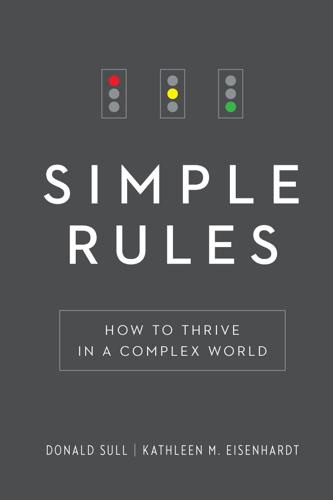
Simple Rules: How to Thrive in a Complex World
by
Donald Sull
and
Kathleen M. Eisenhardt
Published 20 Apr 2015
Consider the case of military drones, where a computer screen can register a bird’s-eye view of even the most remote village, with small figures scrambling to and fro. The human operating a drone has one of the most stressful office jobs imaginable. Deciding whether to pull the trigger on a drone strike is an extremely difficult call, based on imperfect information and often made under extreme time pressure. Every case is a life-or-death situation. Fire and you risk killing innocent civilians, but refrain and you might let a terrorist live to kill others. And even when the target is almost certainly the enemy, every drone strike has geopolitical ramifications, particularly when it encroaches on a foreign government’s sovereignty. There are many factors to consider before pulling that trigger, every one of them momentous, and the person making that decision may only have a split second to decide what to do.
…
In a 2013 speech, President Barack Obama laid out three rules for deciding whether to launch a drone strike against a specific target. The starting point was the national security, geopolitical, and civilian-safety objectives the president hoped to achieve. Three simple rules translated these broad goals into more concrete guidelines: Does the target pose a continuing and imminent threat to the American people? Are there no other governments capable of effectively addressing the threat? Is there near certainty that no civilians will be killed or injured? Only if the answer to all three of these questions was yes would a drone strike be authorized. The American drone program is shrouded in secrecy, and it is unclear exactly how these simple rules have been used within the chain of decision making.
…
. [>] In a 2013 speech: “Out of the Shadows,” Economist, June 1, 2013, http://www.economist.com/news/united-states/21578689-barack-obamas-rules-drones-could-shape-new-global-laws-war-out-shadows?frsc=dg|c. [>] In 2013, the year Obama: “Report: Sharp Decline in Confirmed Civilian Casualties by Drone Strikes,” Voice of America, January 21, 2014, http://www.voanews.com/content/report-sharp-decline-in-confirmed-civilian-casualties-by-drone-strikes/1834807.html. [>] The United States has enjoyed: Sarah Kreps and Micah Zenko, “The Next Drone Wars: Preparing for Proliferation,” Foreign Affairs 93 (2014). [>] In the late 1990s: Donald Sull, Fernando Martins, and Andre Delben Silva, “América Latina Logística” (Harvard Business School Case, Cambridge, MA, 2003); Sergio de Azevedo Marques, Privatização do Sistema Ferroviário Brasileiro (Sao Paulo: IPEA, 1996). [>] In the ensuing centuries: John F.
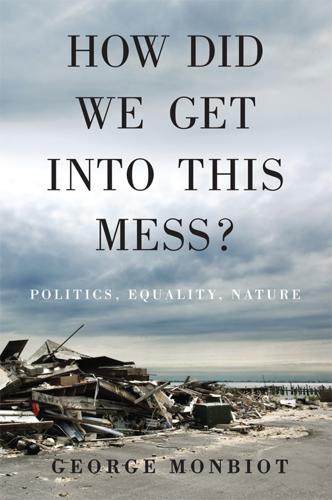
How Did We Get Into This Mess?: Politics, Equality, Nature
by
George Monbiot
Published 14 Apr 2016
See also Fire Brigades Union (FBU); General, Municipal, Boilermakers and Allied Trade Union (GMB); National Farmers’ Union (NFU); National Union of Rail, Maritime and Transport Workers (RMT); Transport and General Workers’ Union (TGWU) breaking of/smashing of, 218, 220 Gordon Brown government and, 263–7 shaking off of, 190 subsidies and, 121 testing of, 264 and Tories, 265 Unison, 266 Unite, 265 United Kingdom (UK) abortion rate, 74 and age of criminal responsibility, 69 children’s well-being in, 22 consumer debt in, 217 income in, 191 market fundamentalism in, 16 neoliberalism in, 15 pay gap in, 187 taxation in, 276–7 teenage pregnancy rate, 75 wage of care workers in, 185 United States (US) abortion rate, 74 bridge inspections in, 217 cocaine use in, 33 Conservatives in, 288 crime rates in, 161 deaths caused by pollution from coal plants in, 170, 171 demands of blue-collar workers in, 285 and drone strikes. See drone strikes and illegal money transfers, 239 income in, 191, 205, 272 lead withdrawn from petrol, 161 market fundamentalism in, 16 neoliberalism in, 15 productivity in, 191 reforestation in, 97 shift of wealth in, 218 taxation in, 209–12 teenage pregnancy rate, 75 wage of care workers in, 185 Universal Declaration of Human Rights, 196 universalism, 285 University of Milan, 11 University of Tasmania, 83 UN Office on Drugs and Crime, 32, 34 upland grazing, 121–2 US Congress, millionaires in, 24 utility, inverse relationship of with reward, 184 V values, importance of in changing political map, 288 van Valkenburgh, Blaire, 89 Verhaeghe, Paul, 14, 15, 17 vertebrate wildlife, loss of, 88 Victorians, 60, 61 Virgil, 120 Virunga national park (Africa), 177 W wages of care workers, 185 redistribution of, 187 Wales coal mining in, 147, 155 livestock farming in, 121 tree-planting grants in, 132 Walking Football, 13 Wallace, Alfred Russell, 234 WalMart, 193 Walton, Izaac, 22, 137 war of every man against every man/war of all against all, 9, 10, 12 Warwick agreement, 265, 267 Warwick University, 50 Washington, George, 230 wealth as ambition, 10–11, 12 correlation between global warming and, 105–6 global wealth, 12, 176 shift of in US, 218 wealth creators, 190, 221, 276 Weekly Standard, 230 Wellcome Trust, 182 Welz, Adam, 204 West Antarctic ice sheet, 176 whale poo, 79, 82, 83 whale pump, 82, 84 whales, as maintaining populations of animals they eat, 82–3 whaling, impact of on Californian condors, 84–5 What About Me?
…
These children are just as important, just as real, just as deserving of the world’s concern. Yet there are no presidential speeches or presidential tears for them; no pictures on the front pages of the world’s newspapers; no interviews with grieving relatives; no minute analysis of what happened and why. If the victims of Mr Obama’s drone strikes are mentioned by the state at all, they are discussed in terms which suggest that they are less than human. The people who operate the drones, Rolling Stone magazine reports, describe their casualties as ‘bug splats’, ‘since viewing the body through a grainy-green video image gives the sense of an insect being crushed’.2 Or they are reduced to vegetation: justifying the drone war, Obama’s counter-terrorism adviser Bruce Riedel explained that, ‘You’ve got to mow the lawn all the time.
…
The people who operate the drones, Rolling Stone magazine reports, describe their casualties as ‘bug splats’, ‘since viewing the body through a grainy-green video image gives the sense of an insect being crushed’.2 Or they are reduced to vegetation: justifying the drone war, Obama’s counter-terrorism adviser Bruce Riedel explained that, ‘You’ve got to mow the lawn all the time. The minute you stop mowing, the grass is going to grow back.’3 Like Bush’s government in Iraq, Barack Obama’s administration neither documents nor acknowledges the civilian casualties of the CIA’s drone strikes in north-west Pakistan. But a report by the law schools at Stanford and New York universities suggests that during the first three years of his time in office, the 259 strikes for which he is ultimately responsible killed between 297 and 569 civilians, of whom 64 were children.4 These are figures extracted from credible reports: there may be more which have not been fully documented.

The Black Box Society: The Secret Algorithms That Control Money and Information
by
Frank Pasquale
Published 17 Nov 2014
Christina Bonnington and Spencer Ackerman, “Apple Rejects App That Tracks U.S. Drone Strikes,” Wired, August 30, 2012, http://www.wired .com /dangerroom /2012/08/drone-app/. 23. Ibid. 24. Nick Wingfield, “Apple Rejects App Tracking Drone Strikes,” New York Times Bits Blog, August 30, 2012, http:// bits.blogs.nytimes.com /2012/08 /30/apple-rejects-app-tracking-drone-strikes/. 25. When he fi nally began listing out every drone strike via Twitter, his tweets sparked sobering conversations about U.S. actions; clearly, there is an appreciative and constructive audience out there for Begley’s work. Michael Kelly, “The NYU Student Tweeting Every Reported U.S. Drone Strike Has Revealed a Disturbing Trend,” Business Insider, December 12, 2012, http://www.businessinsider.com /us-drone -tweets-reveal-double -tap -plan-2012-12. 26.
…
Drone Strike Has Revealed a Disturbing Trend,” Business Insider, December 12, 2012, http://www.businessinsider.com /us-drone -tweets-reveal-double -tap -plan-2012-12. 26. Bonnington and Ackerman, “Apple Rejects App That Tracks U.S. Drone Strikes.” 27. Lorenzo Franceschi-Bicchierai, “After 5 Rejections, Apple Accepts App That Tracks U.S. Drone Strikes,” Mashable, February 7, 2014, http://mashable .com /2014 /02/07/apple-app-tracks-drone-strikes/. 248 NOTES TO PAGES 63–64 28. Benjamin Poynter, in an interview with GameScenes (transcript posted Oct. 2012). Available at http://www.gamescenes.org/2012/10/interview.html. On persuasive gaming generally, see Ian Bogost, Persuasive Games (Cambridge, MA: MIT Press, 2007). 29.
…
But the content of Begley’s app was news stories, quoted and plotted on a map. 24 Apple has approved plenty of apps that describe and depict the destruction reported in the news, so that rationale is hard to swallow.25 Despite national publicity criticizing the decision, Apple held firm for two years.26 After five rejections, Begley finally got the app included in the store in 2014 by removing the word “drone” from its name and description, rechristening it Metadata+.27 Whether those interested in tracking drone strikes can fi nd his app without its using the term “drone” is anyone’s guess. In a Permanent Save State. Artist Benjamin Poynter submitted his In a Permanent Save State as a “persuasive gaming” app, a form of combined entertainment, provocation, and instruction.28 It offered an interactive narrative inspired by the suicides of workers at Apple supplier Foxconn’s plant, which had taken an enormous public relations toll on Apple the year before.29 Poynter intended Permanent Save State to highlight the dark contrast between Apple’s dream machines and nightmarish conditions in its supply chain.

Disrupt and Deny: Spies, Special Forces, and the Secret Pursuit of British Foreign Policy
by
Rory Cormac
Published 14 Jun 2018
Intelligence that they, GCHQ, and special forces supplied to America was being used to target drone strikes. GCHQ supplied in-depth surveillance of the Federally Administered Tribal Areas, the area of Pakistan most hit by US drone strikes, including coverage of satellite telephone communications. It also provided tactical intelligence to support military operations there. This, GCHQ noted, was an imminent and high priority.108 Critics have asked similar questions about British intelligence enabling drone strikes in Somalia too.109 That said, clear procedures were in place to ensure that British intelligence did not aid unacceptable operations.
…
By 2010, and at the request of the National Security Agency (NSA), Overhead turned its attention to Yemen. It appears that intelligence from GCHQ and Overhead was instrumental in tracking and targeting two terrorists, one of whom was a doctor specializing in surgically implanted explosives. A CIA drone strike killed both in March 2012.114 Later in the same year, the family of a tribal elder killed by a drone strike in Pakistan launched a legal case against the British government accusing GCHQ officers of accessory to murder. Judges refused to rule, fearing that doing so could harm Britain’s international relations.115 At the same time, special forces from Britain’s Special Reconnaissance Regiment trained Yemeni paramilitary forces in counter-terrorism.The head of the Yemeni unit described the British trainers as highly secretive, having prevented their students from taking photos or mentioning names.
…
David Leppard, ‘GCHQ Finds Al-Qaeda for American Strikes,’ The Sunday Times, 25/7/10; Alice Ross and James Ball, ‘GCHQ Documents Raise Fresh Questions over UK Complicity in US Drone Strikes,’ The Guardian, 24/6/15. 109. See, for example, JL Mombasa, ‘A Very British Execution?,’ The Economist, 25/6/12. 110. Private information. 111. Quoted in Richard Norton-Taylor, ‘UK Special Forces and MI6 Involved in Yemen Bombing, Report Reveals’, The Guardian, 11/4/16. 112. Private information. 113. Namir Shabibi and Jack Watling, ‘Britain’s Covert War in Yemen: A Vice News Investigation’, Vice News, 7/4/16. 114. Alice Ross and James Ball, ‘GCHQ Documents Raise Fresh Questions over UK Complicity in US Drone Strikes’, The Guardian, 24/4/15; Scahill, The Assassination Complex, pp.118–19. 115.

Exponential: How Accelerating Technology Is Leaving Us Behind and What to Do About It
by
Azeem Azhar
Published 6 Sep 2021
Says Russian-Backed Outlets Spread COVID-19 Vaccine “Disinformation”’, Reuters, 8 March 2021 <https://www.reuters.com/article/us-usa-russia-covid-disinformation-idUSKBN2B0016> [accessed 23 April 2021]. 43 Peter Walker, ‘New National Security Unit Set Up to Tackle Fake News in UK’, The Guardian, 23 January 2018 <https://www.theguardian.com/politics/2018/jan/23/new-national-security-unit-will-tackle-spread-of-fake-news-in-uk>. 44 Brian Raymond, ‘Forget Counterterrorism, the United States Needs a Counter-Disinformation Strategy’, Foreign Policy, 15 October 2020 <https://foreignpolicy.com/2020/10/15/forget-counterterrorism-the-united-states-needs-a-counter-disinformation-strategy/> [accessed 24 March 2021]. 45 Micah Zenko, ‘Obama’s Final Drone Strike Data’, Council on Foreign Relations, 2017 <https://www.cfr.org/blog/obamas-final-drone-strike-data> [accessed 12 January 2021]. 46 ‘Give and Take – Drone Technology Has Made Huge Strides’, The Economist, 8 June 2017 <https://www.economist.com/technology-quarterly/2017/06/08/drone-technology-has-made-huge-strides> [accessed 14 October 2020]. 47 ‘MQ-1B Predator’, U.S.
…
Air Force <https://www.af.mil/About-Us/Fact-Sheets/Display/Article/104469/mq-1b-predator/> [accessed 26 April 2021]. 48 Reuters Staff, ‘Factbox: The Global Hawk Drone Shot down by Iran’, Reuters, 21 June 2019 <https://www.reuters.com/article/us-mideast-iran-usa-factbox-idUSKCN1TL29K> [accessed 14 October 2020]. 49 ‘Bayraktar TB2 Unmanned Aerial Combat Vehicle’, Military Today <http://military-today.com/aircraft/bayraktar_tb2.htm> [accessed 26 April 2021]. 50 Umar Farooq, ‘How Turkey Defied the U.S. and Became a Killer Drone Power’, The Intercept, 14 May 2019 <https://theintercept.com/2019/05/14/turkey-second-drone-age/> [accessed 21 February 2021]. 51 Associated Press, ‘Major Saudi Arabia Oil Facilities Hit by Houthi Drone Strikes’, The Guardian, 14 September 2019 <https://www.theguardian.com/world/2019/sep/14/major-saudi-arabia-oil-facilities-hit-by-drone-strikes> [accessed 26 April 2021]. 52 Shaan Shaikh and Wes Rumbaugh, ‘The Air and Missile War in Nagorno-Karabakh: Lessons for the Future of Strike and Defense’, Center for Strategic and International Studies, 2020 <https://www.csis.org/analysis/air-and-missile-war-nagorno-karabakh-lessons-future-strike-and-defense> [accessed 2 January 2021]. 53 Robyn Dixon, ‘Azerbaijan’s Drones Owned the Battlefield in Nagorno-Karabakh – and Showed Future of Warfare’, Washington Post, 11 November 2020 <https://www.washingtonpost.com/world/europe/nagorno-karabkah-drones-azerbaijan-aremenia/2020/11/11/441bcbd2-193d-11eb-8bda-814ca56e138b_story.html> [accessed 12 January 2021]. 54 Dan Sabbagh, ‘UK Wants New Drones in Wake of Azerbaijan Military Success’, The Guardian, 2020 <http://www.theguardian.com/world/2020/dec/29/uk-defence-secretary-hails-azerbaijans-use-of-drones-in-conflict> [accessed 12 January 2021]. 55 Joseph Trevithick, ‘China Conducts Test of Massive Suicide Drone Swarm Launched from a Box on a Truck’, The Drive, 14 October 2020 <https://www.thedrive.com/the-war-zone/37062/china-conducts-test-of-massive-suicide-drone-swarm-launched-from-a-box-on-a-truck> [accessed 26 April 2021]. 56 Joseph Trevithick, ‘RAF Uses Autonomous Drone Swarm Loaded with Decoys to Overwhelm Mock Enemy Air Defenses’, The Drive, 8 October 2020 <https://www.thedrive.com/the-war-zone/36950/raf-tests-swarm-loaded-with-britecloud-electronic-warfare-decoys-to-overwhelm-air-defenses> [accessed 26 April 2021]. 57 Zachary Kallenborn and Philipp C.
…
Lyft’, Bloomberg Second Measure, 2020 <https://secondmeasure.com/datapoints/rideshare-industry-overview/> [accessed 23 September 2020] Youn, Hyejin, Deborah Strumsky, Luis M. A. Bettencourt and José Lobo, ‘Invention as a Combinatorial Process: Evidence from US Patents’, Journal of The Royal Society Interface, 12, 2015, 20150272 <https://doi.org/10.1098/rsif.2015.0272> Zenko, Micah, ‘Obama’s Final Drone Strike Data’, Council on Foreign Relations, 2017 <https://www.cfr.org/blog/obamas-final-drone-strike-data> [accessed 12 January 2021] Index The page references in this index correspond to the print edition from which this ebook was created, and clicking on them will take you to the location in the ebook where the equivalent print page would begin.
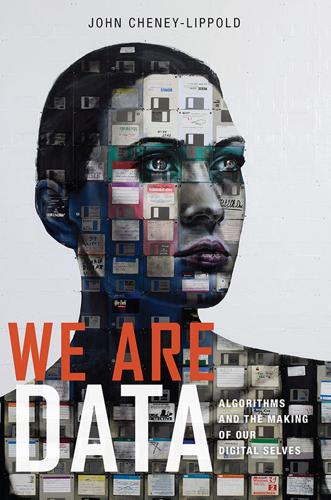
We Are Data: Algorithms and the Making of Our Digital Selves
by
John Cheney-Lippold
Published 1 May 2017
Michael Hayden alerts us to how metadata can be spoken for “as if” it was produced by a ‘terrorist.’ That is, one’s metadata can be compared against a preexisting pattern, a “signature” in the parlance of the U.S. intelligence community. And if that metadata fits within this “signature” of a ‘terrorist’ template, one might find oneself at the receiving end of a Predator drone strike. This data-based attack is a “signature strike,” a strike that requires no “target identification” but rather an identification of “groups of men who bear certain signatures, or defining characteristics associated with terrorist activity, but whose identities aren’t known.”3 With this in mind, we might choose to revise Hayden’s remarks to be a bit more specific: “we call people ‘terrorists’ based on metadata.
…
There isn’t a direct connection that says X is, for sure, a terrorist or A is a terrorist or Y and Z are ‘terrorists’ or terrorists. But according to this data association, and with indifferent confirmation from both the NSA general counsel and the NSA director themselves, this could very well lead, and has led, to assassination by way of signature drone strike: “we kill people based on metadata.”99 The terminology of a “signature” is more than mere semantics but a datafied pattern that becomes the signed stand-in “as if” a phone belonged to a ‘terrorist.’ Online we engage with an ecology of datafied subject relations, and many individuals have been killed because of it.
…
Soon after aerial strikes started terrorizing communities across Pakistan, Afghanistan, Iraq, Yemen, Syria, and Somalia, ‘terrorists’ became aware of the execution orders authorized by their information signatures. They knew their behaviors were being recorded. And they knew that their datafied “patterns of life” correlated to the kiss of death carried out by unseen aerial drone strike. In response, many individuals redistributed their SIM cards—by meeting in person and switching, through random assignment, one individual’s SIM card for another, thus confusing the stories seemingly written by metadata’s associative ink.103 X, Y, Z, and A might have been the ‘terrorists’ the United States was looking for a week prior.

Dark Territory: The Secret History of Cyber War
by
Fred Kaplan
Published 1 Mar 2016
And he was the first president whose campaign records had been hacked by a foreign power. Obama understood the stakes. But something else stirred his concerns. A few days before inauguration day, President Bush had briefed him on two covert operations that he hoped Obama would continue. One concerned secret drone strikes against al Qaeda militants in Pakistan. The other involved a very tightly held, astonishingly bold cyber offensive campaign—code-named Operation Olympic Games, later known as Stuxnet—to delay and disable what seemed to be a nuclear weapons program in Iran. Coming so soon after Mike McConnell’s briefing on America’s vulnerability to cyber attacks, this disclosure switched on a different light bulb from the one that had flashed in the heads of presidents, senior officials, and advisers who’d been exposed to the subject in the decades before.
…
From the outset of his presidency, Obama articulated, and usually followed, a philosophy on the use of force: he was willing to take military action, if national interests demanded it and if the risks were fairly low; but unless vital interests were at stake, he was averse to sending in thousands of American troops, especially given the waste and drain of the two wars he inherited in Afghanistan and Iraq. The two secret programs that Bush pressed him to continue—drone strikes against jihadists and cyber sabotage of a uranium-enrichment plant in Iran—fit Obama’s comfort zone: both served a national interest, and neither risked American lives. Once in the White House, Obama expressed a few qualms about the plan: he wanted assurances that, when the worm infected the Natanz reactor, it wouldn’t also put out the lights in nearby power plants, hospitals, or other civilian facilities.
…
As with most other devices in life, their most basic functions had been computerized—and the computers hooked up to networks—for the sake of convenience, their manufacturers oblivious to the dangers they were opening up. The signs of a new dimension in the cyber arms race—involving sabotage, mayhem, terrorism, even assassination plots, carried out more invisibly than drone strikes—seemed ominous and almost inevitable. ACKNOWLEDGMENTS I CAME UP with the idea for this book—the contract was drawn up, the research was begun, the first interviews with sources were conducted—before the world had heard of Edward Snowden; before metadata, PRISM, and encryption entered the banter of common conversation; before cyber attacks—launched by China, Russia, North Korea, Iran, organized crime groups and, yes, the United States government—became the stuff of headline news seemingly every day.

Data and Goliath: The Hidden Battles to Collect Your Data and Control Your World
by
Bruce Schneier
Published 2 Mar 2015
The second is “signature strikes”: John Kaag and Sarah Kreps (2014), Drone Warfare, Wiley, chap. 12, http://books.google.com/books?id=I8oOBAAAQBAJ. half of all kills were signature strikes: Richard Engel and Robert Windrem (5 Jun 2013), “CIA didn’t always know who it was killing in drone strikes, classified documents show,” NBC News, http://investigations.nbcnews.com/_news/2013/06/05/18781930-cia-didnt-always-know-who-it-was-killing-in-drone-strikes-classified-documents-show. surveillance that is essentially indefinite: Karen McVeigh (27 Aug 2013), “NSA surveillance program violates the constitution, ACLU says,” Guardian, http://www.theguardian.com/world/2013/aug/27/nsa-surveillance-program-illegal-aclu-lawsuit.
…
The NSA collects cell phone location data from a variety of sources: the cell towers that phones connect to, the location of Wi-Fi networks that phones log on to, and GPS location data from Internet apps. Two of the NSA’s internal databases, code-named HAPPYFOOT and FASCIA, contain comprehensive location information of devices worldwide. The NSA uses the databases to track people’s movements, identify people who associate with people of interest, and target drone strikes. The NSA can allegedly track cell phones even when they are turned off. I’ve just been talking about location information from one source—your cell phone— but the issue is far larger than this. The computers you interact with are constantly producing intimate personal data about you. It includes what you read, watch, and listen to.
…
It’s worse in the UK. There, people have been jailed because of a racist tweet or a tasteless Facebook post. And it’s even more extreme in other countries, of course, where people are routinely arrested and tortured for things they’ve written online. Most alarming of all, the US military targets drone strikes partly based on their targets’ data. There are two types of drone targeting. The first is “targeted killing,” where a known individual is located by means of electronic or other surveillance. The second is “signature strikes,” where unidentified individuals are targeted on the basis of their behavior and personal characteristics: their apparent ages and genders, their location, what they appear to be doing.

Click Here to Kill Everybody: Security and Survival in a Hyper-Connected World
by
Bruce Schneier
Published 3 Sep 2018
It does not prevent any websites you visit from tracking you. 59Already, all new Toyota cars track speed: Hans Greimel (6 Oct 2015), “Toyota unveils new self-driving safety tech, targets 2020 autonomous drive,” Automotive News, http://www.autonews.com/article/20151006/OEM06/151009894/toyota-unveils-new-self-driving-safety-tech-targets-2020-autonomous. 59In 2015, John Deere told: Dana Bartholomew (2015), “Long comment regarding a proposed exemption under 17 U.S.C. 1201,” Deere and Company, https://copyright.gov/1201/2015/comments-032715/class%2021/John_Deere_Class21_1201_2014.pdf. 60Apple censored apps that tracked: Stuart Dredge (30 Sep 2015), “Apple removed drone-strike apps from App Store due to ‘objectionable content,’” Guardian, https://www.theguardian.com/technology/2015/sep/30/apple-removing-drone-strikes-app. Lorenzo Franceschi-Bicchierai (28 Mar 2017), “Apple just banned the app that tracks U.S. drone strikes again,” Vice Motherboard, https://motherboard.vice.com/en_us/article/538kan/apple-just-banned-the-app-that-tracks-us-drone-strikes-again. 60“content that ridicules public figures”: Jason Grigsby (19 Apr 2010), “Apple’s policy on satire: 16 apps rejected for ‘ridiculing public figures,’” Cloudfour, https://cloudfour.com/thinks/apples-policy-on-satire-16-rejected-apps. 60in 2017, Apple removed security apps: Telegraph Reporters (31 Jul 2017), “Apple removes VPN apps used to evade China’s internet censorship,” Telegraph, http://www.telegraph.co.uk/technology/2017/07/31/apple-removes-vpn-apps-used-evade-chinas-internet-censorship. 60Google has also banned an app: AdNauseam (5 Jan 2017), “AdNauseam banned from the Google Web Store,” https://adnauseam.io/free-adnauseam.html. 61“Some of us have pledged our allegiance”: Bruce Schneier (26 Nov 2012), “When it comes to security, we’re back to feudalism,” Wired, https://www.wired.com/2012/11/feudal-security. 61Companies owning fleets of autonomous cars: Judith Donath (16 Nov 2017), “Uber-FREE: The ultimate advertising experience,” Medium, https://medium.com/@judithd/the-future-of-self-driving-cars-and-of-advertising-will-be-promoted-rides-free-transportation-b5f7acd702d4. 62Because the machines use software: After years of refusing to allow consumers to use refillable pods, Keurig now allows consumers to use any coffee they want, as long as they buy a special add-on.
…
Before an app can be sold or given away to iPhone customers, it has to be approved by Apple. And the company has some strict rules about what it will and won’t allow. No porn, of course, and no games about child labor or human trafficking—but also no political apps. This latter rule meant that Apple censored apps that tracked US drone strikes and apps containing “content that ridicules public figures.” Such restrictions put Apple in a position to be able to implement government censorship demands. And it has done so: in 2017, Apple removed security apps from its China store. Apple is an extreme example, but it’s not the only company that censors your Internet.
…
While it might be technically true that human judges make bail decisions, if they all do what the algorithm recommends because they believe the algorithm is less biased, then the algorithm is as good as autonomous. Similarly, if a doctor never contradicts an algorithm that makes decisions about cancer surgery—possibly out of fear of a malpractice suit—or if an army officer never contradicts an algorithm that makes decisions about where to target a drone strike, then those algorithms are as good as autonomous. Inserting a human into the loop doesn’t count unless that human actually makes the call. The risks in all of these cases are considerable. Algorithms can be hacked. Algorithms are executed using software, and—as I discussed in Chapter 1—software can be hacked.

The Great Delusion: Liberal Dreams and International Realities
by
John J. Mearsheimer
Published 24 Sep 2018
Micah Zenko, “How Barack Obama Has Tried to Open Up the One-Sided Drone War,” Financial Times, May 23, 2013. Writing in January 2016, Zenko says: “Whereas President George W. Bush authorized approximately 50 drone strikes that killed 296 terrorists and 195 civilians in Yemen, Pakistan and Somalia, Obama has authorized 506 strikes that have killed 3,040 terrorists and 391 civilians.” Micah Zenko, “Obama’s Embrace of Drone Strikes Will Be a Lasting Legacy,” New York Times, January 12, 2016. Also see Micah Zenko, “Do Not Believe the U.S. Government’s Official Numbers on Drone Strike Civilian Casualties: It’s Way, Way Too Low,” Foreign Policy, July 5, 2016; “Get the Data: Drone Wars,” The Bureau of Investigative Journalism, September 13, 2016, https://www.thebureauinvestigates.com/category/projects/drones/drones-graphs/. 93.
…
The deep affection for secrecy shown by both the Bush and Obama administrations is not surprising in light of their illegal or at least questionable surveillance of American citizens, which they tried to hide from the public, Congress, and the courts.74 This is one reason President Obama was so determined to punish Bradley Manning and Edward Snowden, and more generally why he went to war with unprecedented fervor against reporters and whistleblowers.75 He also went to great lengths to disguise how deeply involved the United States was in the Syrian civil war, and to divulge as little information as possible about drone strikes. Obama was given to claiming that he ran “the most transparent administration in history.”76 If true, the credit should go to the reporters and whistleblowers who defied his deep commitment to government secrecy. Another harmful consequence of a highly interventionist foreign policy is that it gives leaders numerous occasions to lie, or at least distort the truth, when trying to motivate the public to support military action abroad.
…
Drones, of course, play a central role in these assassinations. Obama had a kill list known as the “disposition matrix,” and every Tuesday there was a meeting in the White House—it was called “Terror Tuesday”—where the next victims were selected.91 The extent to which the Obama administration bought into this strategy is reflected in the distribution of drone strikes between November 2002, when they began, and May 2013. Micah Zenko reports that there were “approximately 425 non-battlefield targeted killings (more than 95 percent by drones). Roughly 50 took place during Mr. Bush’s tenure, and 375 (and counting) under Mr. Obama’s.”92 As the journalist Tom Engelhardt writes, “Once upon a time, off-the-books assassination was generally a rare act of state that presidents could deny.

The 9/11 Wars
by
Jason Burke
Published 1 Sep 2011
A total of nearly 600 militants were killed, according to one estimate, indicating that new militants replacing the dead were being killed too. Greg Miller, ‘Increased U.S. drone strikes in Pakistan killing few high-ranking militants’, Washington Post, February 20, 2011. David E Sanger and Mark Mazzetti, ‘New estimate of strength of Al Qaeda is offered’, New York Times, June 30, 2010. The fact that senior al-Qaeda figures began to move to Pakistani cities and towns indicated how effective the drone strikes were. 8. A nine-month break in communications from bin Laden had been ended only in March 2009. Seth Jones, In the Graveyard of Empires, p. 291. 9.
…
Though undoubtedly an effective means of eliminating known militants and putting their associates under considerable pressure – men like Mehsud in the FATA in the summer of 2008 were sleeping outside to avoid being caught in a building and spent much of their time conducting purges against supposed informants – the drone strikes were a blunt instrument and killed many civilians. This was another reason for the Mahmund tribe of Bajaur taking arms against their fellow Bajauris and against the Pakistani government. Damadola, the Bajaur village which became the headquarters of local militants and was thought to have sheltered Ayman al-Zawahiri on a number of occasions, had been hit by a series of air strikes from 2005 onwards.
…
It would then be sent up the ISI chain of command, who would ask for verification from their officers on the ground, before going to the Pakistani army, whose own intelligence service would verify again, before finally being sent to the Pakistani army’s operations planning section. A successful raid, specialists say, needs intelligence on where a target will be in four hours, not where he was a couple of days before. This convoluted system also meant that drone strikes, which also had to be signed off by the ISI, remained a rarity. A third problem was simply logistics. As Keller was not allowed to venture out of the base in Wana, everything he did was through Pakistani liaison officers or via electronic means. ‘I spent my days reading traffic from other stations and going through communications intercepts,’ Keller remembered.
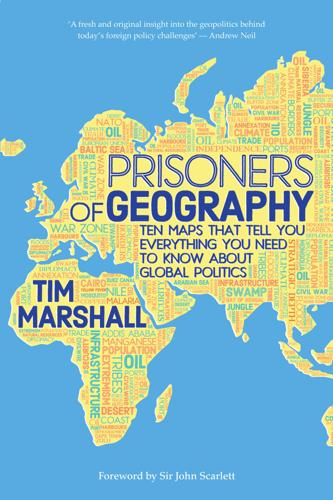
Prisoners of Geography: Ten Maps That Explain Everything About the World (Politics of Place)
by
Tim Marshall
Published 10 Oct 2016
Things became so bad that the Pakistani military and government ended up having to give the United States military intelligence and coordinates allowing the United States to conduct drone strikes against Pakistani Taliban targets in the North-West Frontier. At the same time, when the strikes became apparent, Islamabad had to pretend to condemn them and describe them as a violation of Pakistani sovereignty due to the hundreds of civilian deaths attributed to mistakes by the United States. The drones were mostly flown out of a base in Afghanistan, but some are thought to have been launched from a secret base inside Pakistan. Wherever they came from, there were a lot of them. Drone strikes in Afghanistan and Pakistan massively increased during the Obama presidency from the numbers fired during George Bush’s tenure.
…
This is a reminder of the conceptual map of US power required to fully understand geopolitics today. For example, the signal sent from Nevada may need to travel through an underwater cable to Germany and then be sent up to a satellite belonging to a third country that sells bandwidth to the Pentagon. Drone strikes are also subject to rules of engagement, but have been used to devastating effect against individual targets. They made a huge contribution to the situation the Islamic State found itself in during the summer of 2015, when it had lost several thousand square miles of territory in Iraq even though it still controlled large swaths of the Sunni-dominated regions of the country.
…
Islamabad was forced to act, and did; but not everyone in the Pakistani system was on board. The government banned several militant groups and tried to rein in religious groups it deemed extremist. By 2004 it was involved militarily against groups in the North-West Frontier and privately accepted the American policy of drone strikes on its territory while publicly decrying them. These were tough decisions. The Pakistan military and the ISI had to turn on the very Taliban leaders they had trained and formed friendships with in the 1990s. The Taliban groups reacted with fury, seizing complete control of several regions in the tribal areas.

There's a War Going on but No One Can See It
by
Huib Modderkolk
Published 1 Sep 2021
* ‘I was in southern Somalia also, that Sunday the 26th of January,’ the Somali herdsman says. My fellow Volkskrant journalist Maud Effting and I are in a stuffy room in downtown Amsterdam, sitting across from a screen. Other stories had distracted me from Somalia and MIVD surveillance there for a while. Then a source phoned. He told me two Somali men had been injured in a US drone strike and that they’d been put in touch with Dutch lawyers. I was keen to talk to the Somali men myself. But for me to visit Somalia was practically impossible: it was an unofficial war zone and would cost de Volkskrant thousands for insurance and security. Arranging a video call was also problematic.
…
They grab a Coke with co-workers, pick up their kids from school, watch Netflix at home. It’s no wonder the US loves drones. Without risk to American lives, these unmanned aircraft can eliminate terrorists anywhere in the world. During his term in office, President Barack Obama dramatically ramped up the number of drone strikes, praising this type of assassination as ‘more precise’ and ‘more effective’ than what the American military could accomplish with mere boots on the ground. But there’s also a downside. The CIA and the US military, which carry out the strikes, don’t report civilian casualties. One drone pilot has told of his experience when tasked with monitoring a compound in Afghanistan.
…
How the US chooses drone targets Cora Currier and Peter Maass, ‘Firing Blind. Article 6 of 8 from the Drone Papers’, The Intercept, 15 October 2015. Bombing SIM cards Jeremy Scahill and Glenn Greenwald, ‘The NSA’s secret role in the [U.S.] assassination program’, The Intercept, 10 February 2014. Casualties from drone strikes The Bureau of Investigative Journalism, thebureauinvestigates.com/projects/drone-war gchq metadata collection figures Peter Koop, ‘Some numbers about NSA’s data collection’, Electrospaces.net, 5 June 2014. 6 A Many-Headed Hydra The Greek case James Bamford, ‘A death in Athens’, The Intercept, 29 September 2015.

The Perfect Weapon: War, Sabotage, and Fear in the Cyber Age
by
David E. Sanger
Published 18 Jun 2018
Meanwhile the Pentagon, sensing Trump’s willingness to demonstrate overwhelming American force in cyberspace as in other military arenas, published a new strategy, envisioning an era of constant, low-level cyber conflict in which America’s newly minted cyber warriors would go deep behind enemy lines every day, attacking foreign computer servers before threats to the United States could materialize. The idea was classic preemption, updated for the cyber age, to “stop attacks before they penetrate our cyber defenses or impair our military forces.” Other proposals suggested the president should no longer have to approve every cyber strike—any more than he would have to approve every drone strike. In the chaos of the Trump White House, it was unclear how these weapons would be used, or under what rules. But suddenly we are in new territory. * * * — Cyber conflict remains in the gray area between war and peace, an uneasy equilibrium that often seems on the brink of spinning out of control.
…
In doing so, he gradually lifted the secrecy surrounding the use of drones so that the world could understand whether they were hitting terrorists, and when they went awry and killed children or wedding guests. Cyberweapons were different. The government would barely admit to owning them, much less talk about the rules for when and why it used them. But the issues were very similar; just as investigative reporting about the unintended costs of drone strikes had forced the debate about unmanned weapons, my editors and I felt a journalistic imperative to explain to readers how the government was embracing cyberweapons that could ultimately be turned against our homeland. Olympic Games had opened the door to a new dimension of warfare that no one fully understood.
…
This was the road map for going to war with Iran, either because negotiations over its nuclear program failed or because Iran lashed out, perhaps in response to an Israeli bombing strike. Cyber Command’s piece of the puzzle was to contribute to an operation named Nitro Zeus. It was a plan—using cyber and other methods—to shut down the entire country, preferably without firing a shot. If Olympic Games was the cyber equivalent of a targeted drone strike on Iran, Nitro Zeus was a full-scale attack. * * * — Paul Nakasone’s first encounter with computing was not exactly an inspirational Silicon Valley tale of discovery and invention. “It was 1986, and I bought a PCjr,” he recalled. Nakasone was a college student at St. John’s University, a small gem of a school on a beautiful lake in a remote part of Minnesota, so remote that the ability to connect to the outside world meant everything.
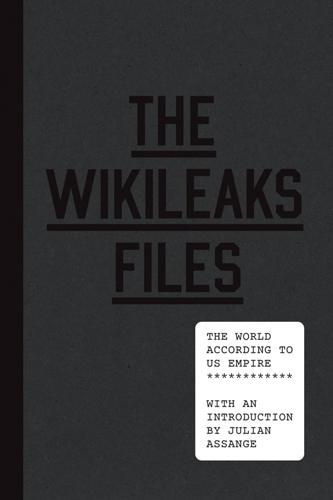
The WikiLeaks Files: The World According to US Empire
by
Wikileaks
Published 24 Aug 2015
See also Chris Woods, “Analysis: Obama Embraced Redefinition of ‘Civilian’ in Drone Wars,” Bureau of Investigative Journalism, May 29, 2012, at thebureauinvestigates.com; and Glenn Greenwald, “‘Militants’: Media Propaganda,” Salon, May 29, 2012, at salon.com. 66Spencer Ackerman, “41 Men Targeted but 1,147 People Killed: US Drone Strikes—The Facts on the Ground,” Guardian, November 24, 2014; “US Drone Strikes Kill 28 Unknown People for Every Intended Target, New Reprieve Report Reveals,” Reprieve press release, November 24, 2014. 67Madelyn Hsiao-Rei Hicks, Hamit Dardagan, Gabriela Guerrero Serdán, Peter M. Bagnall, John A. Sloboda, and Michael Spagat, “The Weapons That Kill Civilians—Deaths of Children and Noncombatants in Iraq, 2003–2008,” New England Journal of Medicine 360: 1,585–1,588 (April 16, 2009). 68Quoted in Mohammad-Mahmoud Ould Mohamedou, Understanding Al Qaeda: The Transformation of War (London/Ann Arbor, MI: Pluto Press, 2007), p. 43. 69https://wikileaks.org/wiki/Classified_U.S_report_into_the_Fallujah _assult; https://wikileaks.org/wiki/Complex_Environments:_Battle_of_Fallujah_I,_April_2004. 70Global Policy Forum, “War and Occupation in Iraq,” June 2007, at globalpolicy.org. 71Martin Shaw, The New Western Way of War (Cambridge: Polity Press, 2005). 72For example, the prison’s oldest detainee, Mohammed Sadiq, was eighty-nine when detained.
…
In reality, the popular opposition to Saleh’s regime, which it described as “terrorist,” was broad and diverse, and partly based on tribal opposition to the centralized nature of his rule, while US strikes routinely caused harm way beyond their al-Qaeda target. And as the Yemeni struggle against the regime intensified, so did the drone strikes. For example, in June 2011 alone, a major upsurge in the rate of air strikes in the province of Abyan killed over 130 people and created 40,000 refugees.46 Among Washington’s other repressive responses to the Arab Spring was the support it gave to Saudi Arabia’s invasion of Bahrain to suppress democratic dissidents.
…
Newsweek reported in 2006 that it had become common for US troops to treat all “military-age men” in Iraq as enemies. Later it emerged that soldiers charged with committing war crimes in Baghdad alleged that they had been given orders to “kill all military-age men.”64 More recently, the Obama administration used this category adroitly to misrepresent its drone strikes as attacks largely on “militants.” In an extraordinary, lengthy article in the New York Times, based on interviews with dozens of Obama’s advisers, it was revealed that Obama embraced a disputed method for counting civilian casualties that did little to box him in. It in effect counts all military-age males in a strike zone as combatants, according to several administration officials, unless there is explicit intelligence posthumously proving them innocent.

Code Dependent: Living in the Shadow of AI
by
Madhumita Murgia
Published 20 Mar 2024
The entire community witnessed the American drone strike that killed the imam and the policeman, and it devastated the families. That very night, a Yemeni official called Faisal to say that his family members were not the intended targets; they had been caught in the crosshairs of a drone-targeting system that had mistakenly assumed that they were affiliated with the young insurgents. These kinds of attacks, where the identities of the victims are unknown and they have been targeted due to their patterns of behaviour, are known as ‘signature strikes’. They made up the majority of the 542 drone strikes during the Obama presidency.10 Cori discovered then that the US government had been experimenting with artificial intelligence as a way to track and isolate mobile phone targets for drone attacks since at least 2011.
…
CHAPTER 8: YOUR RIGHTS 1 Madhumita Murgia, ‘Facebook Content Moderators Required to Sign PTSD Forms’, Financial Times, January 26, 2020, https://www.ft.com/content/98aad2f0-3ec9-11ea-a01a-bae547046735. 2 Afiq Fitri, ‘The UK Has Spent up to £1bn on Drones to Prevent Migrant Crossings’, Tech Monitor, April 4, 2022, https://techmonitor.ai/government-computing/uk-spent-1bn-drones-prevent-migrant-crossings. 3 Robert Booth, ‘UK Warned over Lack of Transparency on Use of AI to Vet Welfare Claims’, The Guardian, September 3, 2023, https://www.theguardian.com/politics/2023/sep/03/uk-warned-over-lack-transparency-use-ai-vet-welfare-claims#:~:text=The%20DWP%20recently%20expanded%20its,to%20assess%20claimants’%20savings%20declarations. 4 Helen Warrell, ‘Home Office under Fire for Using Secretive Visa Algorithm’, Financial Times, June 9, 2019, https://www.ft.com/content/0206dd56-87b0-11e9-a028-86cea8523dc2. 5 Henry McDonald, ‘Home Office to Scrap “Racist Algorithm” for UK Visa Applicants’, The Guardian, August 4, 2020, https://www.theguardian.com/uk-news/2020/aug/04/home-office-to-scrap-racist-algorithm-for-uk-visa-applicants. 6 Martha Dark, ‘UK: Legal Action Threatened over Algorithm Used to Grade Teenagers’ Exams’, State Watch, August 12, 2020, https://www.statewatch.org/news/2020/august/uk-legal-action-threatened-over-algorithm-used-to-grade-teenagers-exams/. 7 Sally Weale and Heather Stewart, ‘A-Level and GCSE Results in England to Be Based on Teacher Assessments in U-Turn’, The Guardian, August 17, 2020, https://www.theguardian.com/education/2020/aug/17/a-levels-gcse-results-england-based-teacher-assessments-government-u-turn. 8 ‘Kenya: Meta Sued for 1.6 Billion USD for Fueling Ethiopia Ethnic Violence’, Amnesty International, December 14, 2022, https://www.amnesty.org/en/latest/news/2022/12/kenya-meta-sued-for-1-6-billion-usd-for-fueling-ethiopia-ethnic-violence/. 9 Alex Warofka, ‘An Independent Assessment of the Human Rights Impact of Facebook in Myanmar’, Meta, November 5, 2018, https://about.fb.com/news/2018/11/myanmar-hria/; Sheera Frenkel and Davey Alba, ‘In India, Facebook Grapples With an Amplified Version of Its Problems’, The New York Times, October 23, 2021, https://www.nytimes.com/2021/10/23/technology/facebook-india-misinformation.html. 10 Micah Zenko, ‘Obama’s Final Drone Strike Data’, Council on Foreign Relations, January 20, 2017, https://www.cfr.org/blog/obamas-final-drone-strike-data#:~:text=Less%20than%20two%20weeks%20ago,3%2C797%20people%2C%20including%20324%20civilians. CHAPTER 9: YOUR FUTURE 1 H. Harding, ‘The Impact of Tiananmen on China’s Foreign Policy’, The National Bureau of Asian Research 1, no. 3 (December 1, 1990), https://www.nbr.org/publication/the-impact-of-tiananmen-on-chinas-foreign-policy/. 2 D.
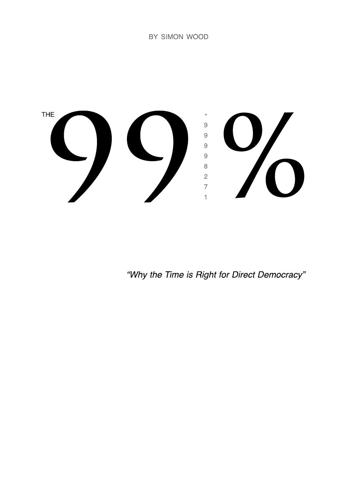
The 99.998271%
by
Simon Wood
Published 23 Apr 2012
Consider also that, unknown to you, the CIA has identified it as a target. A predator drone delivers destruction and one more terrorist is history. Unfortunately, so is your daughter. And her friend. And her friend’s family. The media will report the news the next day in the following way - “A medium-level terrorist target was killed last night in a predator drone strike. Seven other casualties were reported.” And that is that. How would you react? This might (currently) be only a hypothetical nightmare for anyone living in a develope country, but for the people living in villages in northwest Pakistan, it is a reality. Believe it or not, those ‘strange’ people living there are actually real people with families, friends, feelings, senses of humor, and hopes for the future just like anyone else.
…
Like Westerners, these foreigners also become rather upset and angry when someone drops a huge bomb on their children, even to the extent that they may swear revenge (or the preferred media word, jihad) against the perpetrator of the action. Anyone swearing revenge against the United States will by definition be designated a terrorist, a new target for the next drone strike. And so the cycle continues. Forever. Philip Alston, the UN investigator on extra-judicial killings, has said that these actions may constitute illegal assassinations and violate international law. The strategic usefulness of these strikes or otherwise is beside the point, as is whether one agrees or disagrees with the use of such a weapon.

No Is Not Enough: Resisting Trump’s Shock Politics and Winning the World We Need
by
Naomi Klein
Published 12 Jun 2017
Above all, Trump extended the equation of wealth with magical powers to members of his own dynastic family, bestowing on son-in-law Jared Kushner (a real estate developer born a multimillionaire) a portfolio so overstuffed with weighty responsibilities it rapidly became a media joke. Tallying up the duties so far—brokering Middle East peace, planning the Mar-a-Lago summit with China, monitoring US activities in Iraq, ordering drone strikes on Yemen, making government run more like a business—New York Times columnist Frank Bruni wondered, “Why don’t we just stitch him a red cape, put him in spandex, affix a stylized ‘S’ to his chest and be done with it? SuperJared has taken flight.” It would be reassuring if we could pin this billionaire-as-savior complex on Trump’s Twitter-addled brain, or on his advisers at the Heritage Foundation, with their Ayn Randian worship of “free enterprise” and men who build tall things.
…
It doesn’t necessarily matter if the target has no connection to the original terror attacks. Iraq wasn’t responsible for 9/11, and it was invaded anyway. Trump’s likeliest targets are mostly in the Middle East, and they include (but are by no means limited to) the following: Syria; Yemen, where Trump has already increased the number of drone strikes; Iraq, where deadly strikes with high civilian casualties are also on the rise; and, most perilously, Iran. And then, of course, there’s North Korea. Already, after visiting the demilitarized zone dividing North and South Korea, Secretary of State Tillerson declared “all options are on the table,” pointedly refusing to rule out a preemptive military strike in response to the North Korean regime’s missile testing.
…
In fact, if we chart the locations of the most intense conflict spots in the world right now—from the bloodiest battlefields in Afghanistan and Pakistan, to Libya, Yemen, Somalia, and Iraq—what becomes clear is that these also happen to be some of the hottest and driest places on earth. The Israeli architect Eyal Weizman has mapped the targets of Western drone strikes and found an “astounding coincidence.” The strikes are intensely concentrated in regions with an average of just 200 millimeters (7.8 inches) of rainfall per year—so little that even slight climate disruption can push them into drought. In other words, we are bombing the driest places on the planet, which also happen to be the most destabilized.
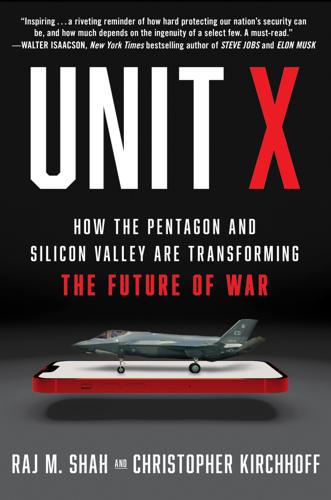
Unit X: How the Pentagon and Silicon Valley Are Transforming the Future of War
by
Raj M. Shah
and
Christopher Kirchhoff
Published 8 Jul 2024
Moreover, many engineers and technologists in Silicon Valley had deep moral objections to creating products that might be used to kill people, and they demanded their companies refuse to sign contracts with the military or intelligence agencies. Young people working in the Valley grew up watching the botched invasion of Iraq. They might have seen Saving Private Ryan, but their formative memories of the military were of the abuses at Abu Ghraib, torture at Guantánamo, and drone strikes that killed civilians. The final break came in 2013, when Google and others learned, via material leaked by Edward Snowden, that the National Security Agency was surreptitiously tapping their data interconnects to vacuum up intelligence about foreign threats. The rest of the world now looked at American tech firms as extensions of American intelligence agencies—as spies.
…
Now they were going to start using artificial intelligence and iPhones? Carter’s plan envisioned Silicon Valley’s founders and engineers eagerly answering his call. But, as Snowden had revealed, this was the same group the government had secretly manipulated to conduct espionage. The Iraq War, warrantless wiretapping, and drone strikes were things many in Silicon Valley opposed. How could a group of people so understandably alienated from the hard power of the military be enticed to help enhance its lethality? They’d come of age building technology that would make the world a better, not deadlier, place. It was easy to give a speech about innovation and transformation and drilling holes in walls.
…
The farther away you get from national security jobs, the more glamorous they look. Government jets. Meetings in the Situation Room. Walking into the Oval Office. But in reality the positions are traumatizing—extreme stress, life-and-death decisions, and seeing things that cannot be unseen. “You know, I used to be in the loop for every U.S. drone strike,” Chris told Ricki, letting out another long sigh. “Target, weapons platform, strike window. I don’t want to do that anymore.” Each time Chris was asked why he didn’t go back in, he told the story of his exchange with Ricki. MIKE BROWN’S NOMINATION While Chris stayed put in San Francisco along with Raj, DIU director Michael Brown put in an offer on a condo in D.C.

Home Grown: How Domestic Violence Turns Men Into Terrorists
by
Joan Smith
Published 5 Apr 2019
Their suspicions were confirmed on Safaa’s seventeenth birthday, at the end of March 2017, when Hussain sent her a series of messages revealing that the target was the British Museum. MI5 had to assume that a terrorist attack on London was imminent, instigated by Hussain – and within days he was dead. The extrajudicial killing of British jihadists in Syria by drone strikes is highly controversial. In September 2015, the then Prime Minister David Cameron announced that twenty-one-year-old Reyaad Khan from Cardiff had been killed by an RAF drone near Raqqa a month earlier, claiming that the ISIS recruiter was planning ‘barbaric’ attacks in the UK. Nine months earlier, Mohammed Emwazi, the Londoner better known as the masked ISIS killer ‘Jihadi John’, was killed while travelling in a car outside Raqqa after British intelligence supplied his whereabouts to an American air-force base in Nevada.
…
The revelation months later that the cold-blooded killer in the videos was an apparently ordinary computer-science graduate from north-west London caused astonishment, but his history turned out to have features common among recruits to ISIS. Emwazi went to a secondary school in St John’s Wood, the affluent area of London where another prominent member of the London Boys network, Bilal al-Berjawi, grew up after his family arrived from Lebanon. (Berjawi later became a leading figure in AQ in east Africa, dying in a drone strike on the outskirts of Mogadishu in January 2012, just hours after his wife gave birth to a child in a London hospital – another example of a terrorist with a somewhat detached approach to paternal responsibility.) But the Emwazi family home was on the Mozart Estate, a dense area of social housing in Queen’s Park, an area of London fought over by rival gangs from Kilburn and Ladbroke Grove.
…
In 2015, Mahmoud Elsheikh was killed fighting for ISIS near Tikrit in Iraq. El Shafee Elsheikh, who had two wives with him in Aleppo while he tortured Western hostages, named his son after his dead brother. Three of ‘the Beatles’ are now in captivity and the fourth, Emwazi, died in the American drone strike referred to in chapter four. Aine Davis, who fled as ISIS began to lose swathes of territory in Syria, got as far as Turkey where he was captured and put on trial for planning a terrorist attack in Istanbul; he was convicted and sentenced to seven and a half years in prison, where he remains at the time of writing.

Lurking: How a Person Became a User
by
Joanne McNeil
Published 25 Feb 2020
Other tech companies and platforms are strongly censorious when they choose to be, given examples like Facebook’s quick deletion of users with Native American names in 2014 but its resistance to banning Alex Jones until 2019. It took Apple quite some time to remove Alex Jones’s Infowars podcast from its iTunes listings, but in 2012, Josh Begley’s Drone+ app—a simple project that provided users with updates on drone strikes and their location on a map—was swiftly purged from Apple’s App Store. The company told Begley, “We found that your app contains content that many audiences would find objectionable, which is not in compliance with the App Store Review Guidelines.” Begley appealed to Apple, only to see his app, renamed Metadata+, rejected or removed from the platform several more times until it was finally accepted in 2017 … until it was rejected once again.
…
These companies have taken over functions of a state without administering the benefits or protections of a state. Nation-states might appear today to be as fragile and theoretical as anything digital, but the difference is not small. Google might secure contracts with the defense department, but the company does not authorize drone strikes. Facebook can’t put you in prison. Apple doesn’t run black sites. Amazon’s foul treatment of its factory workers is iniquitous, but it is not extraordinary rendition. Infrastructure is power, but it is not the law, which means there is still an opportunity for users—as individuals and collectives, and working with government bodies—to hold platforms accountable.
…
,” The Guardian, August 10, 2018; John Paczkowski and Charlie Warzel, “Apple Kicked Alex Jones Off Its Platform, Then YouTube and Facebook Rushed to Do The Same,” BuzzFeed, August 7, 2018; Avie Schneider, “Twitter Bans Alex Jones and InfoWars; Cites Abusive Behavior,” NPR, September 6, 2018). Josh Begley wrote about his rejections from the Apple store in The Intercept (“After 12 Rejections, Apple Accepts App That Tracks U.S. Drone Strikes,” March 28, 2017). Rhett Jones wrote about the ban on Elon Musk parody accounts for Gizmodo (“Twitter Will Lock Your Account If You Try to Impersonate Elon Musk,” July 25, 2018). Stephanie M. Lee reported on pro-ana content bans in BuzzFeed (“Why Eating Disorders Are So Hard for Instagram and Tumblr to Combat,” April 14, 2016).
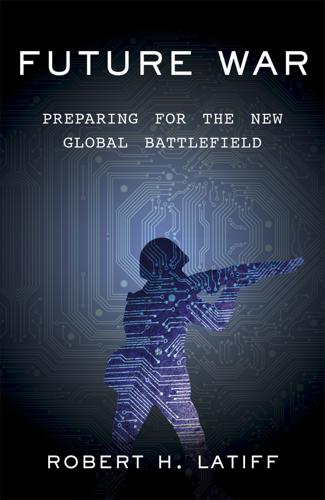
Future War: Preparing for the New Global Battlefield
by
Robert H. Latiff
Published 25 Sep 2017
They can be disembodied computer systems, like the alluring operating system in the movie Her, or they can be autonomous unmanned aerial or undersea weapons. They can be large, like Russia’s purported nuclear-weapon-carrying autonomous submarine, or they can be as small as an insect. Robots can be controlled, semiautonomous, or autonomous. They can also be lethal. Drone strikes, both military and otherwise, are commonplace. Soon the drones will be able to make engagement decisions on their own. Unmanned aerial, terrestrial, and naval systems with new, potentially autonomous and lethal capabilities are now being developed, and can be controlled by artificial intelligence.
…
Are we going to ask our military to figure out the appropriate employment of such weapons? Policy regarding these systems is lacking. Training is lacking. We cannot expect young soldiers to understand the nuances. There are risks, both technical and otherwise, in deploying technologies that we don’t completely understand. No one anticipated the psychological toll that drone strikes would have on their pilots. We cannot possibly anticipate how an autonomous system will react to a confusing and ambiguous situation. How will the presence of hypersonic weapons, against which there are currently no effective defenses, change the behavior of an adversary? We must urgently consider how these developments will ultimately affect not only the enemy, but also the soldiers who are asked to adapt to them.

Because We Say So
by
Noam Chomsky
On April 23, Yemeni activist and journalist Farea Al-Muslimi, who had studied at an American high school, testified before a U.S. Senate committee that right after the marathon bombings, a drone strike in his home village in Yemen killed its target. The strike terrorized the villagers, turning them into enemies of the United States—something that years of jihadi propaganda had failed to accomplish. His neighbors had admired the United States, Al-Muslimi told the committee, but “now, however, when they think of America, they think of the fear they feel at the drones over their heads. What radicals had previously failed to achieve in my village, one drone strike accomplished in an instant.” Rack up another triumph for President Obama’s global assassination program, which creates hatred of the United States and threats to its citizens more rapidly than it kills people who are suspected of posing a possible danger to us someday.

A New History of the Future in 100 Objects: A Fiction
by
Adrian Hon
Published 5 Oct 2020
Lenabe’s story would have ended right there, if it weren’t for the fact that the “Insurgency in a Box” (IIAB) had, unknown to DARPA, been deployed in nearby Zimbabwe by the CIA to aid Zimbabwe Liberation Army (ZLA) freedom fighters, preloaded with an enormous library of plans for bomb and weapons components. For four months the IIAB was powered with energy covertly siphoned from the Batoka Gorge hydropower station, after which the ZLA decided that they would benefit more by selling it to China. It was packed up and sent to South Africa, whereupon the US called up a stealth drone strike on the transport convoy. The drone strike only partially succeeded, and the mostly intact scanner parts eventually made their way to Durban, where Lenabe bought them from a tech market. With some help from some moonlighting engineering colleagues from the University of California, she used the parts, along with the plans she had downloaded, to create a working prototype.
…
Global dimming had been achieved in a way that had been helpful to most countries but at the expense of continued warming of the deep and polar oceans. These changes caused continued, albeit slower, melting at the icecaps and a corresponding global sea level rise. Together with ozone loss, it just wasn’t worth it. But neither was a third world war. The coalition, seeking to avoid unnecessary hostilities, informed the Alliance of the drone strike in advance, while promising to further accelerate their “slow response” carbon sequestration program, which at that point was achieving real results. And so, in 2040, the Sixteen Nations Alliance declared victory. The SAGA fleet embarked on a goodwill tour across the world, eventually landing for the final time in Alice Springs.
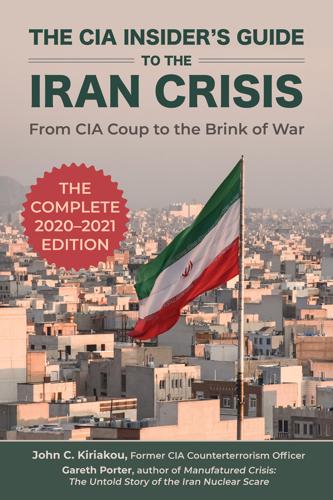
The CIA Insider's Guide to the Iran Crisis
by
Gareth Porter
Published 21 Jan 2020
A senior administration official told the New York Times that uncertainty about whether a U.S. aircraft had actually crossed into Iranian airspace was part of the reason he decided against the strikes.176 In private conversation the day after his decision against bombing three Iranian radar emplacements, Trump said of the advisers who had urged him to retaliate against Iran, “These people want to push us into a war, and it’s so disgusting.”177 During the short space of less than six weeks, Bolton had, with Pompeo’s support, created a phony Iranian threat to attack U.S. interests, generated the option of the dispatch of tens of thousands of U.S. troops to the region in case of an alleged Iranian attack, and urged a U.S. attack on a military target in retaliation for the shutdown of a U.S. reconnaissance drone.178 Despite the tension between Trump and his advisers over their urging him to go to war, later in the summer the Israelis launched an even more aggressive series of drone strikes against Syria, Iraq and Lebanon, where Iran’s ties with militia forces were strong. The IDF carried out a new series of attacks on bases, warehouses and other facilities belonging to Iran’s allies in Iraq and Lebanon, beginning with a July 19 attack on an Iraqi militia base north of Baghdad and including at least three or four others in the next few weeks.
…
They suggested that the Israeli offensive, including the strike in the Beirut suburb, was not only to hit “enemy capabilities” but to “prod them into a hasty response that might compromise the chances of a dialogue opening between Iran and the United States.”186 The IDF fully expected that the drone strike against a target in Hezbollah’s stronghold south of Beirut August 25 would result in a Hezbollah retaliatory strike. And Netanyahu certainly hoped that the such a retaliation by Hezbollah could be used by Bolton and Pompeo to argue that the United States should respond militarily as they had both asserted.

The World as It Is: A Memoir of the Obama White House
by
Ben Rhodes
Published 4 Jun 2018
It was a somewhat unpleasant place, with a mini-fridge, a single-cup coffee maker, a dropped ceiling, piles of intelligence reports, multiple computer screens at different levels of classification, different-colored phones, and shelves half-filled with books, most of which appeared to be unread gifts. During one semirenovation, they found dead rats in the walls. Yet in the global war against al Qaeda—the mix of surveillance, drone strikes, and special operations that take place in some of the most remote parts of the world—Brennan’s office was the nerve center. Any decision that Obama had to make about whether to launch an operation to kill or capture someone came through here. “This is very sensitive,” Brennan said, folding his hands in front of him.
…
How much can you compromise your own positions in service of a larger good before you sacrifice them? I felt we had gradually trimmed our sails and lowered our sights—a year after the heady days of the Libya intervention and bin Laden operation, it felt as if we were becoming technocratic, competent managers of things amid a world roiling with change. Drone strikes to take out terrorists. Reducing the population at Gitmo but unable to close it. Averting a war with Iran while imposing sanctions. I was advocating proposals that weren’t expedient or politically popular. More pressure on the Egyptian military. More action in Syria. More time spent on places like Burma.
…
But then I conceded that we had to, at some point, show that we meant what we said about not being on a permanent war footing. “We keep saying that,” I said, “and I guess we have to show that we mean what we say.” Speaking from my experience defending national security actions that we couldn’t talk about—from drone strikes to supporting the Syrian opposition—I said I thought it was time to make decisions in the open. Then I gave voice to the building frustrations I’d been feeling, the sense of being trapped in systems that don’t work. “In this Syria debate,” I said, “we’ve seen a convergence of two dysfunctions in our foreign policy—Congress and the international community.

Army of None: Autonomous Weapons and the Future of War
by
Paul Scharre
Published 23 Apr 2018
It also shifted public expectations about the degree of precision expected in war. We debate civilian casualties from drone strikes today, but tens of thousands of civilians were killed by U.S. and British bombers in the German cities of Hamburg, Kassel, Darmstadt, Dresden, and Pforzheim in World War II. Historians estimate that the U.S. strategic bombing of Japanese cities in World War II killed over 300,000 civilians. Over 100,000 were killed on a single night in the firebombing of Tokyo. By contrast, according to the independent watchdog group The Bureau of Investigative Journalism, U.S. drone strikes against terrorists in Somalia, Pakistan, and Yemen killed a total of between three and sixteen civilians in 2015 and four civilians in 2016.
…
Smaller hand-launched drones like the RQ-11 Raven can provide troops “over-the-hill reconnaissance” on demand while on patrol. Hundreds of drones had been deployed to Iraq and Afghanistan in short order. Drones weren’t new—they had been used in a limited fashion in Vietnam—but the overwhelming crush of demand for them was. While in later years drones would become associated with “drone strikes,” it is their capacity for persistent surveillance, not dropping bombs, that makes them unique and valuable to the military. They give commanders a low-cost, low-risk way to put eyes in the sky. Soon, the Pentagon was pouring drones into the wars at a breakneck pace. By 2011, annual spending on drones had swelled to over $6 billion per year, over twenty times pre-9/11 levels.
…
Hallion, “Precision Guided Munitions and the New Era of Warfare,” APSC Paper Number 53, Air Power Studies Centre, http://fas.org/man/dod-101/sys/smart/docs/paper53.htm. 281 accurate to within five feet: “Accuracy and Employment of Air-Dropped Guided Munitions by the United States.” 282 U.S. drone strikes: “Drone Wars: The Full Data,” The Bureau of Investigative Journalism, accessed June 16, 2017, https://www.thebureauinvestigates.com/stories/2017-01-01/drone-wars-the-full-data. 282 “the use of indiscriminate rockets”: “Ukraine: Unguided Rockets Killing Civilians,” Human Rights Watch, July 24, 2014, https://www.hrw.org/news/2014/07/24/ukraine-unguided-rockets-killing-civilians. 282 “some of it is quite dishonorable”:, Ron Arkin, interview June 8, 2016. 282 “utterly and wholly unacceptable”: Ronald Arkin, “The Case for Banning Killer Robots: Counterpoint,” accessed June 16, 2017, https://cacm.acm.org/magazines/2015/12/194632-the-case-for-banning-killer-robots/abstract. 283 “software safety”: Ron Arkin, interview, June 8, 2016. 283 “back in some general’s office”: Ibid. 283 “There is no doubt in my mind”: Jody Williams, interview, October 27, 2016. 283 “Should we create caged tigers”: Ron Arkin, interview, June 8, 2016. 284 “Where does the danger lurk?”

Genius Makers: The Mavericks Who Brought A. I. To Google, Facebook, and the World
by
Cade Metz
Published 15 Mar 2021
As Clarifai moved into larger offices and engineers dug through the digital files stored on the company’s internal computer network, turning up a few documents that mentioned a government contract, their work slowly came into focus. They were building technology for the U.S. Department of Defense as part of something called Project Maven. The idea, it seemed, was to build a system that could identify targets for drone strikes. But the particulars were still unclear. They couldn’t tell if the technology would be used to kill or if it would help avoid the killing, as Zeiler said. It wasn’t clear if this was a way of automating air strikes or feeding information to human operators before they pulled the trigger on their own.
…
In November, a team of nine Google engineers was assigned to build the software for this system, but they never did. Soon realizing what it was for, they refused to be involved in any way. After the New Year, as word of the project began to spread across the company, others voiced concerns that Google was helping the Pentagon make drone strikes. In February, the nine engineers told their story in a post sent across the company on its internal social network, Google+. Like-minded employees supported the stance and hailed these engineers as the Gang of Nine. On the last day of the month, Meredith Whittaker, the product manager in the cloud group who founded the AI Now Institute at NYU, one of the highest-profile organizations dedicated to AI ethics, penned a petition.
…
Navy, 15–19 and machine learning, 48 single-layer network design, 36–37 Perceptrons (Minsky and Papert), 25, 33–34, 44, 194 pharmaceutical industry, deep learning’s ability to help the, 181–83, 271 photo manipulation, 209–11 photo-realistic faces, 210 Pichai, Sundar, 216–17, 241, 243, 263–65 Pinker, Steven, 266–67 Pomerleau, Dean, 43–44, 49, 137, 256–57 pornography, 231 Poulson, Jack, 249, 250 Principles of Neurodynamics (Rosenblatt), 22–23 privacy concerns GDPR (General Data Protection Regulation), 248 medical data from the Royal Free NHS Trust shared with DeepMind, 188 Progressive GANs, 210 Project Mack Truck, 138–39 Project Marvin, 83 Project Maven building a system for identifying drone strike targets, 240 contract with Google, 243 Google employee petition against, 247–50 meeting with Google, 240–43 Puchwein, Peter, 284–85 QSAR (quantitative structure-activity relationship), 182–83 Quake III (game), 295–97 Raji, Deborah, 230–32, 236–38 RankBrain, 139 Ranzato, Marc’Aurelio, 89, 124–27 Rashid, Rick, 130 Rebooting AI (Marcus), 270 Redmond, Michael, 174 reinforcement learning, 111–12, 113, 280, 309–10 research expense of recruiting and retaining the talent pool, 132 freely traded building blocks based on Linux, 131 immigration policies’ effect on foreign talent, 207–08 increased investments in, 136, 138–40 open research concept, 127–28, 129–32 Research in Motion (RIM), 75 robotics ABB robotics contest, 283–84 Amazon contest for warehouse picking, 278–79 the Arm Farm, 279–81 Google Brain robotics group, 279–81 learning human movement, 279–81 programming behavior and skills, 277 robots using dreaming to generate pictures and spoken words, 200 Rubik’s Cube demonstration, 276–78, 281, 297–98 use of Covariant’s automation technology in a Berlin warehouse, 284–85 Rosenblatt, Frank criticism of backpropagation, 38 death, 26–27 education and training, 17 Mark I machine development, 18 Perceptron machine demonstration, 15–19 research efforts, 25–26, 34, 36 rivalry with Marvin Minsky, 21–22, 24–25 Rubik’s Cube demonstration at OpenAI, 276–78, 281, 297–98 Rumelhart, David, 37–39, 97 Sabour, Sara, 208, 305 Salakhutdinov, Russ, 63 Schmidhuber, Jürgen, 59–60, 141–42 Schmidt, Eric, 173, 182, 216, 217, 220, 225, 242 Schroepfer, Mike (“Schrep”), 120, 123, 126, 167–69, 254–55, 257, 258–60 Science (journal), 105 Scott, Kevin, 85–86 security concerns adversarial attacks, 212–13 “air gap” systems, 246–47 medical data from the Royal Free NHS Trust shared with DeepMind, 188 Sedol, Lee, 171–72, 174–78, 216 Segal, Adam, 208 Segura, Marc, 284 Sejnowski, Terry, 29, 39–40, 49–50, 65 self-belief, 293–94 self-driving vehicles ALVINN project, 43–44, 53 Chauffeur project, 137–38, 142 China’s ability to develop, 226–27 exaggerated claims about, 271 Qi Lu’s proposal to Microsoft, 197–98 at Tesla, 155–56 using deep learning, 137–38 Sequence to Sequence paper on machine translation, 183 Shanahan, Patrick, 246 Silicon Valley scale, 293–94 self-belief and conviction, importance of, 293, 306–07 venture capital firms, 160–61 Silver, David AlphaGo project, 171, 173–74, 175, 198 artificial intelligence research, 104–05 as cofounder of Elixir, 103 and Demis Hassabis, 101–02, 103, 104–05 Simon, Herbert, 22, 288 Singhal, Amit, 83–84, 139 the Singularity Summit, 107–09, 325–26 SNARC machine, 21 speech recognition and Android smartphones, 77–79 deep learning and neural speech recognition, 67–68 Google Duplex technology, 265–66 Li Deng’s research on, 66–67, 218 speed of technological progress, 60 SRI (Stanford Research Institute), 20, 24 Stanford University, 57, 85 StarCraft (game), 296–97 statistical translation, 55–56 Suleyman, Mustafa (“Moose”), 107, 115–16, 157–58, 186–88, 244, 248, 294–95, 300–01 superintelligence, 105–06, 153, 156–60, 311 Superintelligence: Paths, Dangers, Strategies (Bostrom), 153 surveillance.
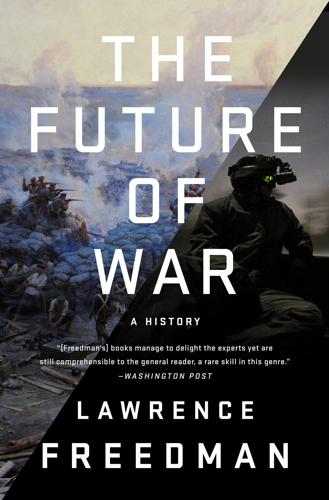
The Future of War
by
Lawrence Freedman
Published 9 Oct 2017
For an idea of scale, the administration put the numbers killed outside the recognized war zones of Afghanistan, Iraq, and Syria between January 2009 and December 2015 as between 2,372 and 2,581 combatants and between 64 and 116 civilians, while the London-based Bureau of Investigative Journalism estimated that as of August 2016 US drone strikes had killed between 492 and 1,138 civilians in Pakistan, Somalia, and Yemen. 14. See Chris Woods, Sudden Justice: America’s Secret Drone Wars (Oxford: Oxford University Press, 2015), and Jeremy Scahill and the staff of The Intercept, The Assassination Complex: Inside the Government’s Secret Drone Warfare Program (New York: Simon & Schuster, 2016). 15. The Trump Administration sought to ease restrictions on drone strikes. Greg Jaffe and Karen deYoung, ‘Trump administration reviewing ways to make it easier to launch drone strikes’, Washington Post, (13 March 2017). 16.
…
The temptation to use drones to gain tactical victories even though they provide scant strategic benefit was described as addictive.14 There was little evidence of addiction. Perhaps because the benefits were hard to confirm, while profound ethical and legal issues were being raised, the Obama Administration cut back on their use in Pakistan in 2012, and then worked to develop guidelines on targeting. As the number of drone strikes in Pakistan and Yemen fell, so, too, did civilian casualties.15 Unmanned systems had other roles in counter-insurgency, for example in dealing with Improvised Explosive Devices (IEDs). All this harked back to the early expectations of robot war, with all the anticipated advantages: ‘They don’t get hungry.
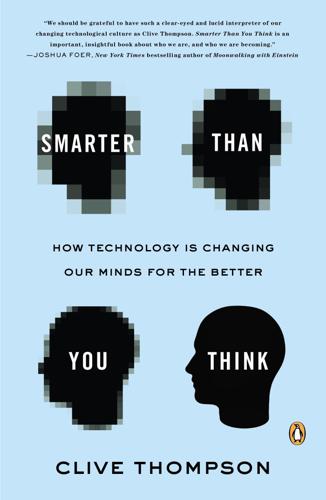
Smarter Than You Think: How Technology Is Changing Our Minds for the Better
by
Clive Thompson
Published 11 Sep 2013
They had taken what the sentence was about and incorporated it into their general understanding of the world, or what psychologists would call their schemas. This phenomenon is familiar to everyone who reads the daily newspaper. On Monday you read a story about drone strikes in the Waziristan area of Pakistan and how the local Pashtun population reacts angrily. A few days later, you won’t recall the specifics. But you will probably have incorporated the knowledge into one of your schemas for understanding the world: “Drone strikes are seriously angering many Pakistanis.” If you’re in a bar a few weeks later arguing about this subject, you’ll lunge for a search engine or Wikipedia to remind you of the specifics—the precise evidence that supports what you generally know.
…
In some ways, machines make for better transactive memory buddies than humans. They know more, but they’re not awkward about pushing it in our faces. When you search the Web, you get your answer—but you also get much more. Consider this: If I’m trying to remember what part of Pakistan has experienced many U.S. drone strikes and I ask a colleague who follows foreign affairs, he’ll tell me “Waziristan.” But when I queried this once on the Internet, I got the Wikipedia page on “Drone attacks in Pakistan.” A chart caught my eye showing the astonishing increase of drone attacks (from 1 a year to 122 a year); then I glanced down to read a précis of studies on how Waziristan residents feel about being bombed.

Survival of the Friendliest: Understanding Our Origins and Rediscovering Our Common Humanity
by
Brian Hare
and
Vanessa Woods
Published 13 Jul 2020
People who dehumanized Muslims were the most likely to sanction both their torture and drone strikes in the Middle East. As people felt more threatened by a particular group, Kteily found that dehumanization increased. He measured dehumanization of Muslims both before and after two extreme Islamists detonated bombs at the finish line of the Boston Marathon, and he found that rates spiked by almost 50 percent after the attack.38 The same spike occurred in the UK after a Muslim man killed a British soldier. Again, people who dehumanized Muslims the most were more likely to support drone strikes and counterterrorism efforts. Both attacks also predicted a tendency to generalize a single attacker’s actions to the whole of Islam.37 It is not just Americans who respond this way.

The New Digital Age: Transforming Nations, Businesses, and Our Lives
by
Eric Schmidt
and
Jared Cohen
Published 22 Apr 2013
His high profile was largely a result of his own self-promotion—he used viral videos and social networks to disseminate his charismatic sermons internationally. As the first major terrorist YouTube sensation, Awlaki’s influence is undeniable—several successful and would-be terrorists cited him as an inspiration—and his prominence earned him a spot on the U.S. government’s list of high-value targets. He was killed by a drone strike in September 2011. Awlaki’s social media mastery impressed the billionaire investor and reformist Saudi prince Alwaleed bin Talal al-Saud, who sees this as part of a broad trend across the region. “Even the most anti-Western religious figures in Saudi Arabia are now almost all using technology,” he told us, adding that “a number of them are even using mobile devices and increasingly social networks to issue fatwas”—Islamic edicts.
…
Today, most of the terrorists the military chases down are in failed states or ungoverned regions. In the future, these physical safe havens will also be connected, allowing terrorists to engage in nefarious virtual acts without any fear of law enforcement. When intelligence reveals known cyber terrorists planning something dangerous, extreme measures like drone strikes will come under consideration. Western governments will try to attract skilled hackers to their side as well. In fact, hackers and government agencies in the United States work together already, at least in matters of cybersecurity. For years, agencies like the Pentagon’s Defense Advanced Research Projects Agency (DARPA) and the National Security Agency (NSA) have recruited talented individuals at venues like the computer-security conference series Black Hat and the hacker convention Def Con.
…
The public will react favorably to the reduced lethality of drone warfare, and that will forestall outright war in the future. We already have a few years of drone-related news cycles in America from which to learn. Just months before the 2012 presidential election, government leaks resulted in detailed articles about President Obama’s secret drone operations. Judging by the reaction to drone strikes in both official combat theaters and unofficial ones like Somalia, Yemen and Pakistan, lethal missions conducted by drones are far more palatable to the American public than those carried out by troops, generating fewer questions and less outrage. Some of the people who advocate a reduced American footprint overseas even support the expansion of the drone program as a legitimate way to accomplish it.

This Is How They Tell Me the World Ends: The Cyberweapons Arms Race
by
Nicole Perlroth
Published 9 Feb 2021
And six months after that, Google began releasing seemingly inconsequential products to Chinese users—first an app, then a mobile game—apparently in hopes that by the time Dragonfly was ready for launch, it might be overlooked as simply the next logical step in Google’s regression. It wasn’t just China. In Saudi Arabia, Google was now hosting an app that allowed men to track and control the movements of their female family members. In the States, Google contracted with the Pentagon on a program—code-named Maven—to improve imaging for military drone strikes, prompting dozens of Google employees to quit in protest. Google’s advertising had long been a sore subject for the company, but after the 2016 election, it became clear that the company had profited off advertising on sites that peddled blatant disinformation and conspiracy theories. Google’s YouTube algorithms were radicalizing American youth, particularly angry young white men.
…
ISIS hackers called it a “kill list” and claimed to be inside their machines. In reality, it was just a list of people with.gov or .mil email addresses culled from a breach of an online retailer based in Illinois. The hacker responsible for the breach was now in prison; the hacker who tweeted out the “kill list” had been taken out in a drone strike the previous August. In terms of cyber capabilities, the terrorists were still years behind. And yet Daniel knew all too well that if any one of those actors got their hands on America’s cyber arsenal, well, God help us. The VEP Daniel now oversaw was designed to weigh the competing interests involved in keeping Americans safe.
…
Over a thirty-day period between August and September 2019, Iran’s hackers made no less than 2,700 hacking attempts against Trump’s campaign and everyone in its orbit. It was the first sign that—even with Russia sucking up most of the oxygen on election interference—other nations were meddling in 2020, for very different reasons. This, you see, was the precarious state of the Iranian cyber threat when—on January 2, 2020—Trump ordered up a drone strike on General Qassim Suleimani. The United States could have killed Suleimani a thousand times before. But previous administrations had never dared pull the trigger for fear his death would provoke the kind of large-scale retaliation that would lead to war. Iran’s powerful security and intelligence commander was like a second son to Iran’s Supreme Leader, Ali Khamenei.

The Glass Cage: Automation and Us
by
Nicholas Carr
Published 28 Sep 2014
Proponents note that drones keep soldiers and airmen out of harm’s way and, through the precision of their attacks, reduce the casualties and damage that accompany traditional combat and bombardment. Opponents see the strikes as state-sponsored assassinations. They point out that the explosions frequently kill or wound, not to mention terrify, civilians. Drone strikes, though, aren’t automated; they’re remote-controlled. The planes may fly themselves and perform surveillance functions on their own, but decisions to fire their weapons are made by soldiers sitting at computers and monitoring live video feeds, operating under strict orders from their superiors.
…
(Macmillan), 19–20 automation paradox, 91 Automation Specialties, 174 “Automation Surprises” (Sarter, Woods, and Billings), 162 automatization (proceduralization), 81–85 autonomy, 38, 61, 106, 108, 128, 131 autopilot, 43–63, 153, 154 Autor, David, 32 aviation, 43–63, 91, 100, 137–38, 215, 223 technology- vs. human-centered automation in, 165–66, 168–70, 172–73 see also autopilot Bainbridge, Lisanne, 157, 160 banks, banking, 115, 170–71 Baxter, Gordon, 77 behavior, changes in, 67, 97–100 being, 131, 133 Berardi, Franco, 118 Bhana, Hemant, 53 Bhidé, Amar, 77 bicycles, 51, 61 big data, 114 Big Data (Cukier and Myer-Schonberger), 122 Billings, Charles, 162 Bilton, Nick, 204 body, 11, 63, 132, 159, 162, 165, 213–14, 215–20, 222–23, 224 mind vs., 148–51, 215, 216 sketching and, 142–43 transport and, 132 Boeing, 27, 168–69, 170 Boeing 737, 56 Bombardier Q400 turboprop, 43–44 bombsight technology, 49 Bonin, Pierre-Cédric, 45, 168–70 boredom, 5, 14, 16 Boy’s Will, A (Frost), 212, 221 brain, 9–12, 20, 79–84, 148–51, 165, 169, 219 computer compared with, 119, 151 concentration and, 200 knowledge and, 9–10 navigation and, 129–33 of pilot, 57 technological, 36, 237n Braverman, Harry, 109–10 Bright, James, 110–12, 115, 237n Brillhart, Jacob, 147 Brin, Sergey, 199–201 Brooks, David, 128, 132 Brynjolfsson, Erik, 28–29, 30 Buffalo crash, 43–45, 154 Bush, George W., 93–94 business, 18, 28, 29, 30, 37, 38, 76, 112, 117, 168, 174–75, 196, 228 Buzsáki, György, 134–35 C-54 Skymaster transport plane, 49, 50 Cachin, Emil, 46–47, 232 California Polytechnic State University, 189 Campbell, Donald T., 122 cancer, 70–71 capital investments, 18, 28, 30, 31 capitalism, 21–22, 24, 28, 31, 109, 116, 160 Carlsen, Magnus, 82 cars and driving, 3–18, 34, 46 accidents, 7, 70, 91, 153, 154–55, 207, 208 author’s experience with, 3–6, 13–14, 80, 81 automation bias and, 69–70 GPS in, 128, 130, 136–37 luxury, 8 manual vs. automatic transmission in, 3–6 paper maps and, 130 self-driving, 6–8, 10, 12, 13, 120, 153–56, 183–87, 193, 204, 207, 208 while sleepy, 71–72 Cartesian dualism, 148–49 Cartlidge, John, 77 cartoons, 19, 33 Caruthers, Felix P., 174 cascading failures, 155 Centers for Disease Control, 220 Cerner Corporation, 96 Chabris, Christopher, 201 Chapanis, Alphonse, 158 Checklist Manifesto, The (Gawande), 104 Cheng, Britte Haugan, 73 chess playing, 12, 121 China, 31, 167 Churchill, Winston, 139 CIA, 120 Cisco, 195 City University London, 70 Clark, Andy, 149–51 Clarke, Arthur C., 197–98 cloud computing, 195, 202, 209 cognition, cognitive skills, 11–12, 56–58, 71–74, 81, 120, 121, 148–51, 165 of doctors, 105 embodied, 149–51, 213 cognitive map, 129–30, 135 cognitive psychologists, 72–76, 81, 129–30 Colgan Air, 45 communication, 36, 163, 198 doctor-patient, 103–6 Communist Manifesto (Marx and Engels), 225 computer-aided design (CAD), 138–42, 144, 145, 167, 219, 229–30 computer games, 75, 177–80, 219 computer programmers, 161, 162, 168 computers, 1, 2, 17, 33, 37, 38, 40, 159 architecture and design and, 138–47 automation and, 36, 43, 50–58, 62, 66–67, 69, 90, 91, 202–3 aviation and, 43, 46, 50–52, 54, 55, 57, 62, 153, 168, 170, 172–73 avocations and, 12 benefits of transferring work to, 17–18 boundary between humans and, 10–12 brain compared with, 119, 151 capabilities of, 8–9 in cars, 7, 8–9 costs of transferring work to, 18, 28, 30, 66–67 dependency on, 12–13 effects on workload of, 90, 91 ergonomics and, 164–68 expectation of aid of, 193–95 health care and, 93–106 human compared with, 153 as media devices, 219 memory experiment and, 79 mental processes and, 74 monitoring of, 17 oracle machine, 119–20 satellite-linked, 125–37 speed of, 118–22, 139, 156, 164, 173, 219 vocations and, 12 wearable, 12, 201 white-collar, 93–106 computer scientists, 156 computer simulation models, 93, 97 concentration, 200 Concours de la Sécurité en Aéroplane, 46 consciousness, 83, 119n, 121, 148–49, 150, 187 Continental Connection, 43–45, 54, 154 corporate auditors, 115 Cowen, Tyler, 31 craft workers, 23, 106, 109 Crawford, Kate, 122–23 Crawford, Matthew, 147–48 creativity, 10, 12, 14, 143, 144, 167, 206, 229 Cross, Nigel, 143–44 Csikszentmihalyi, Mihalyi, 14–16, 18, 85, 228–29 Cukier, Kenneth, 122 culture, 124, 131, 196, 198, 217, 220, 226 Curtiss C-2 biplane, 46–47 cutting grass, 215–16 Cybernetics, or Control and Communication in the Animal and the Machine (Wiener), 38–39 cyborgs, 2 dancing mice, 87–92 Dancing Mouse, The (Yerkes), 85–86 DARPA (Department of Defense laboratory), 165 Dassault, 140 data, 113, 114, 117, 119–22, 136, 167, 248n data fundamentalism, 122–23 data processing, 17, 195 decision aids, automated, 113–15, 166 drawbacks to, 77 decision making, 160, 166, 168 decision trees, 113–14 declarative knowledge, 9, 10–11, 83 Deep Blue, 12 degeneration effect, 65–85 automation complacency and bias and, 67–72 Whitehead’s views and, 65–67 dementia, 135–37 dependency, 130, 133, 136, 146, 203, 225 depression, 220 Descartes, René, 148, 216 design, designers, 137–47 computer-aided (CAD), 138–42, 144, 145, 167, 219, 229–30 human- vs. technology-centered automation and, 158–62, 164–65, 167–70, 172 parametric, 140–41 system, 155–57 video games as model for, 178–82 Designerly Ways of Knowing (Cross), 143–44 desire, 15, 17, 20, 83, 161, 206–7, 210 to understand the world, 123–24 deskilling, 55, 100, 106–12, 115 Dewey, John, 148, 149, 220 diabetes, 245n–46n diagnostic testing, 70–71, 99, 102 DiFazio, William, 27–28 Digital Apollo (Mindell), 60, 61 disease, 70–71, 113, 135–37, 245n–46n dislocation, 133 Do, Ellen Yi-Luen, 167 Doctor Algorithm, 154, 155 doctors, 12, 32, 70, 93–106, 114–15, 120, 123, 147, 155, 166, 173, 219 evidence-based medicine (EBM) and, 114, 123 patient’s relationship with, 103–6 primary-care, 100–104, 154 document discovery, 116 Dodson, John Dillingham, 88–89 Dorsey, Jack, 203 Dorsey, Julie, 167–68 Dostrovsky, Jonathan, 133 dot-com bubble, 117, 194, 195 drawing and sketching, 142–47 Dreyfus, Hubert, 82 driving, see cars and driving drone strikes, 188 drugs, prescription, 220–21 Drum, Kevin, 225 Dyer-Witheford, Nick, 24 Dyson, Freeman, 175 Dyson, George, 20, 113 Eagle, Alan, 176 Ebbatson, Matthew, 55–56, 58 ebook, 29 economic growth, 22, 27, 30 economic stability, 20 Economist, 225 economists, 9, 18, 22, 29, 30, 32–33, 109 economy, economics, 20, 25–33, 117 e-discovery, 116 education, 113, 120, 153 efficiency, 8, 17, 26, 58, 61, 114, 132, 139, 159, 173, 174, 176, 219 EMR and, 101, 102 factories and, 106–8 electric grid, 195–96 electronic medical records (EMR), 93–106, 114, 123, 245n–46n embodied cognition, 149–51, 213 Emerson, Ralph Waldo, 16, 232 End of Work, The (Rifkin), 28 engagement, 14, 165 Engels, Friedrich, 225 Engineering a Safer World (Leveson), 155–56 engineers, 34, 36–37, 46, 49, 50, 54, 59, 69, 119, 120, 139, 157–60, 162, 164, 168, 174, 175, 194, 196 Enlightenment, 159–60 entorhinal cortex, 134, 135 equilibrium, of aircraft, 61–62 ergonomics (human-factors engineering), 54, 158–60, 164–68 Ericsson, K.
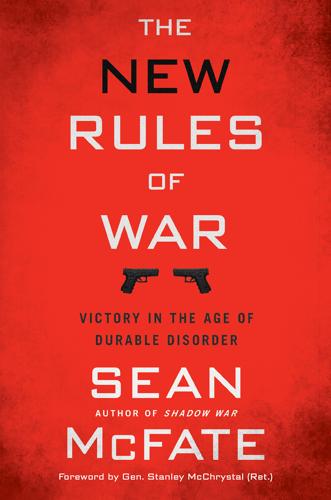
The New Rules of War: Victory in the Age of Durable Disorder
by
Sean McFate
Published 22 Jan 2019
Bush, Barack Obama, and Donald Trump administrations, three leaders whose views were vastly different. Obama’s reproach of Bush’s military adventurism abroad was a centerpiece of his campaign. Then he did an about-face once elected, shocking voters, by expanding the Afghanistan War with a massive troop “surge” and increasing the use of drones strikes and private military contractors abroad. In due course, candidate Trump eviscerated Obama’s meddling in Syria and Afghanistan, calling for the United States to withdraw from those regions, and quit NATO, too. Then President Trump flip-flopped on all three issues, stunning his supporters. Trump’s only explanation was that things “are much different when you sit behind the desk in the Oval Office,” which doesn’t explain much.21 The deep state operates according to its own compass heading regardless of who is formally in power.
…
Anything beyond the scope of that question does not make sense as victory, and simply declaring victory and leaving the conflict fools no one, especially history. Many today—some at the highest levels—confuse tactics with strategy, focusing on combat overmatch on the ground without linking it to a war’s political objectives. Tactical dominance achieves little in modern or future wars, as has been seen from Vietnam to Afghanistan. Precision drone strikes kill enemy leaders and other high-value targets, yet the threat grows. For every terrorist killed, three more appear. Troops joke that this is the “Whac-A-Mole” strategy, named after an arcade game and used colloquially to denote a repetitious and futile task: each time the enemy is “whacked,” it pops up again somewhere else.

The Skripal Files
by
Mark Urban
Dearlove, himself responsible for overseeing this great refocusing of effort, later commented that 9/11 ‘cast a very dark, long, and enduring shadow’ over the intelligence world. It made them complicit with torture, involved rendition of suspects to ‘ghost sites’, and spawned a major programme of assassination by US drone strike. In the context of this story though Dearlove’s remark goes to another enduring consequence of 9/11: the relegation of work against Russia to a lesser priority and the emergence of Vladimir Putin, for some years at least, as an ally in the counter-terrorist battle. For those involved in Whitehall’s secret world there were all kinds of implications to this.
…
While the Kremlin-friendly media gave airtime or column inches to all manner of alternative theories, the one story you do not see in their output during the weeks after Salisbury is coverage suggesting Russian intelligence agencies did indeed poison Skripal or the ‘how we did it’ sort of feature. In a British tabloid, by contrast, a successful drone strike against a jihadist in Syria would generate copy about unpiloted aircraft, the war against the militants, and various other topics. You will look in vain in March or April for the Russian story interviewing former KGB operatives giving their take, exploring past examples of poisoning (even the well-attested ones from the Soviet period), and so on.

Green Swans: The Coming Boom in Regenerative Capitalism
by
John Elkington
Published 6 Apr 2020
See also: https://hbr.org/2017/05/saving-the-planet-from-ecological-disaster-is-a-12-trillion-opportunity. 8.https://www.weforum.org/agenda/2016/01/the-fourth-industrial-revolution-what-it-means-and-how-to-respond/ 9.https://www.weforum.org/centre-for-the-fourth-industrial-revolution/areas-of-focus 10.Associated Press, “Major Saudi Arabia Oil Facilities Hit by Houthi Drone Strikes,” The Guardian, September 14, 2019. See also: https://www.theguardian.com/world/2019/sep/14/major-saudi-arabia-oil-facilities-hit-by-drone-strikes. 11.“Bitcoin Mining Ban Considered by China’s Economic Planner,” BBC News, April 9, 2019. See also: https://www.bbc.co.uk/news/technology-47867031. 12.“Synthetic Biology: A Whole New World,” The Economist Technology Quarterly, April 6, 2019. 13.https://en.wikipedia.org/wiki/CRISPR 14.Jennifer Kahn, “Preparing to Unleash Crispr on an Unprepared World,” Wired, March 19, 2019. 15.Clive Cookson, “Scientists Model ‘Gene Drive’ for Carrier Insect,” Financial Times, April 29, 2019. 16.Olaf J.

Enshittification: Why Everything Suddenly Got Worse and What to Do About It
by
Cory Doctorow
Published 6 Oct 2025
In the year after Dragonfly, Google management would confront a series of fresh revolts from a workforce that saw itself in the model of the thirteenth-century barons who pressed King John to sign the Magna Carta. The next major uprising came with the news that Google had embarked on a secret project to build AI tools to help guide lethal US drone strikes. Like Dragonfly, Project Maven bypassed Google’s much-vaunted internal ethics checks. (Subsequent leaks revealed top Google managers shouting at one another in ALL-CAPS emails about the absolute necessity to keep the project secret from Google’s workforce.) The revenues from Project Maven amounted to pocket change: a mere $9 million, barely enough to cover the kombucha budget for the cafeterias in just one of the dozens of Google’s worldwide offices.
…
Apple can provide you a secure, reliable computing experience without telling you that you’re not allowed to download a dictionary because it contains swear words, or that you’re not allowed to download the Tumblr app because some Tumblr accounts post images that include nudity, or that you’re not allowed to download an app that tracks civilian casualties of US drone strikes (all of which are apps that Apple rejected at one time or another on behalf of their billion-plus iPhone and iPad users around the world). There is nothing about operating a high-quality software store that requires Apple to scrape 30 cents out of every dollar earned by every software author. We know that’s true because every product Apple sells, except for its mobile devices, works this way.

Against the Web: A Cosmopolitan Answer to the New Right
by
Michael Brooks
Published 23 Apr 2020
Nonetheless, it’s hard not to imagine that Clinton’s repellent history on issues like the mass incarceration of “superpredators” didn’t play a role in adding to the disgust and indifference that resulted in non-white voter turnout being much lower than it was in 2012, or that at least a few voters in Dearborn didn’t care that Sanders was less likely than Clinton to kill their relatives in future drone strikes. In other words, the future of the US left depends on making common cause with people of all colors. This is likewise true on the international level. Global migration patterns have created surprisingly diverse populations, even in European countries that Americans often think of as exclusively white.

Dawn of the Code War: America's Battle Against Russia, China, and the Rising Global Cyber Threat
by
John P. Carlin
and
Garrett M. Graff
Published 15 Oct 2018
As a Scotland Yard official, Peter Clarke, said at the time, “What it did show us was the extent to which they could conduct operational planning on the internet. It was the first virtual conspiracy to murder that we had seen.”8 The first, but not the last. Al-Qaeda was undergoing a big shift by the mid-2000s, as relentless American and global pressure—from drone strikes to financial sanctions—reduced the core of the group to a shadow of its previous capabilities. The shift in its tactics accelerated around 2006, after British intelligence stopped a massive plot to down numerous transatlantic airplanes heading west to the United States. It felt like a near miss to us as UK officers swept down on some two dozen suspects on the night of August 9, 2006, but we’d gotten much better at interdicting the centrally directed, organized, spectacular attacks, like 9/11, that al-Qaeda preferred.
…
Plus, we can and should employ additional covert methods developed by our intelligence agencies and military. Too much of this cyberworld remains secret, but we need to bring it out of the shadows. Just as President Obama ultimately gave a speech at the National Defense University outlining how, where, and why the United States employs armed drone strikes—years after such attacks became a common tool of US counterterrorism—we need a president or high-ranking official to give a public speech outlining how, where, and why the United States will use cyber tools offensively and defensively. The cyber responses we’ve put into place over the last decade have already helped shape the behavior of adversaries like North Korea, China, and Iran—and the United States should make more use of them in the future.
…
See “National Policy on Telecommunications and Automated Information Systems Security” Nu Prometheus League, 97 nuclear counterproliferation efforts, 315 Obama, Barack, 12, 23, 71, 385, 386, 389, 390; on China and international law and norms, 270–271; China hacking presidential campaign of, 31, 167–169; on Consumer Privacy Bill of Rights, 345; cyber activities executive order, 343–344; on cyber threats, 198, 338, 340; cybersecurity progress during administration of, 64, 243; on drone strikes, 387; FBI addressed by, 172; inauguration, 171; presidential campaign, 31, 167–169; reset with Russia pursued by, 282–283; on responses to China cyber activity, 367; on Sony hack, 338; Xi meeting with, 368 Obama, Michelle, 19 Obermeier, Otto, 97 Oblivion, Brian, 124 O’Brien, Joe, 93 Office of Intelligence Policy and Review, 188 Office of Management and Budget, 362 Office of Personnel Management (OPM), 46, 352–366, 371 Office of the National Counterintelligence Executive, 197–198 Ohmae, Kenichi, 72 Oklahoma City bombing, 144, 174 Oldham, Nick, 202–206, 209, 264, 265, 267 Olsen, Matt, 136 The Onion, 378 online credit card fraud, 26–27 “Open Source Jihad” (magazine), 10 open systems, 79 Operation AURORA, 183 Operation DIGITAL GRIDLOCK, 65, 66, 122, 133 OPM.
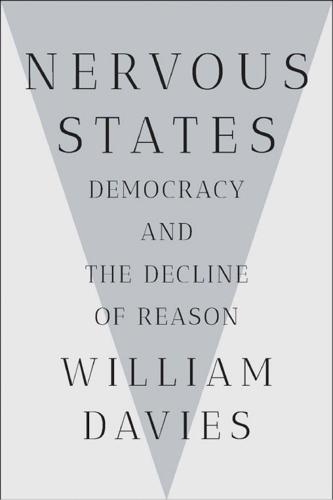
Nervous States: Democracy and the Decline of Reason
by
William Davies
Published 26 Feb 2019
In ordinary circumstances, there is a crucial and highly symbolic moment in the initiation of warfare when political leaders make a declaration of war, before handing over responsibility to generals to plan an attack. Today, however, the distinction between civilian and military interventions has slipped thanks to various developments. Targeted drone strikes, for example, involve individuals being closely watched for several months to gather evidence of their activities in the manner of a police force, before being killed in the manner of a military strike. They are closer to assassinations than conventional acts of war. The Russian government exploits the “full spectrum” of hostile interventions to disrupt enemies both within and beyond its borders.
…
Gaming can facilitate a type of gleeful nihilism, in which nothing matters except in terms of how it contributes to the outcome. Violence becomes purely instrumental, shorn of any ethical conundrums, much as it was in Clausewitz’s ideal of war. The cliché of the gamer is of the young man shut in his bedroom, who knows nothing of the physical reality of war. (In an age of drone strikes and automated weaponry, where foreign interventions can be executed from control rooms in Nevada, maybe that is the reality.) Yet the gap between the “virtual reality” of the game and the “material reality” of the civilian world outside produces a type of irony, in which features of one can be transported into the other, and vice versa, for comic effect.

Messing With the Enemy: Surviving in a Social Media World of Hackers, Terrorists, Russians, and Fake News
by
Clint Watts
Published 28 May 2018
Al-Qaeda affiliates with lower technical capability and limited internet access could create mainstream social media pages. After 2001, Western counterterrorism continued to improve each year, making terrorist travel to fronts in Iraq and Afghanistan more difficult by the day. Bin Laden and al-Qaeda’s central leadership suffered unending drone strikes and losses. Zarqawi’s death, in 2006, followed by two years of U.S. special operations raids in Iraq withered the newly branded Islamic State of Iraq dramatically, slowly dimming its star. As some al-Qaeda groups crumbled under relentless strikes, al-Qaeda in the Arabian Peninsula, immersed in war-torn Yemen, ascended in the jihadi hierarchy.
…
As for Shabaab in Somalia, after killing Omar Hammami and executing the spectacular Westgate Shopping Mall attack in Kenya less than two weeks later, it continued its steady decline. Defectors from its ranks grew, and just less than one year after Omar’s murder, a warhead hit the forehead of Ahmed Godane. A U.S. drone strike had killed Shabaab’s murderous leader. Today, Shabaab hasn’t vanished, nor will it. One jihadi terrorist group or another has called Somalia home for decades, and some violent fringe will remain through our lifetimes. But Twitter, the platform the group had used to reach new heights, ultimately helped unravel them from the inside out. 4 Rise of the Trolls “Who are these assholes?”

Hate Inc.: Why Today’s Media Makes Us Despise One Another
by
Matt Taibbi
Published 7 Oct 2019
You’ve got multiple unnamed sources telling reporters something they really can’t check in any conventional way. They could have used their names if they had so chosen, but did not.1 Meanwhile another person literally goes to court to ask permission to give the world his or her name and tell his or her story, and is denied. One of the most infamous varieties of this story involves drone strikes, as in: U.S. DRONES AND YEMENI FORCES KILL QAEDA-LINKED FIGHTERS, OFFICIALS SAY It used to be a big deal for America to be at war. When eight thousand American troops spent three days shooting Cubans hiding behind palm trees on the island of Grenada, apparently to rescue six hundred medical school students, the country was transfixed.
…
This is how totally without ethics our intelligence sources are, and how lazy newspapers are—we don’t even notice when we report the same terrorist killed by drone on different dates in different countries! Here we are, in the Guardian, killing Cole bomber Fahd al-Quso in Yemen in May 2012: Fahd al-Quso was hit by a missile on Sunday as he stepped out of his vehicle… The drone strike that killed Quso was carried out by the CIA after an extended joint surveillance operation with the US military, two American officials said, speaking on condition of anonymity because they were not authorized to speak to the media. And here we are, in the Telegraph, killing him in Pakistan, two years before: One of the FBI’s most wanted terrorists was killed alongside a Briton by a drone attack in Pakistan last month targeting al-Qaeda operatives planning a Mumbai-style attack in Europe, according to reports...

Dead in the Water: A True Story of Hijacking, Murder, and a Global Maritime Conspiracy
by
Matthew Campbell
and
Kit Chellel
Published 2 May 2022
They were wearing civilian clothes, but their military bearing would have been obvious even without the pistols they carried on their belts. The men fanned out from their vehicles and toward Facey’s door, looking carefully up and down the street. None of them identified themselves to him, though it wasn’t difficult to guess who they were. The US had been stepping up a campaign of drone strikes against Al Qaeda–linked militant groups in Yemen, and small groups of American special forces personnel and military contractors were on the ground. Facey’s embassy handlers had told him to expect the team, and he took a seat in the back of one of the SUVs, taking a long final look at his apartment building as he climbed in.
…
See Theodorou, Vassilios Y Yemen Arab Spring protests in, 7 British rule in, 4 civil conflict and economic collapse of, 4–5, 7–9, 48–49, 65 corruption in law enforcement of, 65, 94 expats in, 7, 49–50 FCO and British law enforcement difficulty investigating Mockett’s death in, 62–63, 77, 94, 96–97 investigation into Mockett’s death by, 65–66, 96–97 Ottoman Turks and, 4 under Saleh, 5, 48–49, 94, 200 socialist regime in, 4–5 ungovernable nature of, 4 US drone strikes in, 67 Yemeni Coast Guard (YCG), 200–201 Z Zavos, Chris, 116–17 breach of contract legal strategy to fight Suez Fortune, 118–19 investigative oversight of, 138–39 Marquez gives official statement on Brillante attack, 179–82 Plakakis, meetings with, 213 Plakakis testimony in court and, 190, 205–6, 214 trial strategy of, 132–33 Veale and Conner and, 136–37, 178–79 verdict in Suez Fortune case and, 226 Zenothemis, 100 Zurich Insurance Group, 35, 79–80, 128–29 A B C D E F G H I J K L M N O P Q R S T U V W X Y Z ABOUT THE AUTHOR Matthew Campbell is an award-winning reporter and editor for Bloomberg Businessweek magazine, covering major political and business stories across the Asia-Pacific region.

Convenient Terrorist : Two Whistleblowers' Stories of Torture, Terror, Secret Wars, and CIA Lies (9781510711648)
by
Kiriakou, John; Hickman, Joseph
Published 13 Jun 2017
In 2012, Abu Zubaydah’s defense team received a letter from a man in Jordan named Mahmoud explaining in great detail that an “Abu Zubaydah” had been spotted in a prison just outside of Amman, Jordan, in 2005. This could not have been same the Abu Zubaydah that had been captured in Pakistan, because in 2005 he was then in a CIA rendition site in Poland. Before he could be questioned further by Abu Zubaydah’s defense team, it was reported to them that Mahmoud was killed in a CIA drone strike. It becomes increasingly clear, the harder one looks into this, that issues of identity become central to our attempts to understand Abu Zubaydah’s fate, who he is, and how he arrived there. Whether the CIA had any sense of this—and when they had it—is another question entirely. Chapter Eight The Dead Pool ________________ One cannot follow the trail of Abu Zubaydah’s life without noticing that it is littered with bodies of dead men.

Postcapitalism: A Guide to Our Future
by
Paul Mason
Published 29 Jul 2015
In the face of this change, the power elite of modern capitalism has a lot at stake. While writing this book, my day job as a news reporter has taken me into three iconic conflicts that show how ruthlessly the elite will react. In Gaza, in August 2014, I spent ten days in a community being systematically destroyed by drone strikes, shelling and sniper fire. Fifteen hundred civilians were killed, one third of them children. In February 2015, I saw the US Congress give twenty-five standing ovations to the man who ordered the attacks. In Scotland, in September 2014, I found myself in the middle of a sudden and totally unpredicted radical mass movement in favour of independence from Britain.
…
By the year 2000 it felt different. It might not have been the ‘end of history’, but to the generation that built the neoliberal order it seemed as though history had at the very least become controllable. Every financial crisis could be met with monetary expansion, every terror threat obliterated with a drone strike. The labour movement as an independent variable in politics had been suppressed. The psychological byproduct in the minds of the policy elite was the idea that there are no impossible situations; there are always choices, even if some of them turn out to be tough ones. There is always a solution, and it is usually the market.

A World Without Work: Technology, Automation, and How We Should Respond
by
Daniel Susskind
Published 14 Jan 2020
(The case was eventually dismissed.)46 Or take Apple. The company has complete control over what apps can appear on the iPhone: they refused to host an app that is critical of their manufacturing methods, but supported an app that is highly critical of climate change science; they banned an app that helps its users track US drone strikes, but allowed an app that helps men in Saudi Arabia track women and limit their movements.47 In 2016, Apple refused to help the US government to unlock the iPhone of one of the terrorists involved in the San Bernardino mass shooting, arguing that forcing them to write new software to break the encryption was a violation of their freedom of speech.48 And, finally, think about Microsoft.
…
Nicole Chavez, “Arkansas Judge Drops Murder Charge in Amazon Echo Case,” CNN, 2 December 2017. 47. J. Susskind, Future Politics, p. 236; the “Inconvenient Facts” app, at https://apps.apple.com/us/app/inconvenient-facts/id1449892823?ls=1 (accessed June 2019); Josh Begley, “After 12 Rejections, Apple Accepts App That Tracks U.S. Drone Strikes,” Intercept, 28 March 2017; Ben Hubbard, “Apple and Google Urged to Dump Saudi App That Lets Men Track Women,” New York Times, 13 February 2019. 48. Arash Khamooshi, “Breaking Down Apple’s iPhone Fight with the U.S. Government,” New York Times, 21 March 2016. Also see J. Susskind, Future Politics, p. 155. 49.

Custodians of the Internet: Platforms, Content Moderation, and the Hidden Decisions That Shape Social Media
by
Tarleton Gillespie
Published 25 Jun 2018
An unofficial WikiLeaks app was removed in 2010, just after WikiLeaks released its trove of U.S. diplomatic cables; while the app was not designed or sponsored by WikiLeaks, it streamlined access to WikiLeaks documents and donated part of the price of the app to WikiLeaks, as a proxy user donation.31 Apple executives (like those at other companies at the time, including Amazon, PayPal, and Mastercard) worried that supporting the app and donations would open the company to criminal liability. In 2012 Apple rejected Drones+, an app that tracked U.S. drone strikes based on news reports. Two years later it was accepted—but without the drone-tracking feature and with a new name, Metadata+. The designers then restored the drone-tracking feature to the app after it was in the store.32 Other apps ran afoul of content prohibitions for profanity, nudity, and violence.
…
What about antiextremist activists or journalists engaged in conversation with terrorist actors? What about innocent associates? Antiterrorist tactics in the West have been shifting: from identifying likely terrorists based on directed investigation to identifying individuals who match the data patterns of terrorists—assessments that become the basis of surveillance, arrests, and drone strikes.109 The same logic can creep into automatic assessment of social media. The philosophical challenge is perhaps even more worrisome. Machine-learning techniques are inherently conservative. The faith in sophisticated pattern recognition that underlies them is built on assumptions about people: that people who demonstrate similar actions or say similar things are similar, that people who have acted in a certain way in the past are likely to continue, that association suggests guilt.

The Long Game: China's Grand Strategy to Displace American Order
by
Rush Doshi
Published 24 Jun 2021
Cole, “China’s Carrier: The Basics,” USNI News, November 27, 2012, https://news.usni.org/2012/11/27/chinas-carrier-basics. 75The Science of Campaigns [战役学] (Beijing: National Defense University Press [国防大学出版社], 2006), 316–30. 76Li Yousheng [李有升],Joint Campaign Studies Guidebook [联合战役学教程] (Beijing: Academy of Military Science [军事科学院], 2012), 259. 77Cole, The Great Wall at Sea, 105. 78Ibid., 102; Lim, China’s Naval Power, 93. 79“Jane’s World Navies” (IHS Jane’s, May 19, 2015). 80“The PLA Navy: New Capabilities and Missions for the 21st Century,” 24. 81Cole, The Great Wall at Sea, 106. 82You Ji, Armed Forces of China (Singapore: Allen & Unwin, 1999), 194. 83Cole, The Great Wall at Sea, 106. 84Ibid., 106–7. 85“Jane’s World Navies.” 86Tai Ming Cheung, Growth of Chinese Naval Power, 30–32; You Ji, Armed Forces of China, 193–94. 87Minnie Chan, “As Overseas Ambitions Expand, China Plans 400 Per Cent Increase to Marine Corps Numbers, Sources Say,” South China Morning Post, March 13, 2017, https://www.scmp.com/news/china/diplomacy-defence/article/2078245/overseas-ambitions-expand-china-plans-400pc-increase. 88Ibid. 89Guo Yuandan, “Chinese Navy Sees Broadened Horizon, Enhanced Ability through 10-Year Escort Missions,” Global Times, December 30, 2018, https://www.globaltimes.cn/content/1134066.shtml. 90Shaio H. Zerba, “China’s Libya Evacuation Operation: A New Diplomatic Imperative—Overseas Citizen Protection,” Journal of Contemporary China 23, no. 90 (2014): 1092–1112; Ernest Kao, “China Considered Drone Strike on Foreign Soil in Hunt for Drug Lord,” South China Morning Post, February 19, 2013, https://www.scmp.com/news/china/article/1153901/drone-strike-was-option-hunt-mekong-drug-lord-says-top-narc. 91“Djibouti and China Sign a Security and Defense Agreement,” All Africa, February 27, 2014, https://allafrica.com/stories/201402280055.html. 92During its blunting phase, China resorted to force in three instances.
…
That same year, after thirteen Chinese merchant sailors were killed along the Mekong, Beijing worked to extradite six suspected foreigners to face consequences in China; launched the first ever extraterritorial joint patrols of the Mekong with Myanmar, Thailand, and Laos; and even considered a drone strike on an overseas drug lord.90 In 2013, China declared an Air Defense Identification Zone over the East China Sea. In early 2014, China opened negotiations for its first official overseas base in Djibouti under a “security and defense strategic partnership” that it signed with the country.91 That same year, it began building and then militarizing artificial islands in the South China Sea, a significant departure from its previous approach, and constructed airfields, docks, and facilities on them.

Seventeen Contradictions and the End of Capitalism
by
David Harvey
Published 3 Apr 2014
Anyone who does not see elements of such a dystopian world already in place around us is deceiving herself or himself most cruelly. The issue is not, therefore, that capital cannot survive its contradictions but that the cost of it so doing becomes unacceptable to the mass of the population. The hope is that long before dystopian trends turn from a trickle of drone strikes here and occasional uses of poison gas against their own people by crazed rulers there, of murderous and incoherent policies towards all forms of opposition in one place to environmental collapses and mass starvation elsewhere, into a veritable flood of catastrophic unequally armed struggles everywhere that pit the rich against the poor and the privileged capitalists and their craven acolytes against the rest … the hope is that social and political movements will arise and shout, ‘Ja!
…
Nature, as we have seen, is treated ‘in an instrumental way’ and this does ‘violence’ to ‘Nature and to our own and other people’s bodies. The culture of everyday life is – with all the disturbing ambiguity this antinomic creation contains – a culture of violence, or, in its most extreme form, a systematic, thought-out, sublimated, aggravated culture of barbarism.’4 This is most obvious, of course, when we think of drone strikes and gas chambers. But Gorz’s point is that it is this that also deeply penetrates to the very core of daily life by way of the instruments we daily use to live that life, including all those we handle in our work. There is, evidently, a deep longing in popular culture to somehow humanise the impacts of this barren culture of technology.

After the Fall: Being American in the World We've Made
by
Ben Rhodes
Published 1 Jun 2021
Then we would go to war against the same infrastructure that we had built, including some of the same men that we had armed and trained, and others who were radicalized by the Saudi money that funded their rigid religious education and supported by the same Pakistani intelligence service that had been our partner in the 1980s. Drone strikes in those same Pakistani tribal regions. Counterinsurgency warfare against those same mujahideen in Afghanistan. Secondary wars in places like Yemen. Our effort in the 1980s had generated unintended consequences like the birth of al-Qaeda just as our post-9/11 wars have generated all manner of unintended consequences, including the creation of al-Qaeda in Iraq, which became ISIS.
…
But these measures set in motion sweeping powers—to conduct surveillance, to restrict immigration, to detain people without trial, to torture people in the custody of the American government, to kill people in other countries. Some of these excesses were curbed or reformed in the years that followed, and Americans could defend individual measures at a given time, as I often did in government—from the use of drone strikes to the surveillance of telecommunications. But the sum total of this apparatus remained a sprawling, securitized enterprise, and sent a signal to other nationalist, authoritarian leaders who were more than happy to draw the same conclusion as Ching Cheong. Those same powers could be used to restrict immigration, target political opposition, shut down civil society, control the media, and expand the power of the state, all under the guise of antiterrorism.

Border and Rule: Global Migration, Capitalism, and the Rise of Racist Nationalism
by
Harsha Walia
Published 9 Feb 2021
See also Hindutva Africa and, 71 CAA in, 190 caste in, 175–176 far right in, 9, 169, 171–178, 189 Islamophobia in, 175 kafala system and, 151–153 Kashmir and, 98, 172, 177, 192 Look East policy, 192 migrants from, 136 Muslim people in, 171–174, 178, 189–191 Myanmar and, 191–192 NRC in, 189–190 statelessness in, 9, 189–190 World Bank and, 70 India–Bangladesh border, 178 Indiana, 29 Indian Act, 83 Indian Citizenship Act, 25 Indian Ocean, 148, 150 Indian Removal Act of 1830, 24 Indian Wars, 24, 26, 78 Indigenous people, xix, 171, 186, 195, 196, 205, 209–211, 215, 218–219 debt and, 65 far right and, 9 free trade agreements and, 49, 51 gender and, 24–25, 27, 50–51 in Australia, 95–96 in Bolivia, 218 in Brazil, 180–182 in Canada, 1, 25, 73, 82–83, 156, 158–160, 162, 164 in Central America, 27, 43, 73 in Honduras, 44, 45 in Latin America, 27 in Mexico, 25, 27, 50–51 in Nauru, 98 in Papua New Guinea, 94–95, 98 in Spain, 112 in the United States, xvii, 13, 21–28, 32–33, 35–36, 82, 84, 200, 212–213 resource colonialism and, 95 surveillance of, 57 Indonesia, 73, 100–101, 136, 147, 151, 165, 187, 214 Industrial Police, 62 Industrial Workers of the World, xviii, 34–35, 85 Instacart, xv, 214 Institute of Race Relations, 119 Intercede, 165 International Black Women for Wages for Housework, 141 International Civil Liberties Monitoring Group, 57 International Court of Justice, 97 International Democratic Union, 170 International Domestic Workers Federation, 144 International Finance Corporation, 70 International Holocaust Remembrance Alliance, 173 International Labour Organization, 133, 138, 142, 144 International Monetary Fund, 49, 63–64, 113, 121, 143 International Organization for Migration, 66, 86, 106, 120 International Trade Union Confederation, 145, 152 International Wages for Housework, 141 Inuit people, 186 Ipili people, 94–95 Iran, 60, 88, 93, 122, 149 Iran-Contra scandal, 44 Iraq Blackwater in, 4 drone strikes in, 60 Kuwait and, 193 migrant workers in, 135–136 Muslim ban and, 60 refugees from, 20, 57, 100, 106, 114, 116 troops redeployed from, 109 US Border Patrol in, 3, 36, 89 US invasion of, 56 Ireland, 111 Irish people, 95 Irom Sharmila, 176 ISIS, 56 Islam, 126, 148, 150, 187–188 Islamophobia, 159, 197, 205.
…
See also Indigenous people Native Regulations and Ordinances, 97 NATO, 57, 114, 117, 158 Naturalization Act of 1790, 32 Nauru, 4, 88, 97–103 Naxalites, 176 Nazis, 30, 86, 160, 169–170, 173–174, 185, 212 Ndugga-Kabuye, Benjamin, 28 Negros Island, 179 Neilson, Brett, 140 Nellie Massacre, 190 Nepal, 136, 151, 153, 178 Netanyahu, Benjamin, 172–174, 177 Netherlands, 81, 133, 170, 183, 187, 188 Nevada, 23 Newcastle, Australia, 101 New Deal, 159 New Democracy, 114–115, 184 New Mexico, 23 New Orleans, 4 New People’s Army, 180 New South Wales, 95 New World, 83 New York, 54, 68, 142 New York Taxi Workers Alliance, 68 New York Times, 141 New Zealand, 74, 213 Boochani in, 94 Five Country Conference, 92 Nauru and, 97 “racial destiny” of, 96 Ngai, Mae, 35 Nicaragua, 20, 43, 73 Niger, 4, 107, 109, 120 Nigeria, 31, 106 Nitaqat, 151 Nixon, Richard, 40–41, 199 Nkrumah, Kwame, 125 Nobel Peace Prize, 60, 191 No Friend but the Mountains: Writing from Manus Prison (Boochani), 93 Non-immigrant Employment Authorization Program of 1973, 161 Nopper, Tamara K., 108 North America, 61, 144 North American Free Trade Agreement, 48–52, 65, 206, 207 Northern Triangle, 73 Northrop Grumman, 82 Northwest Detention Center, 38 Norway, 169, 186 Nyerere, Julius, 124 O Obama, Barack, xvi, 219 AFRICOM and, 56 immigration policies of, 22, 58–60, 80, 206 Mérida and, 90 Ocasio-Cortez, Alexandria, 196 Occupy movement, xvi Oceania, 4, 6, 92, 96, 97, 123 Odeh, Rasmea, 57 Ohio, xv Oklahoma, 21 Oluo, Ijeoma, 196 Oman, 146 Omar, Ilhan, 196 Ontario, 156–157 Operation Camarena, 44 Operation Gatekeeper, 52 Operation Green Hunt, 176 Operation Hera I, 112 Operation Hold the Line, 52 Operation Intercept, 41 Operation Mare Nostrum, 117 Operation Pacific Eagle, 180 Operation Safeguard, 52 Operation Sophia, 117 Operation Sovereign Borders, 101 Operation Vigilant Sentry, 208 Operation Wetback, 134 Oranienplatz, 122 Orbán, Viktor, xvii, 108, 115, 121, 173, 185 Oregon, 29 Organ Pipe Cactus National Monument, 78 Osman, Jamila, 31 Oso, Tia, 28 Ossome, Lyn, 72 Otuteye, Mavis, 89 Otzma Yehudit, 172 P Pacific Climate Warriors, 101 Pacific Islander people, 96 Pacific Island Labourers Act, 96 Pacific Islands, 101 Pacific Ocean, 2 Pacific Solution, 88, 92, 99–100, 102, 109 Page Act, 32, 34 Pahari people, 65 Pakistan drone strikes in, 60 India and, 177–178, 190 kafala system and, 151–152 post-9/11 repression and, 54 refugees from, 57, 105, 116 refugees in, 68 Palantir, 80 Palestine, 4, 57, 69, 149, 192, 201, 209 Palestinian people, 69, 149, 173, 177, 194 Paley, Dawn, 45 Pallares, Jesus, 85 Palmer Raids, 32 Pan-African Network in Defense of Migrants’ Rights, 112, 145 Panama, 73 Papua New Guinea, 4, 97–98, 100–101 Indigenous people in, 94–95, 98 Manus Prison in, 93–95, 103 Supreme Court of, 102 Paris, 11 Parsi people, 190 Partition of Africa, 127 Party for Freedom, 170, 183, 187 Pastoral Land Commission, 181 Patel, Priti, 185 Patel, Raj, 141 Patricio, Bennett, 77 PATRIOT Act, 54 Patriotic Europeans against the Islamization of the Occident, 183 Peart, Ned, 156 Pentagon, 79, 208 People’s Party of Canada, 203 People’s Republic of China, 133 Perry, Keston, 208 Personal Responsibility and Work Opportunity Reconciliation Act, 53 Peru, 218 Peterson, Jordan, 170 Pezzani, Lorenzo, 119 Philippine-American war, 143 Philippines, 26, 143–144, 181, 214 far right in, 9, 171, 178–180, 183, 189 kafala system and, 147, 151 Plan Condor, 218 Poland, 116, 133, 185 police, 1, 67, 107, 213 abolition of, 83 activists targeted by, 118 Calais and, 105 CIA and, 45 Covid-19 and, 10–11 far right and, xvi immigration enforcement by, 58, 84 in Bangladesh, 62 in Canada, 164 in Croatia, 116 in India, 214 in Mexico, 90 in Sudan, 121 in the Philippines, 179–180 Manus Island and, 94 migrant worker programs and, 135 Muslim entrapment by, 54 nation-state and, xvii on Greek border, 114 origins of, 33 racial profiling by, 29, 31, 42 uprisings against, 3, 5, 36 war on crime and, 53 war on drugs and, 40 Polk, James, 23 Popular Front for the Liberation of Palestine, 57 Porgera Gold Mine, 94 Port-au-Prince, 48 Portland, 36 border patrol in, 3 Port Moresby, Papua New Guinea, 102 Portugal, 111, 124, 132 Porvenir Massacre, 33 Post and Telegraph Act, 96 Povinelli, Elizabeth, 198 Prashad, Vijay, 218 Pratas, Jose, 155 Pratt, Geraldine, 144 Prawo i Sprawiedliwosc, 183 Preibisch, Kerry, 134, 162 Pressley, Ayanna, 196 Presteve Foods, 155 Prince, Erik, 4 Proposition 187, 34 ProSavana, 72 Protect Mauna Kea, 210 Puar, Jasbir, 78 Public Gatherings Law, 193 Puerto Rican people, 53 Puerto Rico, 26 Q Qasim, Peter, 98 Qatar, 141, 146, 150, 152–153, 154 Africa and, 71 Q’eqchi’ Maya people, 27 Quebec, 165 Quebec City, 160 Quechua, 218 queer people.

Our Enemies Will Vanish: The Russian Invasion and Ukraine's War of Independence
by
Yaroslav Trofimov
Published 9 Jan 2024
Quickly, the Russians realized they could be attacked from all sides. Convoys started traveling in large numbers, with 80 to 120 vehicles, for safety. Frequent breakdowns meant that these columns often had to stop to fix the straggler and to reload its cargo and passengers, making them more vulnerable to drone strikes and to Ukrainian artillery. Civilians in almost every village, Artyom said, started passing information to the Ukrainian military. The Russians responded by detaining anyone with suspicious information on their phone, often shipping these inmates to interrogation facilities within Russia. The initial successes made more local men join the resistance.
…
Russia’s military hardware on the island still allowed Moscow to control all of Ukraine’s merchant shipping lanes, and to monitor military activity throughout southern Ukraine, as well as NATO movements on the coast of Romania, Budanov explained. “Snake Island is strategically important, militarily and economically,” he said. “The Russians, like the Ukrainians, will fight for it to the end.” Fragmentary videos of Ukrainian drone strikes on the island had already come out on social media. Budanov didn’t tell me, however, that his men had just attempted one of the most daring operations of the entire war. Snake Island is tiny: only fifty-two arid acres, with a handful of buildings, a lighthouse built on the foundations of an ancient Greek temple, a museum, a helicopter landing pad, and a rusty pier.

Imaginable: How to See the Future Coming and Feel Ready for Anything―Even Things That Seem Impossible Today
by
Jane McGonigal
Published 22 Mar 2022
One important insight that has come out of these conversations is the need for a trauma-informed approach to developing urban drone infrastructure. Many millions of people worldwide live with PTSD symptoms either from having lived under the terrorizing threat of military drone strikes or from having participated in violent military drone strikes themselves. Creating a world full of drones can’t be done, shouldn’t be done, without acknowledging the extreme harm that they have caused as a weapon of war. When you find a signal of change that really sparks your passion, roll up your sleeves and get involved.

The Controlled Demolition of the American Empire
by
Jeff Berwick
and
Charlie Robinson
Published 14 Apr 2020
Especially if one happens to be guilty of the same exact behavior. During Obama’s eight years in office, he bombed Afghanistan and Iraq, just like the previous President, then added Somalia, Pakistan, Libya, Yemen, and Syria…all smaller countries. So much for that Nobel Peace Prize that he presumably wore around his neck while ordering drone strikes on civilians, water treatment plants, and hospitals. It is also pretty ridiculous to accuse Putin of jailing political opponents when Obama put more whistleblowers in prison during his term in office that all of the previous Presidents combined.140 This is called “projection”, and it is when a person takes all of their faults and issues that they have, and they pretend that the person they are fighting has them instead.
…
• Executive Order 13606 - Basically, the government can confiscate whatever they want from the people, and they can conscript Americans into working for the government without compensation. They can seize property, persons, or resources at any time, in “peacetime and times of national emergency” without having to pay for it. This was one of Obama’s gifts to the psychopaths that controlled him. During the eight years of President Obama, drone strikes against American citizens, 23 Executive Orders pertaining to gun control, and the PRISM spying program were all enacted in complete violation of the United States Constitution. No voting by the Congress, no debating by the people, and no honest discussion about this on the corporate nightly news.
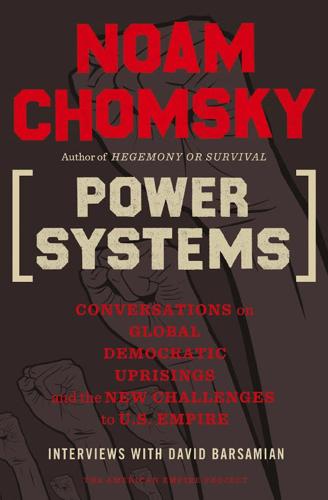
Power Systems: Conversations on Global Democratic Uprisings and the New Challenges to U.S. Empire
by
Noam Chomsky
and
David Barsamian
Published 1 Nov 2012
Anatol Lieven, “Afghanistan: The Best Way to Peace,” New York Review of Books, 9 February 2012. 34. Jane Perlez, “Pakistanis Continue to Reject U.S. Partnership,” New York Times, 30 September 2009. See also Pew Global Attitudes Project, “Public Opinion in Pakistan: Concern About Extremist Threat Slips: America’s Image Remains Poor,” 29 July 2010. 35. Scott Shane, “Drone Strike Kills Qaeda Operative in Pakistan, U.S. Says,” New York Times, 19 January 2012. 36. “US Embassy Cables: ‘Reviewing Our Afghanistan-Pakistan Strategy,’” Guardian (London), 30 November 2010. 6. Mental Slavery 1. Bob Marley and the Wailers, “Redemption Song,” Uprising (Tuff Gong/Island, 1980). 2.
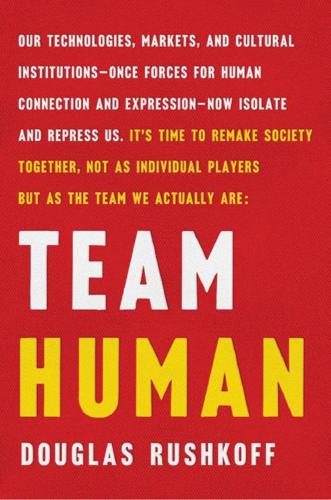
Team Human
by
Douglas Rushkoff
Published 22 Jan 2019
These arguments never acknowledge the outsourced slavery, toxic dumping, or geopolitical strife on which this same model depends. So while one can pluck a reassuring statistic to support the notion that the world has grown less violent—such as the decreasing probability of an American soldier dying on the battlefield—we also live with continual military conflict, terrorism, cyber-attacks, covert war, drone strikes, state-sanctioned rape, and millions of refugees. Isn’t starving a people and destroying their topsoil, or imprisoning a nation’s young black men, a form of violence? Capitalism no more reduced violence than automobiles saved us from manure-filled cities. We may be less likely to be assaulted randomly in the street than we were in medieval times, but that doesn’t mean humanity is less violent, or that the blind pursuit of continued economic growth and technological progress is consonant with the increase of human welfare—no matter how well such proclamations do on the business bestseller lists or speaking circuit.
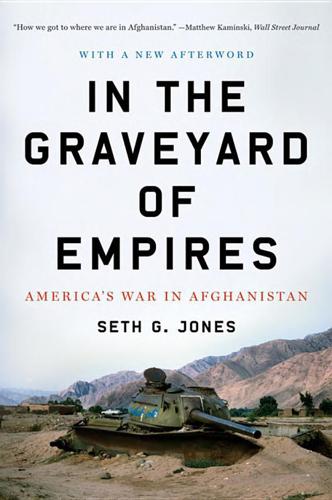
In the Graveyard of Empires: America's War in Afghanistan
by
Seth G. Jones
Published 12 Apr 2009
Instead of continuing a faltering counterinsurgency campaign, they believe the United States should withdraw most of its forces and shift to a counterterrorism strategy that targets al Qa’ida terrorists with Special Operations Forces and drones. Steven Simon, for example, who served as senior director for transnational threats on the Clinton administration’s National Security Council, said that “Washington should concentrate on its already effective policy of eliminating al Qa’ida’s leadership with drone strikes” rather than target the Taliban, since “the moment to rescue the mission…has passed.”4 Simon continued that the core al Qa’ida threat to America resides in Pakistan, not Afghanistan.5 University of Chicago professor John Mearsheimer, a West Point graduate, similarly wrote that the U.S. government should “accept defeat” and “withdraw its forces from Afghanistan.”6 In September 2009, U.S.
…
Jalaluddin’s son Sirajuddin, who was given the title “khalifa” as the leader of the Haqqani network, developed a close relationship with al Qa’ida leaders in Pakistan, who helped him orchestrate a range of audacious terrorist attacks in Afghanistan.11 One of the most spectacular was the September 17, 2009, attack in Kabul, for which some al Qa’ida operatives from Peshawar helped build the IED that killed six Italian soldiers.12 Second, proponents of a withdrawal overstate the effectiveness of drone strikes using MQ-1 Predators and MQ-9 Reapers. Drones can have a short-term impact, as they did in the 2008 and 2009 attacks on al Qa’ida operatives such as Abu Khabab al-Masri, a chemical and biological expert; Khalid Habib al-Masri, a commander in Afghanistan; and Abu Jihad al-Masri, an external operations planner.

The Internet Is Not What You Think It Is: A History, a Philosophy, a Warning
by
Justin E. H. Smith
Published 22 Mar 2022
Even where there is no flowing water, maps of a sovereign’s territory have often been seen not just as microcosms, but as condensed epitomes of his reign. No area of a palace is better designed to reassure a sovereign of his hold on power than the map room. Even if until the past century or so such a room could not give a leader any immediate power of action (Peter the Great could not, say, order a drone strike on an unruly corner of his empire while studying a representation of it on the map-room wall), nonetheless there is nothing quite like visualization—of a space, in the case we are discussing here, but certainly also of data—to make a person feel on top of things. Leibniz’s added twist, in the case of the relief map he would have had built in Wolfenbüttel (the plan never materialized), is to meld the representational and the real, to seize onto the real principles of hydraulics to cause the water to flow on the map of Russia just as it does in Russia itself.

How to Be Black
by
Baratunde Thurston
Published 31 Jan 2012
Remain silent on the most intense racial issues. Occasionally you can comment but do so in a more symbolic fashion, perhaps by inviting the aggrieved parties to your home for a beverage, awkward conversation, and photo ops. Be perfect Black people in general are under the microscope. Black people who have the power to launch drone strikes in foreign lands are under even more scrutiny. Millions are looking for an excuse to oust you, and making mistakes, no matter how small, gives them ammunition. So do yourself a favor. Use spell-check, floss regularly, know the answers to every problem in the universe, and be perfect. Simple. Initiate the plan for reparations, white slavery, and radical social and economic transformation For some segment of White America, you will never be American.
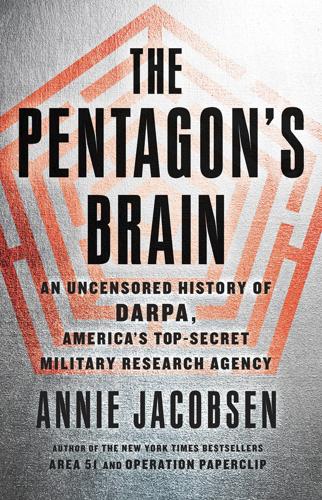
The Pentagon's Brain: An Uncensored History of DARPA, America's Top-Secret Military Research Agency
by
Annie Jacobsen
Published 14 Sep 2015
It was here at Fort McNair that, fifty-five years earlier, twenty-two defense scientists gathered to produce ARPA Study No. 1, the first of thousands of secret and unclassified DARPA studies outlining which weapons would best serve the United States in coming wars. “America is at a crossroads,” President Obama said. “We must define the nature and scope of this struggle”—meaning the war on terror—“or else it will define us.” Much of the rest of the president’s speech focused on the use of armed drones. He mentioned drone strikes on fourteen separate occasions in his roughly fifteen-minute talk. The summary point reported across news outlets was that President Obama was curtailing the use of drones. He was doing no such thing, nor, really, did the president say he was. He merely said, “I’ve insisted on strong oversight of all lethal action,” meaning that White House and CIA lawyers would continue to be in the loop before individual terrorists were targeted for assassination by unmanned systems, including American citizens living overseas.
…
(Some would, including Major Nidal Hasan, who killed thirteen people and injured at least thirty more in a mass shooting at Fort Hood in Texas in 2009.) Al-Awlaki also served as imam at the Dar Al-Hijrah mosque, from January 2001 to April 2002. Not for another four years would Anwar Al-Awlaki become the first U.S. citizen officially assassinated by the U.S. government, in a drone strike on a desert highway in Yemen. Dr. Esam Omeish had been an associate of Anwar Al-Awlaki, through Dar Al-Hijrah, but association is not a crime. Were the dragonflies in Lafayette Park insect-inspired drones sent to spy on the doctor and the antiwar crowd? Or were they just unusually large dragonflies?
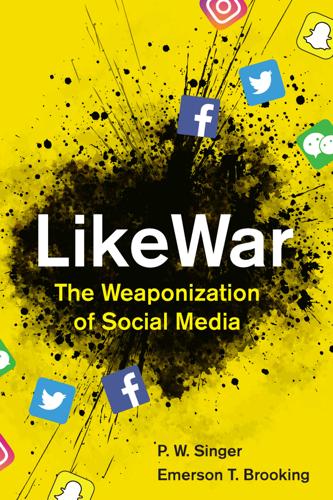
Likewar: The Weaponization of Social Media
by
Peter Warren Singer
and
Emerson T. Brooking
Published 15 Mar 2018
In al-Awlaki’s case, this meant the platform was helpfully steering viewers of his videos to videos by other terrorist propagandists. By 2011, the U.S. government had had enough, and al-Awlaki was sentenced to death in absentia by an Obama administration legal memo stating that his online propaganda “posed a continuing and imminent threat of violent attack.” Soon after, he was slain by a U.S. drone strike. On YouTube, however, al-Awlaki’s archive became something else: a digital shrine to a martyr. In death, al-Awlaki’s online voice grew even more popular, and the U.S. intelligence community began noticing an uptick in views of his videos that accompanied spikes in terrorist attacks. This illustrated another conundrum.
…
WIN THE NET, WIN THE DAY 148 “Media weapons”: Charlie Winter, “Media Jihad: The Islamic State’s Doctrine for Information Warfare” (report, International Centre for the Study of Radicalisation and Political Violence, 2017), 18, http://icsr.info/wp-content/uploads/2017/02/Media-jihad_web.pdf. 148 “You can sit”: Lorraine Murphy, “The Curious Case of the Jihadist Who Started Out as a Hacktivist,” Vanity Fair, December 15, 2015, https://www.vanityfair.com/news/2015/12/isis-hacker-junaid-hussain. 148 “He had hacker cred”: Ibid. 148 easy familiarity with: Del Quentin Wilber, “Here’s How the FBI Tracked Down a Tech-Savvy Terrorist Recruiter for the Islamic State,” Los Angeles Times, April 13, 2017, http://www.latimes.com/politics/la-fg-islamic-state-recruiter-20170406-story.html. 149 some 30,000 recruits: Martin Chulov, Jamie Grierson, and Jon Swaine, “Isis Faces Exodus of Foreign Fighters as Its ‘Caliphate’ Crumbles,” The Guardian, April 26, 2017, https://www.theguardian.com/world/2017/apr/26/isis-exodus-foreign-fighters-caliphate-crumbles. 149 “The knives have been”: Rukmini Callimachi, “Clues on Twitter Show Ties Between Texas Gunman and ISIS Network,” New York Times, May 11, 2015, www.nytimes.com/2015/05/12/us/twitter-clues-show-ties-between-isis-and-garland-texas-gunman.html. 149 He took a wife: Nancy Youssef, “The British Punk Rocker Widow Who Wants to Run ISIS’s Hackers,” The Daily Beast, September 27, 2015, https://www.thedailybeast.com/the-british-punk-rocker-widow-who-wants-to-run-isiss-hackers. 149 Pentagon’s “kill list”: “UK Jihadist Junaid Hussain Killed in Syria Drone Strike, Says US,” BBC News, August 27, 2015, http://www.bbc.com/news/uk-34078900. 149 tricked into clicking: James Cartledge, “Isis Terrorist Junaid Hussain Killed in Drone Attack After Boffins ‘Crack Group’s Code,’” Birmingham Live, September 16, 2015, http://www.birminghammail.co.uk/news/midlands-news/isis-terrorist-junaid-hussain-killed-10069425. 149 leave his stepson: Adam Goldman and Eric Schmitt, “One by One, ISIS Social Media Experts Are Killed as Result of F.B.I.

So You've Been Publicly Shamed
by
Jon Ronson
Published 9 Mar 2015
Only unlike you, Jon, we aren’t paid for it.’ Was he right? It felt like a question that really needed to be answered because it didn’t seem to be crossing any of our minds to wonder whether whichever person we had just shamed was OK or in ruins. I suppose that when shamings are delivered like remotely administered drone strikes nobody needs to think about how ferocious our collective power might be. The snowflake never needs to feel responsible for the avalanche. * Lehrer’s intention in submitting himself to a public grilling was to show the world that he’s ready to return to journalism, that we can trust him because he knows now not to trust himself.

Always Day One: How the Tech Titans Plan to Stay on Top Forever
by
Alex Kantrowitz
Published 6 Apr 2020
Uprising In late fall 2017, a group of Googlers began discussing a rare secretive project underway inside the company. Google, they learned, was licensing its AI technology to the Pentagon, which was using it to decipher drone footage. The potential for the Pentagon to someday target drone strikes with Google’s technology unsettled the group, and they raised their concerns with leadership. As these talks progressed, Liz Fong-Jones, a Google site-reliability engineer, learned of the project and posted about it internally via Google+. Google’s workforce, not used to being kept in the dark, then dug up the project’s documentation, along with some of its code, revealing its scope.

Bottoms Up and the Devil Laughs
by
Kerry Howley
Published 21 Mar 2023
“As if that weren’t bad enough,” Solari continued, “the defendant mentions a number of interesting names that drew our concern, if not alarm. Those names were Akhtar Mansour; Mullah Omar; and Mullah Omar’s son, Yaqoob. She also mentions Osama bin Laden.” Akhtar Mansour, Solari explained, was the leader of the Taliban killed in a U.S. drone strike in Pakistan. Mullah Omar is an Afghan mujahideen commander who sheltered Osama bin Laden and Al Qaeda militants. Yaqoob, she went on, is his oldest son, “second deputy to the new Taliban chief.” There were notes, Solari said, that may have been in Dari or Pashto or Farsi that they had not yet translated.

Stories Are Weapons: Psychological Warfare and the American Mind
by
Annalee Newitz
Published 3 Jun 2024
This is a source of tremendous frustration for people in the military. On a 2021 episode of the Modern Warfare Institute’s Irregular Warfare Podcast,21 Raphael Cohen and Brent Colburn spoke grimly about how difficult it is to launch a PSYOP compared to a kinetic weapon. It takes only a few minutes to authorize a drone strike, but months to authorize a YouTube video intended to combat enemy memes and propaganda. While the military’s psychological campaigns founder, American politicians and right-wing operatives have gone online and modernized. Working with Cambridge Analytica’s “mindfuck tool,” Trump adviser Bannon and data scientist Wylie crafted a psychological campaign that targeted audiences on Facebook with a laser focus, guiding the Trump campaign’s messaging.

The Ministry for the Future: A Novel
by
Kim Stanley Robinson
Published 5 Oct 2020
Or maybe not. Because when she went into the office she found everyone crying, or palely grim-faced, sitting on desks with their heads in their hands. News had come just seconds before: Tatiana had been found dead outside her apartment, which turned out to have been in Zug. Shot. Her security team said a drone strike of some sort. “Ah no!” she exclaimed, and went to the nearest chair and collapsed in it, getting down before she fell. “No.” The police had put Tatiana in a safe house under full protection, including a big crew of bodyguards, but she had not been regular at following their instructions, they said.
…
101 What did we teach Beijing, you ask? We taught them a police state doesn’t work! They thought it could, and they tried for fifty years to bring Hong Kong to heel, using every tool that came along— buying people, using CCTV cameras and facial recognition, propaganda, phalanxes of police and army, drone surveillance, drone strikes— and all of that just made the people of Hong Kong more resolute to keep what we had. — Why do you say that! Of course what we had was real, because hegemony is real. That’s a feeling, and feelings are something your culture explains to you. We in Hong Kong have a very particular culture and feeling.
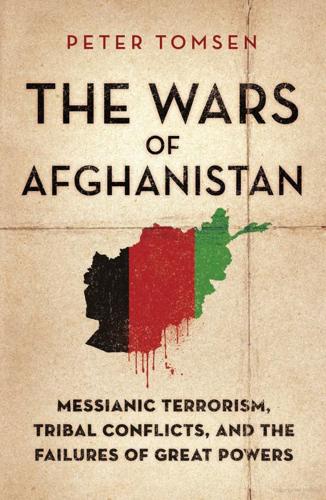
The Wars of Afghanistan
by
Peter Tomsen
Published 30 May 2011
He had been Musharraf’s ISI chief from 2005 to 2007, in charge of the reorganization of the Taliban and the first major Taliban offensives back into Afghanistan from Pakistani territory beginning in 2005. Jones and Panetta showed Kayani and his ISI Director, Ahmad Shuja Pasha, photographs and other evidence on Shahzad, the son of a retired general in the Pakistani Air Force. The documents linked Shahzad to the Pakistani Taliban.33 They failed to budge Kiyani much beyond permitting more drone strikes against the Pakistani Taliban in North Waziristan.34 Nor did their appeals reduce Taliban attacks against the Afghan government and coalition troops inside Afghanistan. America’s Grand Delusion was apparent during Secretary of State Clinton’s July 18–19, 2010, visit to Islamabad for a round of U.S.
…
On the positive side, Obama has targeted the beginning of American withdrawal, thus giving the Afghan government and people an incentive to take over ownership of Afghanistan’s future. The U.S.-led coalition is growing the size of Afghan forces so they can take over security responsibilities. More rhetorical pressure has been put on Islamabad. The administration has significantly increased the number of drone strikes against Pakistani Taliban and al-Qaeda leaders in the central zone of the Frontier with good results. More attention has been paid to limiting civilian casualties in Afghanistan, and there has been a major increase in economic assistance and a greater civilian presence. The operation to kill bin Laden in Pakistan was a spectacular success.
…
They will be critical to ensuring ANSF success after the transfer of combat responsibility is completed. U.S. and coalition specialists in these categories should remain in-country, partnered with Afghan units, to support ANSF and American combat forces while the latter depart Afghanistan. Continue the drone strikes against al-Qaeda and other terrorist training bases on the lawless Frontier. These bases are training terrorists to attack the United States and other countries. The drone operations have been highly effective in degrading al-Qaeda’s leadership and that of its allies and their capabilities to attack the United States and its friends and allies.

Our Robots, Ourselves: Robotics and the Myths of Autonomy
by
David A. Mindell
Published 12 Oct 2015
“I don’t use the word ‘drone,’” said AUVSI president Michael Toscano. “There’s a Hollywood expectation of what a drone is. Most of it is military; most of it is very fearful, hostile.” He was responding to an immediate political threat: outside the convention hall protesters objected to U.S. “drone” strikes and to the prospect of domestic drones snooping on private lives. “The key word is the word ‘system.’ That’s the word we hope the public will understand,” Toscano said. “There is a human being in the system. The human being is what makes the system. When you say the word ‘drone,’ you don’t think of a human being in control.”

Thinking Machines: The Inside Story of Artificial Intelligence and Our Race to Build the Future
by
Luke Dormehl
Published 10 Aug 2016
Artificial Intelligence will also be responsible for the disruption of many professions and livelihoods over the years to come, although this will also create new, previously unimagined opportunities for human workers. There are also those who will criticise the use of machine intelligence in war, whether it is airborne drone strikes or land-based robotic soldiers. In this latter capacity is a machine like Google’s ‘Big Dog’, a four-legged robot canine capable of carrying around 400 lbs of equipment – although the US Marines are presently holding off on using it because of its noisy petrol-powered engine. Barring some other Singularity-style catastrophic risk, for the majority of people the most pressing AI issue is the assault on privacy which has accompanied the rise of entities like Google.
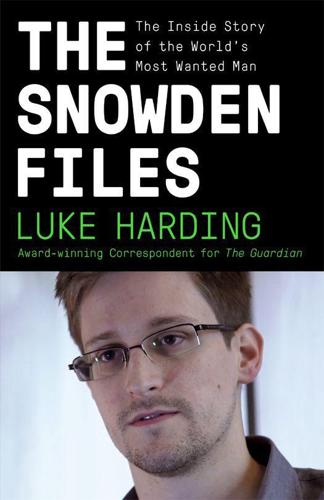
The Snowden Files: The Inside Story of the World's Most Wanted Man
by
Luke Harding
Published 7 Feb 2014
Professionally, though, Greenwald is a different creature: adversarial, remorseless, sardonic and forensic. He is a relentless pricker of what he regards as official US hypocrisy. Greenwald has been a waspish critic of the George W Bush administration, and of Obama. He is scathing of Washington’s record. Citizens’ rights, drone strikes, foreign wars, the US’s disastrous engagement with the Muslim world, Guantanamo Bay, America’s ‘global torture regime’ – all have been subjects for Greenwald’s Swiftian pen. In long, sometimes torrential posts, he has chronicled the US government’s alleged crimes around the world. Greenwald’s outspoken views on privacy make him arguably America’s best-known critic of government surveillance.

The Geek Feminist Revolution
by
Kameron Hurley
Published 1 Jan 2016
Anyone with any knowledge of the military, or who pays attention to how the media talks about war, has likely caught on to this. We don’t kill “people.” We kill “targets.” (Or japs or gooks or ragheads.) We don’t kill “fifteen-year-old boys” but “enemy combatants.” (Yes, every boy fifteen and over killed in drone strikes now is automatically listed as an enemy combatant. Not a boy. Not a child.) And when we talk about “people” we don’t really mean “men and women.” We mean “people and female people.” We talk about “American Novelists” and “American Women Novelists.”1 We talk about “Teenage Coders” and “Lady Teenage Coders.”2 And when we talk about war, we talk about soldiers and female soldiers.

Worth Dying For: The Power and Politics of Flags
by
Tim Marshall
Published 21 Sep 2016
CHAPTER 1 THE STARS AND THE STRIPES ‘There is not a thread in it but scorns self-indulgence, weakness and rapacity.’ Charles Evans Hughes, US Secretary of State 1921–5 Supporters of the banned organization Jamaat-ud-Dawa burn the Stars and Stripes in Quetta, Pakistan, in May 2016, protesting against a US drone strike on Pakistani soil. O SAY, CAN YOU SEE, BY THE DAWN’S EARLY LIGHT? IN THE USA the answer is an emphatic yes. From dawn to dusk America is a riot of red, white and blue. The flag flies from government buildings, atop supermarkets and car showrooms, from the roof of the grandest mansion to the humblest white-picket-fenced homestead, and from the log cabin to the White House.

Rebel Ideas: The Power of Diverse Thinking
by
Matthew Syed
Published 9 Sep 2019
And so by not considering ways in which women’s lives differ from men’s, both on and offline, Gild’s coders inadvertently created an algorithm with a hidden bias against women.’ 6 https://hbr.org/2019/06/why-you-should-create-a-shadow-board-of-younger-employees 7 https://www.npr.org/2015/09/14/440215976/journalist-says-the-drone-strike-that-killed-awlaki-did-not-silence-him Footnotes 1 Collective Blindness FN1 This was partly about the fear that gay staff, particularly those who had not come out, might be subject to blackmail. FN2 These studies are suggestive but not yet conclusive. It might not be diversity driving success, but the other way around.

Scotland’s Jesus: The Only Officially Non-Racist Comedian
by
Frankie Boyle
Published 23 Oct 2013
There are the literal meanings of words and then there are the doctrinal meanings. The doctrinal meanings are what things are understood to mean within the system and are often different from literal meanings. So, for example, ‘terrorism’ literally means something done to terrorise the general population. Yet Britain and the US terrorise civilians every day with drone strikes and so forth, but we don’t call this ‘terrorism’. The doctrinal meaning of ‘terrorism’ is that it only includes acts against us, not by us – a pretty important shift of meaning. I saw this recently when the comedian Stewart Lee wrote an article titled ‘Where are all the right-wing stand-ups?’ Lee’s career since he got his own show is a bit like that episode where Father Ted gets an award and uses his speech to bitterly settle scores with everyone he’s ever met.

Enemies and Neighbours: Arabs and Jews in Palestine and Israel, 1917-2017
by
Ian Black
Published 2 Nov 2017
Despite the unilateral character of the disengagement, PA-Israeli security co-ordination was arranged between Mohammed Dahlan, Nasser Youssef, now the PA interior minister, and the Israeli defence minister Shaul Mofaz, who were used to working together against Hamas – and others. High-level discussions had been held that summer about the assassination of Hassan al-Madhoun, a Fatah commander with links to the rebellious al-Aqsa Martyrs Brigades, with an explicit Israeli request to the Palestinians that he be killed. Madhoun eventually died in an Israeli drone strike in November. It was a sign of changing times that the Shin Bet reported afterwards that his replacement as al-Aqsa leader was heavily influenced by Hamas.28 Security liaison between the PA and Israel – personified by Dahlan – was portrayed by Hamas supporters as collaboration with the enemy. Hamas was doing well, noted one independent pundit, because for the last four years the lives of Palestinians had been dominated by three Gs: guns, gates and guards.
…
Hamas was accused of assisting jihadis in an incident in which eighteen Egyptian soldiers were killed in Sinai. Egypt’s ‘deep state’, instinctively suspicious of Islamists of all stripes, had not changed. ‘Operation Pillar of Defence’ began on 14 November with another assassination, that of the powerful Hamas military commander Ahmed Jaabari in an Israeli drone strike which incinerated his car on a quiet side street, followed by the immediate killing of a collaborator suspected of having betrayed him. It ended eight days later with an Egyptian-brokered ceasefire that at least prevented another full-scale IDF ground invasion: 162 Gazans, including 37 children, were killed; Israel lost 3 civilians and 1 soldier.

Four Battlegrounds
by
Paul Scharre
Published 18 Jan 2023
The Breakfast Club was the name for a group of colonels that were supposed to be the “acolytes,” as Bob described them, for the department’s efforts to reinvigorate its technological advantage against Russia and China. Bob asked them for a problem AI might be able to solve, and they pointed to the military’s voluminous amounts of video footage from drones. Despite the public attention on drone strikes, the military’s primary use for drones is for intelligence, surveillance, and reconnaissance, or ISR. The demand was insatiable. The military had steadily grown its airborne ISR capacity for nearly two decades running and was on track to operate ninety round-the-clock patrols worldwide of mid-sized drones such as the MQ-9 Reaper by 2019.
…
Overhead surveillance from drones was a key component of this counter-network approach, allowing intelligence analysts to monitor terrorist activity, track their movements, and map the connections between bombs, bomb makers, suppliers, financiers, and other parts of the bomb-making enterprise. Once identified, facilitators could be taken out with drone strikes or raids by special operators. Gorgon Stare allowed the Air Force to record video over a whole city, a major expansion of their intelligence collection capacity, but the Air Force still needed intel analysts to watch the video. Colonel Brown explained, “The challenge, as you can imagine, seeing most of the city at once . . . .

Elon Musk
by
Walter Isaacson
Published 11 Sep 2023
“We initially gave the Ukrainians free service for humanitarian and defense purposes, such as keeping up their hospitals and banking systems,” she says. “But then they started putting them on fucking drones trying to blow up Russian ships. I’m happy to donate services for ambulances and hospitals and mothers. That’s what companies and people should do. But it’s wrong to pay for military drone strikes.” Shotwell began negotiating a contract with the Pentagon. SpaceX would continue to provide another six months of free service to the terminals that were being used for humanitarian purposes, but it would no longer provide free service to ones used by the military; the Pentagon should pay for that.
…
And not just wants, but does more than anybody else for this. After his exchange with Fedorov, Musk felt frustrated. “How am I in this war?” he asked me during a late-night phone conversation. “Starlink was not meant to be involved in wars. It was so people can watch Netflix and chill and get online for school and do good peaceful things, not drone strikes.” In the end, with Shotwell’s help, SpaceX made arrangements with various government agencies to pay for increased Starlink service in Ukraine, with the military working out the terms of service. More than 100,000 new dishes were sent to Ukraine at the beginning of 2023. In addition, Starlink launched a companion service called Starshield, which was specifically designed for military use.
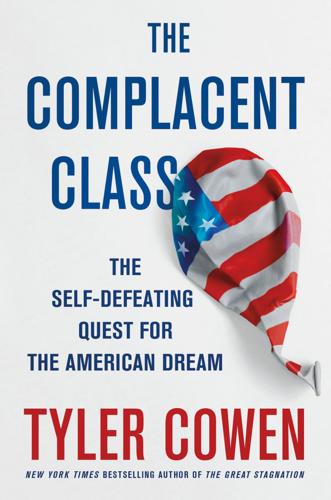
The Complacent Class: The Self-Defeating Quest for the American Dream
by
Tyler Cowen
Published 27 Feb 2017
The end result is likely to be that we lose our capacity to resolve them at all, whether today, tomorrow, or any other time in the future. Since Libya, we’ve seen a similar logic play itself out in Syria and Iraq: again, some U.S. military involvement on uncertain terms and with uncertain explicit authorization from Congress. Across the broader world, how many drone strikes in Pakistan or Yemen does the American government have to run before it might be the case that, at least by the standards of an earlier America, a congressional vote would be required for an explicit declaration of war? My guess is we’ll never find out. It’s not that we’re too divided, as in some cases of government gridlock; rather it’s that we, taken collectively, just don’t seem to care enough to force a definite resolution.

Our Final Invention: Artificial Intelligence and the End of the Human Era
by
James Barrat
Published 30 Sep 2013
Like natural selection, we choose solutions that work first, not best. Stuxnet is an example of that. So are autonomous killing drones. With DARPA funds, scientists at Georgia Tech Research Institute have developed software that allows unmanned vehicles to identify enemies through visual recognition software and other means, then launch a lethal drone strike against them. All without a human in the loop. One piece I read about it includes this well-intentioned sop: “Authorizing a machine to make lethal combat decisions is contingent upon political and military leaders resolving legal and ethical questions.” I’m reminded of the old saw, “When was a weapon ever invented that wasn’t used?”

Flash Boys: A Wall Street Revolt
by
Michael Lewis
Published 30 Mar 2014
In twelve months I know whether I need to look for a job.” Brad thought that their bid to create an example of a fair financial market—and maybe change Wall Street’s culture—could take longer and prove messier. He expected their first year to feel more like nineteenth-century trench warfare than a twenty-first-century drone strike. “We’re just collecting data,” he said. “You cannot make a case without data. And you don’t have data unless you have trades.” Even Brad agreed: “It’s over when we run out of money.” On the first day, they traded 568,524 shares. Most of the volume came from regional brokerage firms and Wall Street brokers that had no dark pools—the Royal Bank of Canada and Sanford Bernstein.

The Slow Fix: Solve Problems, Work Smarter, and Live Better in a World Addicted to Speed
by
Carl Honore
Published 29 Jan 2013
On its own, no algorithm has ever solved a global health problem. No impulse buy has ever turned around a life. No drug has ever cured a chronic illness. No box of chocolates has ever mended a broken relationship. No educational DVD has ever transformed a child into a baby Einstein. No TED Talk has ever changed the world. No drone strike has ever killed off a terrorist group. It’s always more complicated than that. Everywhere you look – health, politics, education, relationships, business, diplomacy, finance, the environment – the problems we face are more complex and more pressing than ever before. Piss-poor performance is no longer an option.

New Dark Age: Technology and the End of the Future
by
James Bridle
Published 18 Jun 2018
Over time, GPS has come to anchor a huge number of contemporary applications and become another of the invisible, unquestioned signals that modulate everyday life – another of those things that, more or less, ‘just works’. GPS enables the blue dot in the centre of the map that folds the entire planet around the individual. Its data directs car and truck journeys, locates ships, prevents planes flying into one another, dispatches taxis, tracks logistics inventories and calls in drone strikes. Essentially a vast, space-based clock, the time signal from GPS satellites regulates power grids and stock markets. But our growing reliance on the system masks the fact that it can still be manipulated by those in control of its signals, including the United States government, which retains the ability to selectively deny positioning signals to any region it chooses.26 In the summer of 2017, a series of reports from the Black Sea showed deliberate interference with GPS occurring across a wide area, with ships’ navigation systems showing them tens of kilometres off their actual position.

Who Will Defend Europe?: An Awakened Russia and a Sleeping Continent
by
Keir Giles
Published 24 Oct 2024
A simplistic view of victory is that it consists of a successful military campaign to evict the Russian invader from Ukraine. But that’s only one of the essential changes needed to ensure the safety of Ukraine and Europe over the long term. That’s partly because simple retreat to its own borders will not cause Russia to stop the war, or to stop missile and drone strikes and attacks by conventional and unconventional means from behind its new front line. Liberating Ukraine’s overrun territories and the people there suffering under savage Russian occupation would on its own be a huge achievement and is essential – but strictly in terms of ending the fighting, it is no better than a ceasefire or peace agreement at the current front line if Russia remains undeterred and has no incentive to change its objectives.
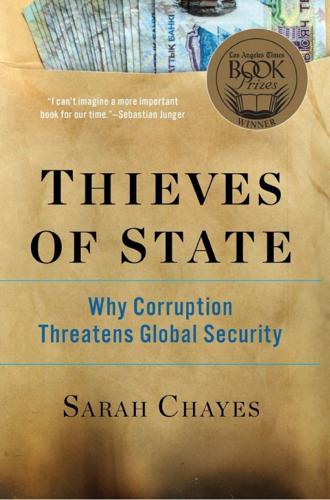
Thieves of State: Why Corruption Threatens Global Security
by
Sarah Chayes
Published 19 Jan 2015
Other Al Qaeda publications dissect the details of public corruption scandals, such as a 2006 Saudi deal to buy seventy-two Eurofighter jets, which allegedly included BAE Systems’ gift of a lavish honeymoon for the daughter of Saudi Prince Bandar bin Sultan, then secretary general of the UN Security Council.34 Through application of the “command responsibility” principle that served as the basis for convicting King Charles I, that figures in so many Mirrors for Princes, and that explains why Afghans hold Washington responsible for the Karzai government’s behavior, Bin Laden and other senior Al Qaeda figures blamed the United States for the corruption of their own rulers. Abd al-Rahman Atiya, killed in a drone strike in 2011, conceded that the 9/11 attacks had been launched because of hatred for some aspects of Western culture, but the main rationale was the U.S. role enabling Arab kleptocracies. Yes we hate the corruptive financial lifestyle that does not please God . . . But . . . the more important reason is their . . . appointing collaborative regimes for them in our countries.

After Zionism: One State for Israel and Palestine
by
Antony Loewenstein
and
Ahmed Moor
Published 14 Jun 2012
By this, we mean that we stand in solidarity with the Palestinian people. Increasingly, however, as Israel’s occupation becomes globalised, the people of the earth – favela dwellers, Occupy Wall Street protesters, those that resist the exploitation of their labour and resources, women and child workers in the global factory, victims of remote-controlled drone strikes by missiles fired from Las Vegas – are literally becoming Palestinians. Don’t think what happened to the people of Gaza remains with them alone. Whether through armies, security agencies or your local police, the road from Gaza leads directly to your door. Without deflecting attention from the actual conflict “on the ground” in Palestine and the struggle for Palestinian rights, a lot is riding on the just resolution of the Israel/Palestine conflict: the prospect of regional and world peace, to be sure, but beyond that the possibility of replacing the militarism and exploitation on which the world system is presently based with a more human reality of human rights, inclusiveness, economic justice and peace.

Pirates and Emperors, Old and New
by
Noam Chomsky
Published 7 Apr 2015
We are outnumbered 15 to 1. If might did make right they would sweep over the United States and take what we have. We have what they want.” So we must “defend freedom” by destroying Vietnam, to defend ourselves from their onslaught against us.4 The reasoning is hardly different when President Obama launches drone strikes to murder people suspected of perhaps planning to harm us some day. The principle is also lucidly expressed in scholarship. In his inquiry into the historical roots of George W. Bush’s “preemptive war” against Iraq (nothing was “preempted,” but put that aside), the noted Cold War historian John Lewis Gaddis traces “Bush’s framework for fighting terrorism [to] the lofty, idealistic tradition” established by his hero John Quincy Adams, the grand strategist who was the intellectual author of Manifest Destiny.

Mindwise: Why We Misunderstand What Others Think, Believe, Feel, and Want
by
Nicholas Epley
Published 11 Feb 2014
That seemed to be precisely what happened after the United States invaded Iraq in 2003. “The concept of ‘shock and awe,’ ” said retired Pakistani general Talat Masood, “could drive moderate and uncommitted civilians toward anti-Americanism.” One of the most popular songs in Pakistan in 2007, in a region being hit by ten drone strikes per week, included the lines “America’s heartless terrorism,/Killing people like insects,/But honor does not fear power.”28 Shock and awe seems like a poor strategy for fighting warriors who love their cause as much as we love ours. The American military followed up with efforts to “win the hearts and minds” of Afghans and Iraqis, but the reality of parochial altruism means that this strategy came too late.

I, Warbot: The Dawn of Artificially Intelligent Conflict
by
Kenneth Payne
Published 16 Jun 2021
Western states have developed a technologically sophisticated way of war, using weapons that are (when functioning correctly) highly precise and discriminate. All the same, difficult choices have to be made, using this awkward blend of deontological and consequentialist logics. The movie Eye in the Sky revolves around this sort of ethical dilemma—a drone strike on a terrorist hideout is about to happen, when into view comes a winsome young girl, selling bread. Should the attack go ahead regardless that she will be killed? Adding to the drama, it looks from surveillance footage as if the terrorists are about to launch an imminent attack. Should you kill the small child?

The Loop: How Technology Is Creating a World Without Choices and How to Fight Back
by
Jacob Ward
Published 25 Jan 2022
“One of them was drawing a caricature of prophet Muhammad,” says Hamid. “Another is Sharia law in non-Muslim lands. Stuff about Kashmir and Palestine. That stuff is the low-hanging fruit of sacred values.” The non-sacred values, which provoke a more measured response, “were US military occupation in Muslim lands, drone strikes, whether there should be Islamic teaching or sacred food in their kids’ schools.” In effect, Hamid says, the stuff that actually affects the participants’ day-to-day lives doesn’t fire up the most powerful decision-making systems in their brains. “Sacred values are more broad, abstract, transcendent,” he says.

Hiding in Plain Sight: The Invention of Donald Trump and the Erosion of America
by
Sarah Kendzior
Published 6 Apr 2020
Alexandra Jaffe, “Trump in 2007: ‘I’m Excited’ for Housing Market Crash,” NBC News, May 23, 2016, https://www.nbcnews.com/politics/2016-election/trump-2007-i-m-excited-housing-market-crash-n578761. 5. Michal Kranz, “‘Why Did You Wait?’: Trump Reportedly Asked the CIA Why It Paused for Target to Walk Away from His Family Before Striking,” Business Insider, April 6, 2018, https://www.businessinsider.com/trump-cia-drone-strike-terrorist-families-2018-4. 6. Yamiche Alcindor and Julie Hirschfeld Davis, “Soldier’s Widow Says Trump Struggled to Remember Sgt. La David Johnson’s Name,” New York Times, October 23, 2017, https://www.nytimes.com/2017/10/23/us/politics/soldiers-widow-says-trump-struggled-to-remember-sgt-la-david-johnsons-name.html. 7.

Upgrade
by
Blake Crouch
Published 6 Jul 2022
They built flu vaccines for clinical trials, prior to the final-phase product moving into mass production for the market. Of course, that was all before Lower Manhattan flooded. “Maybe this is a mistake,” Edwin said. “What? This raid?” “You have no idea what you’re walking into. People are going to die. I could probably get authorization for a drone strike. Hit the building before dawn. Just fucking bring it down.” “I’ve heard estimates that ten thousand people live in Lower Manhattan.” “There’d be some collateral damage.” “And we’d never know for sure that we got her. Or the virus she built. I want eyes on her.” One forty Broadway was an International Style building of glass and black steel, its initial construction completed 101 years ago.

The End of Secrecy: The Rise and Fall of WikiLeaks
by
The "Guardian"
,
David Leigh
and
Luke Harding
Published 1 Feb 2011
Michel’s agency also set up a meeting with Paul Greengrass, acclaimed director of The Bourne Ultimatum, with a view to him turning Assange’s life-story into a secret-agent escapade. The book, WikiLeaks Versus the World: My Story, was scheduled for release in April 2011 – an ambitious deadline. Another piece of good news was the diminishing prospect that Assange would personally become the victim of some kind of vengeful US drone-strike. The US department of justice had issued secret subpoenas on 14 December for the Twitter accounts of Manning, Assange and his friends. This led to unwelcome publicity when Twitter robustly went to court and got the subpoena unsealed. Icelandic MP and WikiLeaks supporter Birgitta Jónsdóttir made a political fuss.

Superforecasting: The Art and Science of Prediction
by
Philip Tetlock
and
Dan Gardner
Published 14 Sep 2015
Obama may have justifiably more confidence that the basketball judgments were driven by hard data on past performance whereas the terrorism judgments appear to have been plucked from thin air. The following sorts of evidence could resolve this issue: (1) Is Obama as precise in talking about clearly repetitive events in national security (e.g., drone strikes) as he is about sports? (2) Would policy makers in general give up their “prejudice” against probability judgments in less repeatable domains if they knew these judgments are just as reliable as those in more repeatable domains? Unfortunately, testing the latter hypothesis will be impossible as long as policy makers see no value in collecting probability judgments of seemingly unique events, less still in assessing their accuracy. 4.
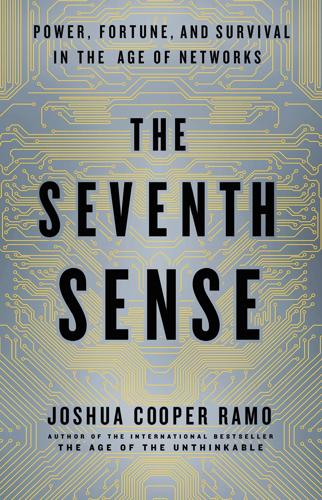
The Seventh Sense: Power, Fortune, and Survival in the Age of Networks
by
Joshua Cooper Ramo
Published 16 May 2016
If the statesman’s task of finding peace is like trying to balance teacups one upon the other, Chinese want to know: Is it windy? Where were the teacups made? Just how will they fit together? Westerners tended to focus on piling the cups. The problem at hand was always defined in the most direct possible way: Remove Saddam. Drone-strike the terrorists. Stop the financial crisis. The plan was: Just balance the teacups. It was the rare Western statesman who saw that the table on which the cups sat was missing a leg, or who felt an oncoming breeze kicking up. Some said the Chinese instinct to study the environment first had its roots deep in Chinese culture.
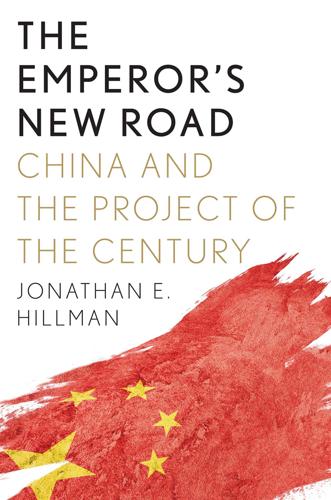
The Emperor's New Road: How China's New Silk Road Is Remaking the World
by
Jonathan Hillman
Published 28 Sep 2020
They were taking khat, grown in the Kenyan highlands, to sell in Somalia, just one hundred kilometers up the coast. Lamu’s proximity to Somalia is why it also hosts a U.S. military facility, which is located just miles from the new port. The facility, Camp Simba, is used for training East African security forces as well as supporting drone strikes and other counterterrorism missions into Somalia and Yemen. Since the base was established in 2004, it has expanded to become one of the largest U.S. facilities in Africa. The facility includes a long runway, expanded over the years, that can accommodate C-130s and other large aircraft.118 In January 2020, Somalia’s al-Shabaab militant group attacked the facility, killing three Americans and destroying several aircraft and military vehicles before being repelled.

The Undertow: Scenes From a Slow Civil War
by
Jeff Sharlet
Published 21 Mar 2023
The details of the Gulf War don’t really matter now, three decades on, just that “the aggression” marked the beginning: the long war in which as a young woman Ashli would serve in both Iraq and Afghanistan. Two “theaters” out of her eight deployments in the various fronts and rearguards of the forever war that will appear to end in 2021, nine months after she is gone. (And yet the drone strikes continue. The war abides.) “New shit has come to light,” declares the Dude, but it never does, because in this movie the plot is not the point. There is no point, just absurdity sprawling across the dead map of American myth. The exhaustion of genre. Noir, Western, musical, three great American story forms, and then their dissolution via paranoid thriller, itself reduced to less than a speck of meaning.

Reamde
by
Neal Stephenson
Published 19 Sep 2011
What feedback she did get from London suggested that the value of the information they were getting was so high that they now wished that Abdallah Jones would pursue a very lengthy career of blowing things up, or preparing to, in Xiamen, just so that they could go on milking him. Reading the foreign newspapers, Olivia saw occasional reports of Predator drone strikes in Waziristan and could not help getting the impression that the stuff she was sending back to London was directly correlated with some of those. She was running one of the most high-value installations in the global war on terror. And she was the only person who could run it. The operation was a colossal success—much more important than whatever now-forgotten job they’d originally wanted her to do.
…
But they hadn’t been able to construct a sensible narrative as to why Jones, given his own personal business jet, would choose to land it there. Nothing against Canada, of course, which all agreed was a perfectly lovely country, but there simply wasn’t anything in it that would make for a sufficiently juicy target to make the journey worth it for a man like Jones. If Canada had been selling arms to Israel and pounding Pakistan with drone strikes, Jones would take delight in knocking over the CN Tower or car-bombing a hockey game, but as matters stood he would have to get into the United States or else make a laughingstock of himself. Getting across that border at a legitimate crossing would, of course, be out of the question. He would have to sneak across somewhere.
…
“Figure out what to do with this traveling circus.” RELUCTANT AS SHE was to give the jihadists credit for anything, Zula had to admit that they showed commendable restraint when it came to talking on the radio. Perhaps it was a Darwinian selection thing. All the jihadists who failed to observe radio silence had been vaporized by drone strikes. There was no walkie-talkie or phone chatter from the time Jones left the camp with his three comrades until two and a half hours later, when Ershut and Jahandar trudged up the hill, looking winded but satisfied. In the meantime, the other members of the expedition—everyone except for Zakir and Sayed—breakfasted, prayed, and packed.

Augmented: Life in the Smart Lane
by
Brett King
Published 5 May 2016
In fact, she said instead of buying her a car I should get her an Uber account. 7 Volvo Press Release, https://www.media.volvocars.com/global/en-gb/media/pressreleases/167975/us-urged-to-establish-nationwide-federal-guidelines-for-autonomous-driving 8 https://www.indiegogo.com/projects/actually-fly-the-m400x-skycar-into-history 9 Separation refers to the distance maintained between aircraft while flying. The opposite of separation is, of course, an in-air collision, which is generally not positive. 10 Bureau of Investigative Journalism Report. October 2014 Update: US Covert Actions in Pakistan, Yemen and Somalia. 11 A. Buncombe, “Pakistani court declares US drone strikes in the country’s tribal belt illegal,” Independent, 9 May 2013. 12 http://www.nest.com Chapter 9 Smart Banking, Payments and Money “The root problem with conventional currency is all the trust that’s required to make it work. The central bank must be trusted not to debase the currency, but the history of fiat currencies is full of breaches of that trust.”

#Republic: Divided Democracy in the Age of Social Media
by
Cass R. Sunstein
Published 7 Mar 2017
Siyed Rizwan Farook and Tashfeen Malik had exchanged private messages about jihad and martyrdom, and after the attack Malik posted a note on Facebook on behalf of herself and her husband pledging allegiance to Abu Bakr al-Baghdadi, a leader of ISIL.16 Though rare, “lone-wolf” terrorist attacks do occur, and online platforms help to radicalize people, including potential and actual attackers.17 One study finds that after 9/11, online social networks played a primary role in radicalization.18 It concludes that at the root of this change is technology. With the rise of Internet chat rooms, conspiracy websites, Facebook and Twitter, online activists can connect scattered people who are worried about everything from drone strikes to a one-world government and the pending imposition of martial law in the United States and tell them that they do not worry in isolation. Moreover, radicalization is often caused by an affinity with online sympathizers.19 ISIL has also sought to recruit people to travel to its self-proclaimed caliphate in Syria and Iraq.
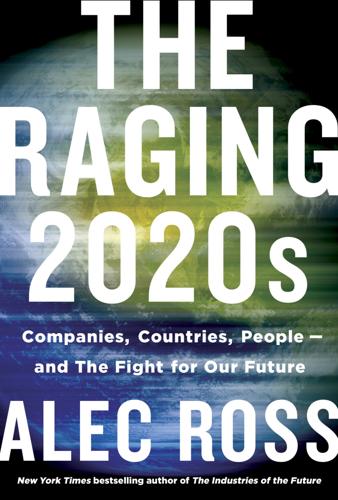
The Raging 2020s: Companies, Countries, People - and the Fight for Our Future
by
Alec Ross
Published 13 Sep 2021
The system would save intelligence officers from the tedious task of analyzing the footage frame by frame. This is the sort of geospatial analysis software that would fall under the government’s January 2020 export controls. Within months, Google employees began protesting the project, which they argued would help the Pentagon better target its drone strikes. In April 2018, some 3,100 employees signed a letter demanding that Google stop participating “in the business of war.” Soon after, Google declined to renew its contract with the Pentagon. Chris Lynch disagreed with that decision. Google may have seen it as its own line in the sand. But as Lynch saw it, Google gave up an opportunity to directly influence how the Pentagon uses artificial intelligence.
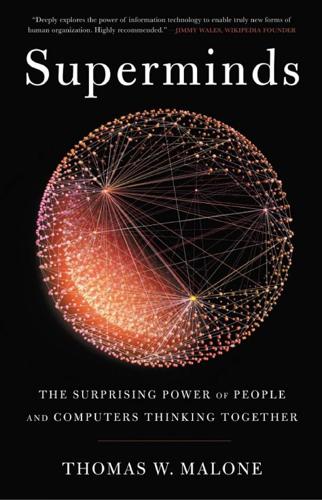
Superminds: The Surprising Power of People and Computers Thinking Together
by
Thomas W. Malone
Published 14 May 2018
Asaro, “The Liability Problem for Autonomous Artificial Agents,” in Ethical and Moral Considerations in Non-Human Agents: Papers from the 2016 AAAI Spring Symposium (Palo Alto, CA: AAAI Press, 2016), https://www.aaai.org/ocs/index.php/SSS/SSS16/paper/download/12699/11949. 21. Richard Kelley, Enrique Schaerer, Micaela Gomez, and Monica Nicolescu, “Liability in Robotics: An International Perspective on Robots as Animals,” Advanced Robotics 24, no. 13 (2010): 1,861–71. 22. “US Drone Strike Killings in Pakistan and Yemen ‘Unlawful,’” BBC News, October 23, 2013, http://www.bbc.com/news/world-us-canada-24618701. CHAPTER 20 1. Robert Van Gulick, “Consciousness,” in Stanford Encyclopedia of Philosophy (Spring 2014 edition), ed. Edward N. Zalta (Stanford, CA: Stanford University, 2014), http://plato.stanford.edu/archives/spr2014/entries/consciousness; Bernard J.

Don't Be Evil: How Big Tech Betrayed Its Founding Principles--And All of US
by
Rana Foroohar
Published 5 Nov 2019
Just as the businesses that figured out how to use mechanized equipment in the industrial age were the ones to thrive, those who are able to make use of this data do the equivalent in our time. And Google and Facebook have figured out how to use all these data points to target ads with the granular precision of a drone strike on an ISIS commander emerging for a cigarette from a bunker somewhere in Syria at 3:13 P.M. So far, this data has been obtained via computers and mobile devices. But with the rise of personal digital assistants like Amazon’s Alexa, Google’s Home Mini, and Apple’s Siri—now in a third of American homes, with triple-digit sales growth a year—the human voice is the new gold.

Permanent Record
by
Edward Snowden
Published 16 Sep 2019
I couldn’t shake the idea that I’d wasted the last decade of my life. The previous ten years had been a cavalcade of American-made tragedy: the forever war in Afghanistan, catastrophic regime change in Iraq, indefinite detentions at Guantánamo Bay, extraordinary renditions, torture, targeted killings of civilians—even of American civilians—via drone strikes. Domestically, there was the Homeland Securitization of everything, which assigned a threat rating to every waking day (Red–Severe, Orange–High, Yellow–Elevated), and, from the Patriot Act on, the steady erosion of civil liberties, the very liberties we were allegedly fighting to protect. The cumulative damage—the malfeasance in aggregate—was staggering to contemplate and felt entirely irreversible, and yet we were still honking our horns and flashing our lights in jubilation.

Traffic: Genius, Rivalry, and Delusion in the Billion-Dollar Race to Go Viral
by
Ben Smith
Published 2 May 2023
Benny was following the traffic where it led him, optimizing himself. In February of 2013, he hit a rich vein that drew a particular rise out of conservatives: The hypocrisy of Democrats and the liberal media. In a post called “7 Things Democrats Would Have Freaked Out about If Bush Had Done Them,” he mocked Democrats’ silence on things like drone strikes in Afghanistan. And because BuzzFeed’s culture encouraged riffing, experimentation, and improvement, it was no surprise to see Matt Stopera’s little brother, Dave, do a different riff on the theme with a colleague Tanner Greenring. But Dave’s did something new: it broke Facebook. The post was titled “26 Ways President Obama Has Completely Ruined the Country,” and it was a joke, drawing on a meme of the moment in which the president was to blame for everything, from grills that were too slippery for the burgers to stay on to cookies too large to be dipped in milk.
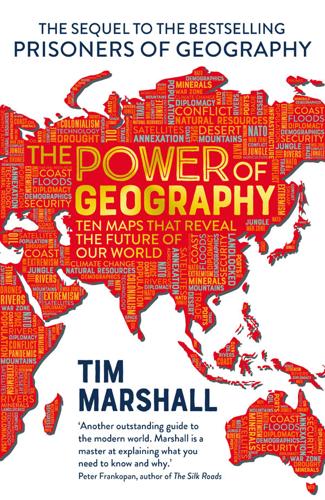
The Power of Geography: Ten Maps That Reveal the Future of Our World
by
Tim Marshall
Published 14 Oct 2021
However, the collapse of the ceasefire triggered a new wave of violence and, as Syria’s Kurds carved out a semi-autonomous region along the Turkish border, the PKK were emboldened. The Turkish army went back on the offensive, imposing curfews in rural areas for months at a time, sweeping through regions and intimidating civilians to prevent them giving shelter to PKK guerrillas. Tank fire, artillery and drone strikes, along with Special Forces operations, have squeezed the PKK’s ability to move around, and it has suffered several thousand fatalities while the Turkish military losses are over a thousand. The renewed violence cost Erdoğan Kurdish support at the ballot box, and to shore up his vote share he began to court ultra-nationalist Turks and took a sharply hostile stance towards Kurdish political parties.

The Silk Roads: A New History of the World
by
Peter Frankopan
Published 26 Aug 2015
Many thousands of servicemen gave their lives, while more than 150,000 US veterans are listed as suffering from wounds and injuries that rank them as being at least 70 per cent disabled.70 This comes on top of the hundreds of thousands of Afghan and Iraqi civilians killed or wounded in military action or – by virtue of being in the wrong place at the wrong time in cross-fire, drone strikes or car bombings – as ‘collateral damage’.71 Financial costs galloped upwards at an astonishing pace. One recent survey estimates the cost of engagement in Iraq and Afghanistan as being as high as $6 trillion – or $75,000 for every American household once long-term medical care and disability compensation is taken into account.
…
Efforts to control the media in Iraq post-Saddam, where the concept of freedom would be trumpeted by journalists using ‘approved US Government information’ to underline ‘hopes for a prosperous democratic future’, evoked memories of Soviet-style commissars sanctioning stories based not on reality but on a dream.76 On top of that come extra-judicial renditions, torture on an institutional scale and drone strikes against figures deemed – but not necessarily proven – to be threats. It says a great deal about the sophistication and pluralism of the west that these issues can be debated in public, and that many are horrified by the hypocrisy of the message of the primacy of democracy on the one hand and the practice of imperial power on the other.

The Road Not Taken: Edward Lansdale and the American Tragedy in Vietnam
by
Max Boot
Published 9 Jan 2018
FOR ALL the superficial resurgence of “Lansdalism” in the twenty-first century, there were also strong countervailing pressures that led the United States to eschew the kind of political action that the “Ugly American” had advocated. The costly and drawn-out wars in Iraq and Afghanistan led many policymakers to prefer drone strikes and Special Operations raids to kill terrorist leaders. Yet while such operations were more precise and lethal than ever before, groups such as Al Qaeda and the Taliban were able to survive the loss of their leaders. As Lansdale had warned, “kinetic” action could not be decisive in a war among the people.
…
.: Diem’s address to, 296 LBJ given authority in Vietnam by, 431–32 Congress for Cultural Freedom, 127 Congressional Research Service, 190 Connally, John, 419 Connell, William, 441–42, 443, 520 Connery, Sean, 389 Constituent Assembly, elections for, 288–89, 497–500, 501 Constitution, U.S., 281, 529 containment, 93–94 contras, 590 Coolidge, Calvin, 17 Cooper, Chester L., 453, 551 Coordinator of Information (COI), 34 Corregidor, 51, 163 Corsican Brotherhood, 216 Cottrell, Sterling J., 397 Coughlin, Charles, 21 counterinsurgency, 6, 16, 110, 168, 244–45, 319, 362, 368, 380, 594 army’s failure to focus on, 412 army’s throwing out of lessons of, 599–600 coining of term, 321–22 political side of, 129 Westmoreland’s lack of interest in, 430 CounterSpy, 584 Cowen, Myron, 107, 130, 134 Craig, William H., 386, 387 Cranbrook Academy, 468 Creel, George, 28 crisis of confidence, 565 Cronkite, Walter, 520 Crook, George, 55 Crosby, Bing, 136, 567 Cruzen, Richard, 163 Cuba, xxvii, 49, 232, 280, 376–99, 410 EGL’s concept of operation on, 383–84 EGL’s plans for revolt in, 384–85 exiles from, 480 U.S. agents in, 392–93 see also Bay of Pigs invasion; Operation Mongoose Cuban Missile Crisis, 395–97 Currey, Cecil, xlvii, 588, 596, 597 Czechoslovakia, 429, 528, 533 Dai Viet, 229, 283 North Vietnamese penetration of, 230 Dalat, Vietnam, 294, 295 Dallek, Robert, 348 Da Nang, Vietnam, 215, 450, 499 Dang Tuyet Mai, 477 Dauphin, Claude, 292 Davis, Spencer, 73 EGL informed of Vietnam coup by, 414 EGL’s eulogy delivered by, 596 D-Day, 39, 319, 369, 430 Declaration of Honolulu, 487 Declaration of Independence, xlv, 11, 178, 497, 529, 559, 580, 598 Defense Department, U.S., xlviii, 393 State Department vs., 338 see also Pentagon Defense Intelligence Agency, 358, 413 De Gasperi, Alcide, 136, 137 Degushi, Kinoje, 59–60 Delaney, Michael, 506–7 Deliver Us from Evil (Dooley), 223–25 democracy, xlv, 539–40 Democracy Party, Vietnam, 540 Democratic Alliance, Philippines, 76 Democratic National Convention: of 1948, 439 of 1968, 533 Democratic Party, U.S., 139 in election of 1968, 522 democratization, 280–81 “Denounce the Communists” campaign, 283 Denver, Colo., 91–93, 100 Denver Post, 96 Denver Public Library, 92 détente, 386, 584 Detroit, Mi., 5, 26 Deutch, John, xlix Deutch, Michael J., 466, 467, 484, 494, 495 Devlin, Martha, 516 Dewey, Thomas E., 88 Dickerman, Sherwood, 551 Dien Bien Phu, Vietnam, xlix, 185–86, 193, 514 creation of, 184 education of, 206 fall of, 193–94, 196, 208, 295 fortification of, 185 diGenova, Joseph, 582 Dinh Thach Bich, 528 Directory, 478 Disneyland, 302 Disraeli, Benjamin, 147, 602 District Eight, 506, 519, 523–24 Dixiecrat Party, U.S., 439 Dodd, Christopher, 453 Dodd, Thomas, 452–53 Doi Moi, 598 Dominican Republic, xxvii, 504–5 domino theory, 340 Donovan, Bill, 34, 35, 36–37, 99, 151, 164, 271 grave of, 595 Dooley, Thomas, 223–25, 227 Dornan, Bob, 589 Douglas, Helen Gahagan, 552 Douglas, William O., 207, 208 Dower, John, 56 Downey, John “Jack,” 231–32 Draper, Theodore, 377 Draper, William Henry, Jr., 327 Draper Committee, 327–30, 415 drone strikes, 601 Duarte, José Napoleón, 590 Dulles, Allen, 99, 101, 143, 148, 159, 191, 353, 421, 603 background of, 150–52 and Battle of Saigon, 265 Bay of Pigs planned by, 376–77 in Defense meeting on Vietnam, 190 EGL advised by, 153 EGL sent to Saigon by, 194 EGL’s Philippine holiday approved by, 284 EGL’s protest about Diem to, 289 Heath replaced by, 237 National Security Medal won by, 164 and North Vietnamese refugees, 222 and Philippine election of 1953, 160 and uprising against Diem, 264 Dulles, Eleanor, 152 Dulles, John Foster, 148, 150, 152, 190, 194 and Battle of Saigon, 268, 269 death of, 330 and EGL’s duty in Vietnam, 190–91 EGL’s Philippine holiday approved by, 284 EGL’s protest about Diem to, 289 grave of, 595 Heath replaced by, 237 on need for support for Diem, 273 on Orient’s need for single head of government, 282 and plan to make Diem ceremonial figure, 265 on uprising against Diem, 264 Dunkirk, N.Y., 25–26, 69 Dunn, John Michael, xxxvi Duong Van Duc, 248, 249, 250 Duong Van Minh (Big Minh), 428 in charge of Vietnam, xxxvii in coup against Diem, xxxvi, 568 Diem’s promotion of, xxxiv made president, 426, 568 replacement as president of, 445 Durbrow, Elbridge, 374 background of, 337, 350 desire for transfer of Nhu, 336–37 replacement of, 355 Durdin, F.

Radicals Chasing Utopia: Inside the Rogue Movements Trying to Change the World
by
Jamie Bartlett
Published 12 Jun 2017
He started reading up about Islamic State online, and—the authorities now suspect—got involved with extreme Islamists who ran a stall in Birmingham city centre. He started becoming more religiously observant, and sometimes more confrontational. ‘Something had been ignited in him,’ his mother said later. Six months after leaving the United Kingdom, Rasheed was killed near Sinjar by shrapnel from a coalition drone strike.1 Rasheed was one of an estimated 800 UK nationals—and thousands of other Muslims living in Western democracies—who have been lured to Iraq or Syria by a very simple but powerful narrative: that the West hates you, and as a Muslim you have a religious duty to come to Syria and join Islamic State.
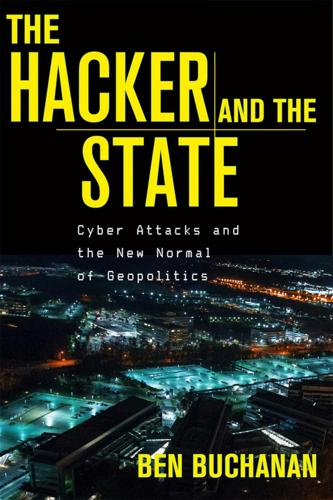
The Hacker and the State: Cyber Attacks and the New Normal of Geopolitics
by
Ben Buchanan
Published 25 Feb 2020
The content of their messages helped the Five Eyes better track and find them. So, too, did the existence of the communications themselves, which analysts call metadata—who is talking to whom, from where, and so on. With enough intercepted metadata, analysts can assemble a detailed picture of members of a terrorist group, enabling the targeting of drone strikes or commando raids. As Michael Hayden, the former director of the NSA and CIA, noted, “We kill people based on metadata.”74 Whatever the goal, this combination of passive collection and corporate access plus massive storage and rich analytical tools gives intelligence analysts a lot of power. When they develop new questions, the signals intelligence system can provide answers.

Fire and Fury: Inside the Trump White House
by
Michael Wolff
Published 5 Jan 2018
I think Brennan is a second-rate guy,” Bannon said, dismissing the FBI director and the CIA director. “The White House right now is like Johnson’s White House in 1968. Susan Rice”—Obama’s National Security Advisor—“is running the campaign against ISIS as a National Security Advisor. They’re picking the targets, she’s picking the drone strikes. I mean, they’re running the war with just as much effectiveness as Johnson in sixty-eight. The Pentagon is totally disengaged from the whole thing. Intel services are disengaged from the whole thing. The media has let Obama off the hook. Take the ideology away from it, this is complete amateur hour.
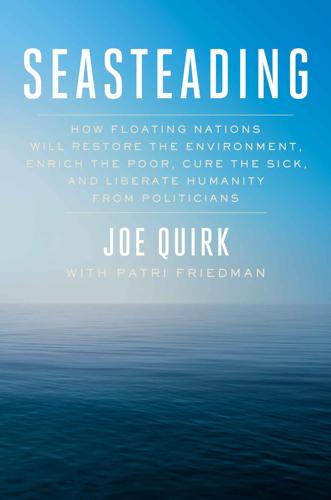
Seasteading: How Floating Nations Will Restore the Environment, Enrich the Poor, Cure the Sick, and Liberate Humanity From Politicians
by
Joe Quirk
and
Patri Friedman
Published 21 Mar 2017
They are afraid of the mighty nations that control continents and crush by confiscation. Citizens of existing nations must endure wars they can’t refuse to fund, hurricanes they can’t dodge, earthquakes and tornadoes they can’t predict, and politicians whose schemes they can’t refuse to participate in. The dynamic nation that Patri and Joe reside in already orders drone strikes on wedding parties, spies on innocent people who aren’t even citizens, initiates more than a hundred SWAT team raids every day against nonviolent citizens, imprisons one out of every hundred adults, and runs up debts that today’s toddlers have to pay back with their future labor. These are the sorts of intractably worsening problems that emerge from a century of no market competition among governments.

Rich White Men: What It Takes to Uproot the Old Boys' Club and Transform America
by
Garrett Neiman
Published 19 Jun 2023
I asked him what training he provided. “Mostly I trained them to snitch,” Ben said. “We would offer them money and hospital treatments for their sick relatives.… I felt sorry for them, but what can you do.” Similar to how the United States contends that murderous cops, military prison torturers, and drone strike operators are vessels of democracy, here was an Israeli soldier who saw coercive abuses of power as justified under the pretense of safety and security. Hearing about the Palestinians who had been coerced into giving up their friends to save their loved ones horrified me. And I felt sadness for the soldier.

The Coming Wave: Technology, Power, and the Twenty-First Century's Greatest Dilemma
by
Mustafa Suleyman
Published 4 Sep 2023
It’s not Hollywood fireworks; it’s the purported surveillance camera footage of a group of white policemen caught on tape beating a Black man to death. Sermons from the radical preacher Anwar al-Awlaki inspired the Boston Marathon bombers, the attackers of Charlie Hebdo in Paris, and the shooter who killed forty-nine people at an Orlando nightclub. Yet al-Awlaki died in 2011, the first U.S. citizen killed by a U.S. drone strike, before any of these events. His radicalizing messages were, though, still available on YouTube until 2017. Suppose that using deepfakes new videos of al-Awlaki could be “unearthed,” each commanding further targeted attacks with precision-honed rhetoric. Not everyone would buy it, but those who wanted to believe would find it utterly compelling.

Radical Technologies: The Design of Everyday Life
by
Adam Greenfield
Published 29 May 2017
As for the commonplace assertion that those who have nothing to hide have nothing to fear, consider the sentiment often attributed to Richelieu, and salient whatever its actual provenance: “If you give me six lines written by the hand of the most honest of men, I will find something in them with which to hang him.” This has never been truer than it is in our age of metadata, when analysis of large bodies of data may turn up correlations we weren’t ourselves aware of, when drone strikes and acts of extraordinary rendition have been authorized for the most glancing and seemingly coincidental constellations of fact. So, yes: the internet of things is a sprawling and complex domain of possibility, and it would be foolish to avoid investigating it energetically and in good faith.

Cybersecurity: What Everyone Needs to Know
by
P. W. Singer
and
Allan Friedman
Published 3 Jan 2014
The recipes for explosives are readily available on the Internet, as are terrorist-provided designs for IEDs for use across conflict zones from Iraq to Afghanistan. This diffusion of terror teachings has been hugely important as these groups have found fewer and fewer training spaces free from global drone strikes. The transfer of knowledge is not just about the “how” of a terror attack, but also the “who” and the “where” on the targeting side. Groups use cyberspace as a low-cost, low-risk venue to gather intelligence in ways they could only dream about a generation ago. For example, no terrorist group has the financial resources to afford a spy satellite to scope out targets with pinpoint precision, let alone the capability to build and launch one into space.
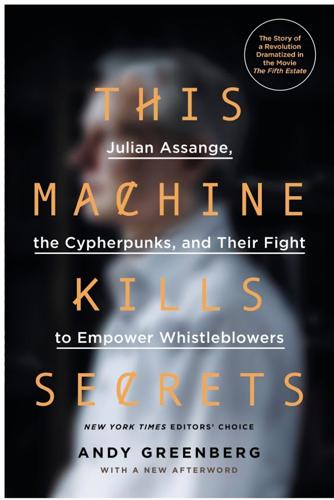
This Machine Kills Secrets: Julian Assange, the Cypherpunks, and Their Fight to Empower Whistleblowers
by
Andy Greenberg
Published 12 Sep 2012
The Collateral Murder video was only the overture to Assange’s magnum opus of leaks. Just days after Jacob Appelbaum’s call-to-arms speech at the HOPE conference, the first wave hit: seventy-six thousand documents from the Afghan War, detailing every significant action over nine years of skirmishes and pitched battles, every casualty and drone strike gone awry. The Pentagon wasn’t surprised by the blowout leak—it had already read the chat logs of its prime suspect and thrown him in a military stockade. But there was little else the most powerful military in the world could do in its escalating battle with WikiLeaks other than issue rhetoric.

The Desert and the Sea: 977 Days Captive on the Somali Pirate Coast
by
Michael Scott Moore
Published 23 Jul 2018
* Full name Xalane Ma’lin Dare, though he tried to go by “Mohammed.” * “The heart of the wise is in the house of mourning, but the heart of fools is in the house of mirth” (Ecclesiastes 7:4). Not that I felt wise. * Seen two years later in Eye in the Sky, a fictional thriller about an American drone strike in Eastleigh, the Somali neighborhood of Nairobi. * Pronounced dersi. * Pronounced hero. * From Prisoner Without a Name, Cell Without a Number. * Now the Hostage Support Partnership, not part of the U.N. * Hassan Sheikh Mohamud became president of the Federal Republic of Somalia in 2012

Your Face Belongs to Us: A Secretive Startup's Quest to End Privacy as We Know It
by
Kashmir Hill
Published 19 Sep 2023
Wessler, thirty-seven, had been in college when 9/11 happened and had been alarmed by the way law enforcement targeted the Muslim community afterward. When he first joined the ACLU, he worked on national security cases; he represented a detainee at Guantánamo Bay and sued the U.S. government after it killed three American citizens, including a sixteen-year-old, in drone strikes in Yemen. More recently, he had switched to the issue of surveillance; he had helped convince the Supreme Court that people’s location history, as gleaned from phone carriers, deserved legal protection; and he was part of the ACLU legal team representing Robert Williams in Detroit. Wessler and Eidelman were troubled by what Clearview had built and how it might allow the state to track anyone whose face was captured by a camera, including antigovernment protesters.
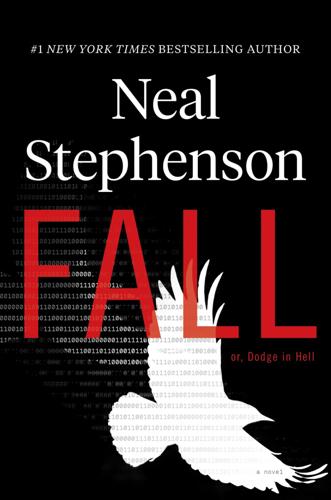
Fall; Or, Dodge in Hell
by
Neal Stephenson
Published 3 Jun 2019
As their ferry had churned away from the terminal, Richard had perched Sophia on a stool and helped her get the lenses aimed down at the ferry, where Zula and Csongor, after parking their car belowdecks, had ascended to the topmost deck and stationed themselves at the stern to wave up at her. The whole affair had been coordinated via text message and had come off with the precision of a drone strike, all to the delight of little Sophia. Richard had been unaccountably depressed by it, or perhaps “ruminatively melancholy” was a better way of putting it. Forty-eight hours of intensive grandniece/great-uncle bonding had ensued. In that short time Sophia’s apparatus of modern kiddom had permeated Richard’s apartment.
…
Trinh, who held his hands up as if under arrest and shook his head. Stan Peterson—who was, in fact, a lawyer—was there half an hour later. He had canceled all of his appointments, he wanted it known. He did not announce this in a self-congratulatory manner. He just wanted Zula to understand that the full resources of Argenbright Vail, up to and including drone strikes and private rocket ships, were at her and the family’s disposal. “Alice is on a plane,” Zula told him. “She’ll be here late tonight.” Stan looked a little nonplussed. “Richard’s sister-in-law,” Zula explained. “She’ll be the executor?” Zula shook her head no and glanced at the will. “She’s just the most senior next of kin, I guess you would say.

Slowdown: The End of the Great Acceleration―and Why It’s Good for the Planet, the Economy, and Our Lives
by
Danny Dorling
and
Kirsten McClure
Published 18 May 2020
George Monbiot, “Goodbye, Kind World,” 10 August 2004, https://www.monbiot.com/2004/08/10/goodbye-kind-world/. 18. Drones controlled by men sitting in the United States target people on the other side of the planet. These weapons are used not only in war, but also in countries that are not officially at war with the United States. During his presidency, George W. Bush ordered 57 drone strikes in Pakistan, Somalia, and Yemen. His successor, Barack Obama, ordered 563—including one in Yemen that erroneously killed fifty-five civilians, including twenty-one children (ten of them under the age of five) and twelve women, five of whom were pregnant. Jessica Purkiss and Jack Serle, “Obama’s Covert Drone War in Numbers: Ten Times More Strikes Than Bush,” Bureau of Investigative Journalism, 17 January 2017, https://www.thebureauinvestigates.com/stories/2017-01-17/obamas-covert-drone-war-in-numbers-ten-times-more-strikes-than-bush. 19.
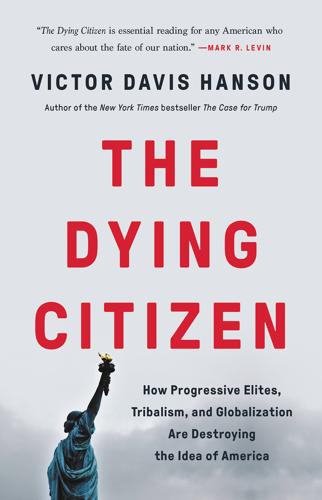
The Dying Citizen: How Progressive Elites, Tribalism, and Globalization Are Destroying the Idea of America
by
Victor Davis Hanson
Published 15 Nov 2021
In 2010, he offered a surreal redefinition of jihad (i.e., “Nor do we describe our enemy as ‘jihadists’ or ‘Islamists’ because jihad is a holy struggle, a legitimate tenet of Islam, meaning to purify oneself or one’s community”). In 2011, Brennan’s official statements about the Osama bin Laden raid were contradictory and had to be withdrawn or modified. Also in 2011, Brennan, then the country’s chief counterterrorism adviser, had sworn to Congress under oath that scores of drone strikes abroad had not killed a single noncombatant—at precisely the time when both the president and the CIA had received numerous reports of civilian collateral deaths. In 2014, John Brennan, by then CIA director, again lied, and once more emphatically, under congressional oath. He claimed that the CIA had not illegally accessed the computers of US Senate staffers who were then exploring a CIA role in torturing detainees (“As far as the allegations of the CIA hacking into Senate computers, nothing could be further from the truth.… We wouldn’t do that.

Surveillance Valley: The Rise of the Military-Digital Complex
by
Yasha Levine
Published 6 Feb 2018
Willing to accept the consequences,” the right-wing talk show personality (@glennbeck) tweeted on June 9, 2013, https://twitter.com/glennbeck/status/343816977929867265. 49. Bamford, “Edward Snowden: The Untold Story.” 50. Barton Gellman, “Edward Snowden, After Months of NSA Revelations, Says His Mission’s Accomplished,” Washington Post, December 23, 2013. 51. Scott Shane, “Documents on 2012 Drone Strike Detail How Terrorists Are Targeted,” New York Times, June 24, 2015. 52. Dave Cole, “We Kill People Based on Metadata,” New York Review of Books, May 10, 2014, http://www.nybooks.com/daily/2014/05/10/we-kill-people-based-metadata/. 53. Micah Lee, “Edward Snowden Explains How to Reclaim Your Privacy,” The Intercept, November 12, 2015, https://theintercept.com/2015/11/12 /edward-snowden-explains-how-to-reclaim-your-privacy/. 54.
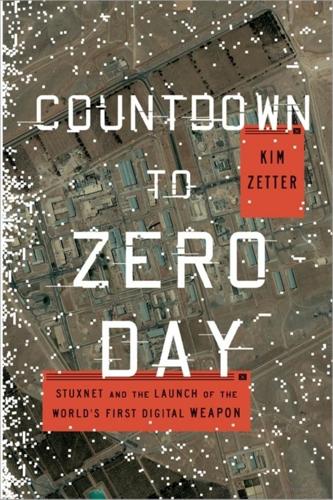
Countdown to Zero Day: Stuxnet and the Launch of the World's First Digital Weapon
by
Kim Zetter
Published 11 Nov 2014
The documents describe NSA elite hacker forces at Fort Meade and at regional centers in Georgia, Texas, Colorado, and Hawaii, who provide US Cyber Command with the attack tools and techniques it needs for counterterrorism operations. But the government cyberwarriors have also worked with the FBI and CIA on digital spy operations, including assisting the CIA in tracking targets for its drone assassination campaign. To track Hassan Ghul, an associate of Osama bin Laden who was killed in a drone strike in 2012, the NSA deployed “an arsenal of cyber-espionage tools” to seize control of laptops, siphon audio files, and track radio transmissions—all to determine where Ghul might “bed down” at night, according to Snowden documents obtained by the Washington Post.30 And since 2001, the NSA has also penetrated a vast array of systems used by al-Qaeda associates in Yemen, Africa, and elsewhere to collect intelligence it can’t otherwise obtain through bulk-data collection programs from internet companies like Google and Yahoo or from taps of undersea cables and internet nodes.

Terms of Service: Social Media and the Price of Constant Connection
by
Jacob Silverman
Published 17 Mar 2015
The ACLU looks really good, but we punch above our weight. We’re a relatively small organization. There aren’t really very many organizations doing the work we do, as far as cutting across the digital and [physical world] boundaries.” Indeed, the ACLU’s slate is a full one, tackling cases and policies related to anything from mass incarceration to drone strikes, the drug war to immigration, LGBT rights to CIA torture. Despite any limitations it might have in terms of funding or number of personnel, the ACLU is well served by this expansive portfolio, particularly when its representatives, such as Crockford, acknowledge that many of these issues remain interconnected.

Homo Deus: A Brief History of Tomorrow
by
Yuval Noah Harari
Published 1 Mar 2015
‘Nothing, just a flash of light,’ said the left hemisphere, and the patient immediately giggled again, covering her mouth with her hand. ‘Why are you laughing then?’ they insisted. The bewildered left-hemisphere interpreter – struggling for some rational explanation – replied that one of the machines in the room looked very funny.13 It’s as if the CIA conducts a drone strike in Pakistan, unbeknown to the US State Department. When a journalist grills State Department officials about it, they make up some plausible explanation. In reality, the spin doctors don’t have a clue why the strike was ordered, so they just invent something. A similar mechanism is employed by all human beings, not just by split-brain patients.
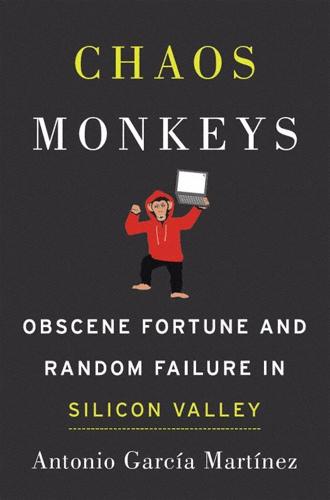
Chaos Monkeys: Obscene Fortune and Random Failure in Silicon Valley
by
Antonio Garcia Martinez
Published 27 Jun 2016
Nobody thinks AT&T should be shut down when criminals use the phone system to commit a crime, or the US Postal Service regulated when a terrorist sends a bomb through the mail. But the average Facebook user considers the service to be some sort of frivolous toy, rather than a social utility on par with running water, and therefore thinks we can just shut it down if it seems to harbor any hint of criminality. Like the CIA not exactly advertising the drone strike that vaporized a vehicle in some godforsaken land and prevented the next terrorist tragedy from happening, Facebook keeps quiet all it does for users to protect them from humanity’s worst. Whine if you must about the odd erroneously flagged post, but spare a thought for the Facebook security team, those dedicated geeks in the watchtower.
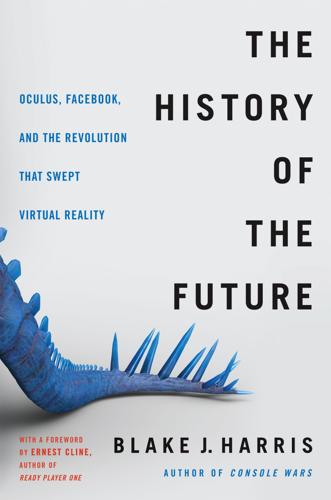
The History of the Future: Oculus, Facebook, and the Revolution That Swept Virtual Reality
by
Blake J. Harris
Published 19 Feb 2019
“No: Gary Johnson.” “What about in 2008?” “I was sixteen!” Luckey responded. Chen cracked up and Luckey continued. “But my point is that just because they voted for Obama, I don’t take that to mean they agree with him 100 percent. I’m not, like, oh, you voted for Obama? I didn’t realize you supported civilian drone strikes!” Luckey had guessed that Chen would be more open-minded than his colleagues; and he knew that guess had been correct when Chen followed up not with the usual tsk-tsk, but with a genuine ask of why. “Give it to me,” Chen said. “Give me the case for Trump.” “First,” Luckey said, picking up his phone, “I want to show you something.”

Aftershocks: Pandemic Politics and the End of the Old International Order
by
Colin Kahl
and
Thomas Wright
Published 23 Aug 2021
Iraqi security forces had to contend with the possibility of contagion within their own ranks, and they were diverted away from counterterrorism missions to support government responses to COVID-19, including curfews and restrictions on vehicle movements.39 As they did, U.S. troops and other coalition forces supporting Iraqi military operations also pulled back. American forces had already been consolidating onto fewer bases due to escalating tensions with Iran. These tensions got worse in the aftermath of Trump’s decision to authorize a drone strike on Iranian general Qasem Soleimani, the head of the IRGC–Quds Force (Iran’s elite covert action wing), on January 3. The strike, which was in retaliation for rocket attacks by Iranian-backed militia against bases hosting U.S. troops and the siege of the American embassy in Baghdad by pro-militia groups, was aimed at “restoring deterrence.”40 It did not.

How to Hide an Empire: A History of the Greater United States
by
Daniel Immerwahr
Published 19 Feb 2019
Lambeth, Air Power Against Terror: America’s Conduct of Operation Enduring Freedom (Santa Monica, CA, 2005), 95–96. “The planes” … “The American forces”: Lawrence, Messages to the World, 182. Drones have killed: Figures discussed in Chris Woods, “Understanding the Gulf Between Public and U.S. Government Estimates of Civilian Casualties in Covert Drone Strikes,” in Drones and the Future of Armed Conflict: Ethical, Legal, and Strategic Implications, ed. David Cortright, Rachel Fairhurst, and Kristen Wall (Chicago, 2015), 186. An excellent guide to drones is Peter L. Bergen and Daniel Rothenberg, eds., Drone Wars: Transforming Conflict, Law, and Policy (New York, 2015).

Future Crimes: Everything Is Connected, Everyone Is Vulnerable and What We Can Do About It
by
Marc Goodman
Published 24 Feb 2015
Singer’s seminal Wired for War: The Robotics Revolution and Conflict in the 21st Century (New York: Penguin Books, 2009). 11 In 2003: Mitch Joel, “The Booming Business of Drones,” Harvard Business Review, Jan. 4, 2013. 12 Today the United States: Michael C. Horowitz, “The Looming Robotics Gap,” Foreign Policy, May 5, 2014. 13 These machines are well armed: Craig Whitlock, “Drone Strikes Killing More Civilians Than U.S. Admits,” Washington Post, Oct. 22, 2013. 14 In 2011, it was estimated: David Axe, “One in 50 Troops in Afghanistan Is a Robot,” Wired, Feb. 7, 2011; Sharon Gaudin, “U.S. Military May Have 10 Robots per Soldier by 2023,” Computerworld, Nov. 14, 2013. 15 The company has also created: Mark Prigg, “Google-Owned ‘Big Dog’ Robot in First Live Trial with Marines,” Mail Online, July 14, 2014. 16 Other UGVs: “Cheetah Robot ‘Runs Faster Than Usain Bolt,’ ” BBC News, Sept. 6, 2012; “March of the Robots,” Economist, June 2, 2012. 17 Remote pilots sitting: “Rise of the Drones,” NOVA, PBS, Jan. 23, 2013. 18 UAVs have become central: Teal Group, “Teal Group Predicts Worldwide UAV Market Will Total $89 Billion,” June 17, 2013; Michael C.

Fall Out: A Year of Political Mayhem
by
Tim Shipman
Published 30 Nov 2017
The veteran inquisitor was at his most sneering, asking the prime minister if her U-turns – National Insurance, social care and an early election – would lead EU negotiators to conclude that she was a ‘blowhard who collapses at the first sign of gunfire’. Corbyn dealt better with the incoming fire. He refused to say that he would back a drone strike against a terrorist plotting overseas to attack the UK, dismissing it as a ‘hypothetical question’. Where May had been petrified before Paxman, Corbyn was playful. When the interviewer asked why, as a lifelong republican, his party’s manifesto was not openly seeking to abolish the monarchy, Corbyn leaned forward and smiled.

On the Edge: The Art of Risking Everything
by
Nate Silver
Published 12 Aug 2024
Outer space was supposed to be the next frontier, but the moon landing was in 1969 and there hasn’t been a comparable achievement since then. The American space shuttle program that brought us heroes like Kathryn Sullivan was discontinued in 2011—it’s no wonder that Elon Musk finds admirers for his ambitions of colonizing Mars. Even wars are increasingly fought remotely through drone strikes or precision missiles, reducing opportunities for physical bravery. Perhaps we should view Las Vegas as Erving Goffman saw it, as a last resort for unfulfilled demand for risk that might once have been channeled elsewhere. The poker room might not be the most productive outlet for the River’s energies, but at least your downside there is limited to the table stakes.

The Devil's Chessboard: Allen Dulles, the CIA, and the Rise of America's Secret Government
by
David Talbot
Published 5 Sep 2016
And though they never met, Dulles also provided a template for Bush regent Dick Cheney’s executive absolutism and extreme security measures in the name of national defense. These men, too, firmly believed that “patriotism set no bounds” on their power. Today, other faceless security bureaucrats continue to carry on Dulles’s work—playing God with drone strikes from above and utilizing Orwellian surveillance technology that Dulles could only have dreamed about—with little understanding of the debt they owe to the founding father of modern American intelligence. Dead for nearly half a century, Dulles’s shadow still darkens the land. Those who enter the lobby of CIA headquarters are greeted by the stone likeness of Allen Welsh Dulles.

I You We Them
by
Dan Gretton
But I’ve got a family at home, and I need to be there for my family, so I deal with it. I talk to my wife about – just, general terms about what’s happened, obviously I can’t go into specifics … Yeah, I might be a little bit off … maybe in a bit of a strange mood for a day or so. Yet what about the hundreds, perhaps thousands, of civilian casualties from these drone strikes, and all the families destroyed from 8,000 miles away? What about the 201 children killed in drone attacks just in the period between 2001 and 2012?fn4 Presumably, not even the Pentagon could class these as ‘combatants’. And although the effect on the operators of drones is disturbing, the impact on those targeted is truly terrifying – especially when those killed and maimed have nothing whatsoever to do with ‘terrorism’: Gul Nawaz, from North Waziristan, was watering his fields when he heard the explosion of drone missiles: ‘I rushed to my house when I heard the blast.

Days of Fire: Bush and Cheney in the White House
by
Peter Baker
Published 21 Oct 2013
The event was closed to reporters, but a transcript was provided to the author. 19 “I actually found my freedom”: Peter Baker, “Bush Dips a Toe Back into Washington,” New York Times, May 15, 2012, http://www.nytimes.com/2012/05/16/us/politics/george-w-bush-briefly-visits-washington.html. 20 “It was more like meeting”: Valerie Jarrett, author interview. 21 “carrying out Bush’s 4th term”: Ari Fleischer, Twitter message, June 6, 2013. He wrote: “Drone strikes. Wiretaps. Gitmo. O is carrying out Bush’s 4th term. Yet he attacked Bush 4 violating Constitution. # hypocrisy.” 22 “There’s no doubt that whatever”: Jay Winik, author interview. 23 “In retrospect, I probably”: George W. Bush, Decision Points, 259. 24 Seventy-one percent: Presidential Approval Ratings—George W.